FROG HAIR is similar to all the others BEFORE it goes through the molecular alteration process.
Molecular Alteration is the fundamental basis of Nanotechnology, which is a technology used to develop higher strength structural materials.
AFTER processing, the molecularly altered filaments have an unprecedented combination of:
- Flexibility
- Shock resistance
- Strength
- Abrasion resistance
- Low memory
In fact, it’s so unique, it’s patented!
FROG HAIR provides the angler with more accurate casts, natural presentations and greater fish fighting capability.
Try FROG HAIR – you’ll be glad you did!
Contact us for current inventory after visiting the Froghair website here.
Indicators come in many different styles that range from colorful putties, soft yarns, to foam press and stick discs. Each different type of indicator is not able to successfully fish all the varying types of water you will encounter along a stream, so knowing what works best and when will increase your odds of hooking and landing a lake run beauty.
The diversity of strike indicators available today is overwhelming to even the most experienced fly angler. For the most part five main types of indicators exist, and all of them work pretty well in the water conditions they were created for. The one you choose to use should be based on personal preference and the type of water you plan on fishing most.
Foam Indicators
Foam indicators over the last few years probably have been the most popular among fly anglers because of their durability, ease of sight, and simplicity of adjustment. Due to the buoyancy of the materials used in construction of cork or foam indicators, these indicators are the best for deep, fast water because they seem almost impossible to drown. These types of indicators slide onto the leader meaning you have to have the indicator in place before you attach your flies. Some of these indicators use a toothpick or small wedge of plastic jammed into the opening to hold things in place.
One disadvantage of this type of system is that the toothpick can cause tangles by catching the line when casting. Some of the newer models of foam indicators now incorporate different methods for attaching the indicators to the leader and for holding them in place, meaning no more cutting of the leader to attach indicators and less chance of fouling while casting. Another disadvantage of these foam indicators is that they can be hard to cast accurately and quietly due to wind resistance and their weight.
Pinch-on foam indicators have become popular in the last few years because of their small size and ease of use. These indicators are great for small stream fishing where long powerful casts are not being used to present flies — these types of casts usually peel these indicators from your leader. These indicators do not ride as high in the water column as other foam or cork indicators so using them in smaller waters with less current is ideal. Additionally the small size rarely spooks fish and can be presented very quietly.
One of the major disadvantages of this type of indicator system is that over time fish can become familiar with the indicators and spook as the indicator drifts overhead. Whether it be the bright color, or the shadow cast to fish by the high-floating indicator when fish start acting weary around your indicators changing things up and sizing down is the only way to go.
Yarn Indicators
Yarn indicators are simple tools for the avid angler, being composed of synthetic yarns or wool yarns. These are treated with a waterproofing agent that will allow the indicator to ride on the waters surface for hours on end. For most yarn indicators attachment comes by looping the leader material around the float in a slip knot type fashion. This type of attachment is great for quick readjustments needed in a day’s fishing. With the creation of Glo-Bug yarn or synthetic yarn — having a very visible indicator system is possible.
The big advantage of yarn indicators is that due to the special soft nature of the fibers in yarns, detecting very light strikes fish is easy. The yarn’s softness serves another purpose in making indicators less invasive and disturbing to weary trout. Use bright colors when fishing bigger waters with less finicky fish and subtle whites or blacks on small clear waters with spooky fish.
One downfall of this type of indicator system is that yarn is more wind-resistant than most foam indicators this makes it hard to present small flies accurately. Probably the biggest disadvantage of this type of indicator is that with larger flies or very fast currents the indicators can become pulled below the water’s surface making it hard to follow. In these instances switching to a different type of indicator system will make life easier.
Putty Indicators
Putty indicators are relatively new to the fly fishing community, and come in a wide variety of fluorescent colors that will catch your eye from across the room. This putty can be molded by your fingers to any point on the leader section and in any size necessary.
The advantages to this putty are that in does come in very bright colors making it easy to see, even at night with glow in the dark putty. Also this product can be removed from the line and reused at a later date. Since indicator putty can be applied in any size you can make tiny indictors that are necessary for fishing spooky fish. The disadvantages to using this putty is that compared to all other brands of indicators it is quite expensive. Also this putty does not hold to the leader very well so if you plan on long casts or rough conditions the likelihood of the putty holding to the leader is small.
Fly-line Indicators
Fly-line indicators are probably the oldest type of indicator on the market, have been available as early as the 70s. Scientific Anglers was the first company to make these types of indicators and they became especially useful for anglers who loved to nymph with small flies in shallow waters. These fly-line indicators are still available, but maybe a little hard to find. Attachment of these indicators is done by glue or by tying a double overhand knot in the leader butt. By sliding in these sections of line you can make an indicator system that works in a wide range of water depths.
By tying one fly line indicator at the butt section and two more along the leader section in even intervals this set up can help fly anglers track small nymphs, emergers easily. One of the major advantages of these indicators is that fish for the most part do not take notice to these types of indicators. Also these indicators do not effect presentation or casting of flies. The disadvantages of this type of indicator system come from the fact that at times in fast water or low light conditions it can be very hard to follow and you may miss strikes from fish. Since this indicator system is not always above surface anglers need to adjust and get used to watching an indicator beneath the surface.
Related Products
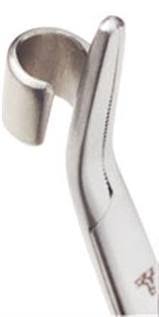 https://hooklineandsinker.ca/wp-content/uploads/2022/10/Dr-slick-slickrelease-clamp.jpeg
317
159
HLSAdmin
https://hooklineandsinker.ca/wp-content/uploads/2014/12/Steelheading-in-the-Snow-900-80-Not-Faded-Actual-1030x91.jpg
HLSAdmin2022-10-06 17:38:402022-10-06 17:38:40Dr. Slick SlickRelease Clamp
https://hooklineandsinker.ca/wp-content/uploads/2022/10/Dr-slick-slickrelease-clamp.jpeg
317
159
HLSAdmin
https://hooklineandsinker.ca/wp-content/uploads/2014/12/Steelheading-in-the-Snow-900-80-Not-Faded-Actual-1030x91.jpg
HLSAdmin2022-10-06 17:38:402022-10-06 17:38:40Dr. Slick SlickRelease Clamp https://hooklineandsinker.ca/wp-content/uploads/2022/10/Dr.-Slick-Split-Shot-Clamp.jpeg
498
650
HLSAdmin
https://hooklineandsinker.ca/wp-content/uploads/2014/12/Steelheading-in-the-Snow-900-80-Not-Faded-Actual-1030x91.jpg
HLSAdmin2022-10-06 17:33:092022-10-06 17:33:09Dr. Slick Split Shot Clamp
https://hooklineandsinker.ca/wp-content/uploads/2022/10/Dr.-Slick-Split-Shot-Clamp.jpeg
498
650
HLSAdmin
https://hooklineandsinker.ca/wp-content/uploads/2014/12/Steelheading-in-the-Snow-900-80-Not-Faded-Actual-1030x91.jpg
HLSAdmin2022-10-06 17:33:092022-10-06 17:33:09Dr. Slick Split Shot Clamp https://hooklineandsinker.ca/wp-content/uploads/2022/03/ClearDrift-Clear-Bobber-Stops-cdstops.jpg-copy.jpg
1000
1000
HLSAdmin
https://hooklineandsinker.ca/wp-content/uploads/2014/12/Steelheading-in-the-Snow-900-80-Not-Faded-Actual-1030x91.jpg
HLSAdmin2022-03-18 21:28:562022-03-18 21:28:56ClearDrift CD Steelhead Soft Bead & Bobber Stops
https://hooklineandsinker.ca/wp-content/uploads/2022/03/ClearDrift-Clear-Bobber-Stops-cdstops.jpg-copy.jpg
1000
1000
HLSAdmin
https://hooklineandsinker.ca/wp-content/uploads/2014/12/Steelheading-in-the-Snow-900-80-Not-Faded-Actual-1030x91.jpg
HLSAdmin2022-03-18 21:28:562022-03-18 21:28:56ClearDrift CD Steelhead Soft Bead & Bobber Stops https://hooklineandsinker.ca/wp-content/uploads/2022/01/Loon-Ergo-Quick-Release-Ultimate-Hook-Removal-Tool.jpeg
248
203
HLSAdmin
https://hooklineandsinker.ca/wp-content/uploads/2014/12/Steelheading-in-the-Snow-900-80-Not-Faded-Actual-1030x91.jpg
HLSAdmin2022-01-27 22:02:252022-04-18 13:17:25Loon Ergo Quick Release – The Ultimate Hook Removal Tool
https://hooklineandsinker.ca/wp-content/uploads/2022/01/Loon-Ergo-Quick-Release-Ultimate-Hook-Removal-Tool.jpeg
248
203
HLSAdmin
https://hooklineandsinker.ca/wp-content/uploads/2014/12/Steelheading-in-the-Snow-900-80-Not-Faded-Actual-1030x91.jpg
HLSAdmin2022-01-27 22:02:252022-04-18 13:17:25Loon Ergo Quick Release – The Ultimate Hook Removal Tool https://hooklineandsinker.ca/wp-content/uploads/2021/09/Patagonia-Wading-Staff-C.jpg
1300
1300
HLSAdmin
https://hooklineandsinker.ca/wp-content/uploads/2014/12/Steelheading-in-the-Snow-900-80-Not-Faded-Actual-1030x91.jpg
HLSAdmin2021-09-06 13:43:352021-09-06 13:53:11Patagonia Wading Staff
https://hooklineandsinker.ca/wp-content/uploads/2021/09/Patagonia-Wading-Staff-C.jpg
1300
1300
HLSAdmin
https://hooklineandsinker.ca/wp-content/uploads/2014/12/Steelheading-in-the-Snow-900-80-Not-Faded-Actual-1030x91.jpg
HLSAdmin2021-09-06 13:43:352021-09-06 13:53:11Patagonia Wading Staff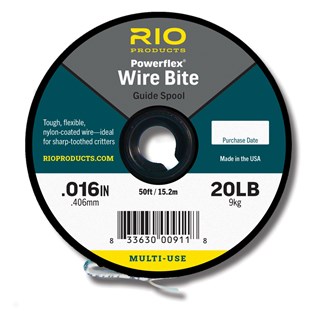 https://hooklineandsinker.ca/wp-content/uploads/2021/05/RIO-Powerflex-Wire-Bite-Tippet.jpg
320
320
HLSAdmin
https://hooklineandsinker.ca/wp-content/uploads/2014/12/Steelheading-in-the-Snow-900-80-Not-Faded-Actual-1030x91.jpg
HLSAdmin2021-05-23 21:05:042021-05-23 21:10:45RIO Powerflex Wire Bite Tippet
https://hooklineandsinker.ca/wp-content/uploads/2021/05/RIO-Powerflex-Wire-Bite-Tippet.jpg
320
320
HLSAdmin
https://hooklineandsinker.ca/wp-content/uploads/2014/12/Steelheading-in-the-Snow-900-80-Not-Faded-Actual-1030x91.jpg
HLSAdmin2021-05-23 21:05:042021-05-23 21:10:45RIO Powerflex Wire Bite Tippet https://hooklineandsinker.ca/wp-content/uploads/2021/05/Scientific-Anglers-Absolute-Predator-7X7-Knottable-Wire-absolute-predator-wire.jpg
900
900
HLSAdmin
https://hooklineandsinker.ca/wp-content/uploads/2014/12/Steelheading-in-the-Snow-900-80-Not-Faded-Actual-1030x91.jpg
HLSAdmin2021-05-23 20:51:352021-05-23 21:08:59Scientific Anglers Absolute Predator 7X7 Knottable Wire
https://hooklineandsinker.ca/wp-content/uploads/2021/05/Scientific-Anglers-Absolute-Predator-7X7-Knottable-Wire-absolute-predator-wire.jpg
900
900
HLSAdmin
https://hooklineandsinker.ca/wp-content/uploads/2014/12/Steelheading-in-the-Snow-900-80-Not-Faded-Actual-1030x91.jpg
HLSAdmin2021-05-23 20:51:352021-05-23 21:08:59Scientific Anglers Absolute Predator 7X7 Knottable Wire https://hooklineandsinker.ca/wp-content/uploads/2015/10/Fishing-Butler-Ultimate-Rod-Tie-Rod-Holders-AA.jpg
875
1712
HLSAdmin
https://hooklineandsinker.ca/wp-content/uploads/2014/12/Steelheading-in-the-Snow-900-80-Not-Faded-Actual-1030x91.jpg
HLSAdmin2015-10-10 23:16:402017-08-21 21:35:49Fishing Rod Ties / Fishing Rod Holders
https://hooklineandsinker.ca/wp-content/uploads/2015/10/Fishing-Butler-Ultimate-Rod-Tie-Rod-Holders-AA.jpg
875
1712
HLSAdmin
https://hooklineandsinker.ca/wp-content/uploads/2014/12/Steelheading-in-the-Snow-900-80-Not-Faded-Actual-1030x91.jpg
HLSAdmin2015-10-10 23:16:402017-08-21 21:35:49Fishing Rod Ties / Fishing Rod Holders https://hooklineandsinker.ca/wp-content/uploads/2016/08/Ferrule-Wax-BB.jpg
795
2198
HLSAdmin
https://hooklineandsinker.ca/wp-content/uploads/2014/12/Steelheading-in-the-Snow-900-80-Not-Faded-Actual-1030x91.jpg
HLSAdmin2016-08-10 23:48:152018-06-17 11:26:53Fishing Rod Ferrule Wax
https://hooklineandsinker.ca/wp-content/uploads/2016/08/Ferrule-Wax-BB.jpg
795
2198
HLSAdmin
https://hooklineandsinker.ca/wp-content/uploads/2014/12/Steelheading-in-the-Snow-900-80-Not-Faded-Actual-1030x91.jpg
HLSAdmin2016-08-10 23:48:152018-06-17 11:26:53Fishing Rod Ferrule Wax https://hooklineandsinker.ca/wp-content/uploads/2021/01/Bug-Bite-Thing-Suction-Tool-Logo.jpg
156
459
HLSAdmin
https://hooklineandsinker.ca/wp-content/uploads/2014/12/Steelheading-in-the-Snow-900-80-Not-Faded-Actual-1030x91.jpg
HLSAdmin2021-01-31 18:16:532021-01-31 18:24:48Bug Bite Thing Suction Tool
https://hooklineandsinker.ca/wp-content/uploads/2021/01/Bug-Bite-Thing-Suction-Tool-Logo.jpg
156
459
HLSAdmin
https://hooklineandsinker.ca/wp-content/uploads/2014/12/Steelheading-in-the-Snow-900-80-Not-Faded-Actual-1030x91.jpg
HLSAdmin2021-01-31 18:16:532021-01-31 18:24:48Bug Bite Thing Suction Tool https://hooklineandsinker.ca/wp-content/uploads/2021/01/MFC-Montana-Fly-Company-Filter-Fishing-Face-Mask-G.png
525
977
HLSAdmin
https://hooklineandsinker.ca/wp-content/uploads/2014/12/Steelheading-in-the-Snow-900-80-Not-Faded-Actual-1030x91.jpg
HLSAdmin2021-01-25 19:53:092022-04-18 13:18:21MFC Montana Fly Company Filter Fishing Face Mask
https://hooklineandsinker.ca/wp-content/uploads/2021/01/MFC-Montana-Fly-Company-Filter-Fishing-Face-Mask-G.png
525
977
HLSAdmin
https://hooklineandsinker.ca/wp-content/uploads/2014/12/Steelheading-in-the-Snow-900-80-Not-Faded-Actual-1030x91.jpg
HLSAdmin2021-01-25 19:53:092022-04-18 13:18:21MFC Montana Fly Company Filter Fishing Face Mask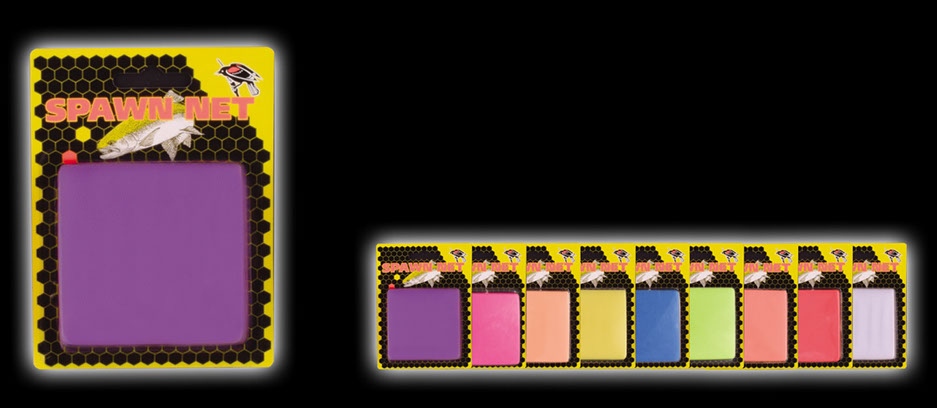 https://hooklineandsinker.ca/wp-content/uploads/2021/02/PRE-CUT-Blackbird-Spawn-Net-By-Redwing-Tackle.jpg
408
937
HLSAdmin
https://hooklineandsinker.ca/wp-content/uploads/2014/12/Steelheading-in-the-Snow-900-80-Not-Faded-Actual-1030x91.jpg
HLSAdmin2021-02-03 21:38:202022-04-18 13:18:54PRE-CUT Blackbird Spawn Net – By Redwing Tackle
https://hooklineandsinker.ca/wp-content/uploads/2021/02/PRE-CUT-Blackbird-Spawn-Net-By-Redwing-Tackle.jpg
408
937
HLSAdmin
https://hooklineandsinker.ca/wp-content/uploads/2014/12/Steelheading-in-the-Snow-900-80-Not-Faded-Actual-1030x91.jpg
HLSAdmin2021-02-03 21:38:202022-04-18 13:18:54PRE-CUT Blackbird Spawn Net – By Redwing Tackle https://hooklineandsinker.ca/wp-content/uploads/2020/10/Stonfo-Knot-Covers-H-1.jpg
800
800
HLSAdmin
https://hooklineandsinker.ca/wp-content/uploads/2014/12/Steelheading-in-the-Snow-900-80-Not-Faded-Actual-1030x91.jpg
HLSAdmin2020-10-19 18:18:442020-10-19 18:18:44Stonfo Knot Covers
https://hooklineandsinker.ca/wp-content/uploads/2020/10/Stonfo-Knot-Covers-H-1.jpg
800
800
HLSAdmin
https://hooklineandsinker.ca/wp-content/uploads/2014/12/Steelheading-in-the-Snow-900-80-Not-Faded-Actual-1030x91.jpg
HLSAdmin2020-10-19 18:18:442020-10-19 18:18:44Stonfo Knot Covers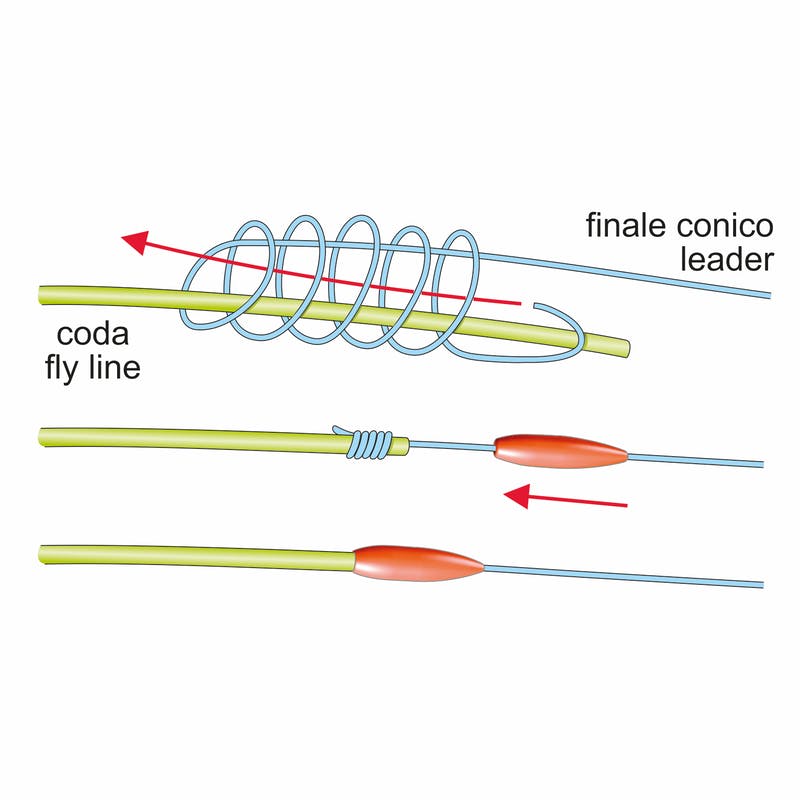 https://hooklineandsinker.ca/wp-content/uploads/2020/10/Stonfo-Knot-Covers-H.jpg
800
800
HLSAdmin
https://hooklineandsinker.ca/wp-content/uploads/2014/12/Steelheading-in-the-Snow-900-80-Not-Faded-Actual-1030x91.jpg
HLSAdmin2020-10-19 18:19:322020-10-19 18:35:01Stonfo Knot Covers
https://hooklineandsinker.ca/wp-content/uploads/2020/10/Stonfo-Knot-Covers-H.jpg
800
800
HLSAdmin
https://hooklineandsinker.ca/wp-content/uploads/2014/12/Steelheading-in-the-Snow-900-80-Not-Faded-Actual-1030x91.jpg
HLSAdmin2020-10-19 18:19:322020-10-19 18:35:01Stonfo Knot Covers https://hooklineandsinker.ca/wp-content/uploads/2020/09/Ahrex-flexistripper-Fly-Line-line-basket-C.jpg
927
1024
HLSAdmin
https://hooklineandsinker.ca/wp-content/uploads/2014/12/Steelheading-in-the-Snow-900-80-Not-Faded-Actual-1030x91.jpg
HLSAdmin2020-09-18 08:44:052020-09-18 08:44:05Ahrex FlexiStripper Fly Line Stripping Tray / Basket / Management System
https://hooklineandsinker.ca/wp-content/uploads/2020/09/Ahrex-flexistripper-Fly-Line-line-basket-C.jpg
927
1024
HLSAdmin
https://hooklineandsinker.ca/wp-content/uploads/2014/12/Steelheading-in-the-Snow-900-80-Not-Faded-Actual-1030x91.jpg
HLSAdmin2020-09-18 08:44:052020-09-18 08:44:05Ahrex FlexiStripper Fly Line Stripping Tray / Basket / Management System https://hooklineandsinker.ca/wp-content/uploads/2020/07/Stonfo-Nipper-A.jpg
800
800
HLSAdmin
https://hooklineandsinker.ca/wp-content/uploads/2014/12/Steelheading-in-the-Snow-900-80-Not-Faded-Actual-1030x91.jpg
HLSAdmin2020-07-07 19:47:522020-07-07 19:47:52Stonfo Nipper
https://hooklineandsinker.ca/wp-content/uploads/2020/07/Stonfo-Nipper-A.jpg
800
800
HLSAdmin
https://hooklineandsinker.ca/wp-content/uploads/2014/12/Steelheading-in-the-Snow-900-80-Not-Faded-Actual-1030x91.jpg
HLSAdmin2020-07-07 19:47:522020-07-07 19:47:52Stonfo Nipper https://hooklineandsinker.ca/wp-content/uploads/2020/04/Gamakatsu-Stainless-Pliers-fish_pliers_6inch_2-768x960-1.jpg
960
768
HLSAdmin
https://hooklineandsinker.ca/wp-content/uploads/2014/12/Steelheading-in-the-Snow-900-80-Not-Faded-Actual-1030x91.jpg
HLSAdmin2020-04-03 20:22:382020-04-03 20:24:02Gamakatsu Stainless Pliers
https://hooklineandsinker.ca/wp-content/uploads/2020/04/Gamakatsu-Stainless-Pliers-fish_pliers_6inch_2-768x960-1.jpg
960
768
HLSAdmin
https://hooklineandsinker.ca/wp-content/uploads/2014/12/Steelheading-in-the-Snow-900-80-Not-Faded-Actual-1030x91.jpg
HLSAdmin2020-04-03 20:22:382020-04-03 20:24:02Gamakatsu Stainless Pliers https://hooklineandsinker.ca/wp-content/uploads/2020/04/SPRO-9-inch-Fish-Gripper-Grippers_Closed_130x.jpg
281
130
HLSAdmin
https://hooklineandsinker.ca/wp-content/uploads/2014/12/Steelheading-in-the-Snow-900-80-Not-Faded-Actual-1030x91.jpg
HLSAdmin2020-04-02 20:12:272020-04-02 20:25:57SPRO 9-inch Fish Gripper
https://hooklineandsinker.ca/wp-content/uploads/2020/04/SPRO-9-inch-Fish-Gripper-Grippers_Closed_130x.jpg
281
130
HLSAdmin
https://hooklineandsinker.ca/wp-content/uploads/2014/12/Steelheading-in-the-Snow-900-80-Not-Faded-Actual-1030x91.jpg
HLSAdmin2020-04-02 20:12:272020-04-02 20:25:57SPRO 9-inch Fish Gripper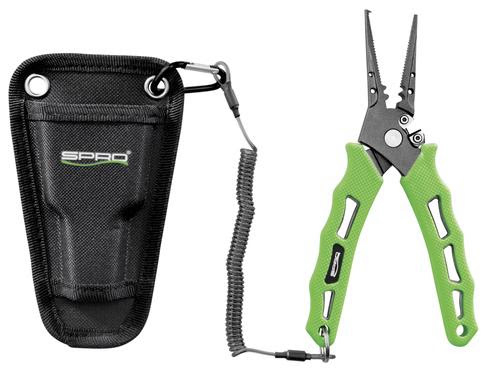 https://hooklineandsinker.ca/wp-content/uploads/2020/04/SPRO-Heavy-Duty-Stainless-Steel-Pliers.jpg
378
500
HLSAdmin
https://hooklineandsinker.ca/wp-content/uploads/2014/12/Steelheading-in-the-Snow-900-80-Not-Faded-Actual-1030x91.jpg
HLSAdmin2020-04-02 19:51:462020-04-02 20:01:03SPRO Heavy Duty Stainless Steel Pliers
https://hooklineandsinker.ca/wp-content/uploads/2020/04/SPRO-Heavy-Duty-Stainless-Steel-Pliers.jpg
378
500
HLSAdmin
https://hooklineandsinker.ca/wp-content/uploads/2014/12/Steelheading-in-the-Snow-900-80-Not-Faded-Actual-1030x91.jpg
HLSAdmin2020-04-02 19:51:462020-04-02 20:01:03SPRO Heavy Duty Stainless Steel Pliers https://hooklineandsinker.ca/wp-content/uploads/2015/01/The-Rod-Glove-Logo.jpg
60
120
HLSAdmin
https://hooklineandsinker.ca/wp-content/uploads/2014/12/Steelheading-in-the-Snow-900-80-Not-Faded-Actual-1030x91.jpg
HLSAdmin2015-01-12 16:35:092017-08-03 19:34:05The Rod Glove – Fishing Rod Protection
https://hooklineandsinker.ca/wp-content/uploads/2015/01/The-Rod-Glove-Logo.jpg
60
120
HLSAdmin
https://hooklineandsinker.ca/wp-content/uploads/2014/12/Steelheading-in-the-Snow-900-80-Not-Faded-Actual-1030x91.jpg
HLSAdmin2015-01-12 16:35:092017-08-03 19:34:05The Rod Glove – Fishing Rod Protection https://hooklineandsinker.ca/wp-content/uploads/2020/03/Bobber-Stop-Assortment-AA.jpg
1214
2450
HLSAdmin
https://hooklineandsinker.ca/wp-content/uploads/2014/12/Steelheading-in-the-Snow-900-80-Not-Faded-Actual-1030x91.jpg
HLSAdmin2020-03-09 19:39:432020-03-09 19:47:31Float Fishing Bobber Stops
https://hooklineandsinker.ca/wp-content/uploads/2020/03/Bobber-Stop-Assortment-AA.jpg
1214
2450
HLSAdmin
https://hooklineandsinker.ca/wp-content/uploads/2014/12/Steelheading-in-the-Snow-900-80-Not-Faded-Actual-1030x91.jpg
HLSAdmin2020-03-09 19:39:432020-03-09 19:47:31Float Fishing Bobber Stops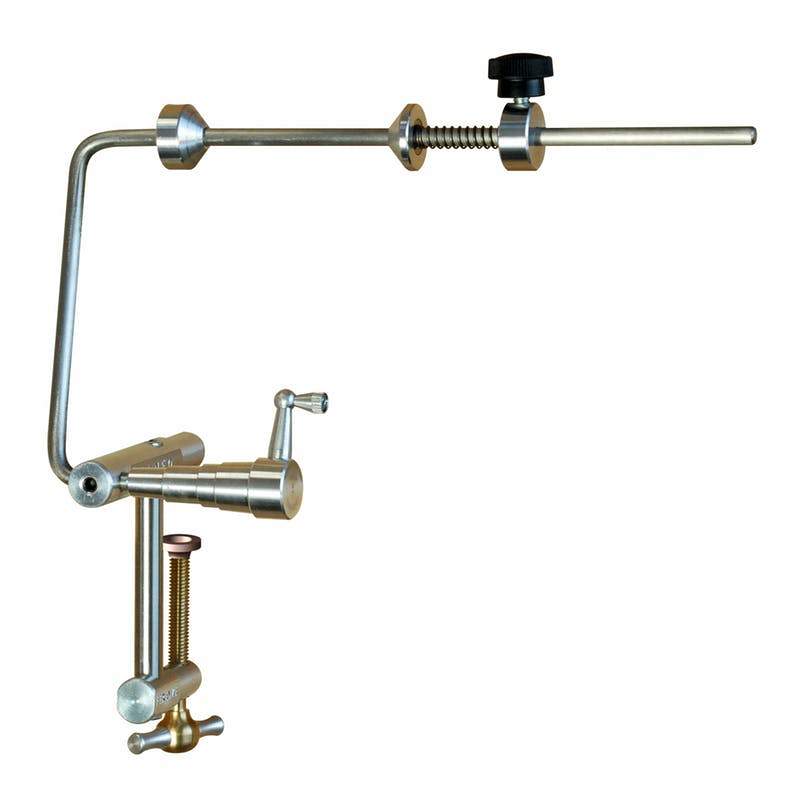 https://hooklineandsinker.ca/wp-content/uploads/2020/03/Stonfo-Spooling-Station-544-IMBOBINATORE-D.jpg
800
800
HLSAdmin
https://hooklineandsinker.ca/wp-content/uploads/2014/12/Steelheading-in-the-Snow-900-80-Not-Faded-Actual-1030x91.jpg
HLSAdmin2020-03-09 18:17:332020-03-21 18:45:34Stonfo Spooling Station #544 – Line Winder
https://hooklineandsinker.ca/wp-content/uploads/2020/03/Stonfo-Spooling-Station-544-IMBOBINATORE-D.jpg
800
800
HLSAdmin
https://hooklineandsinker.ca/wp-content/uploads/2014/12/Steelheading-in-the-Snow-900-80-Not-Faded-Actual-1030x91.jpg
HLSAdmin2020-03-09 18:17:332020-03-21 18:45:34Stonfo Spooling Station #544 – Line Winder https://hooklineandsinker.ca/wp-content/uploads/2016/12/The-Fishing-Butler-logo.jpg
382
422
HLSAdmin
https://hooklineandsinker.ca/wp-content/uploads/2014/12/Steelheading-in-the-Snow-900-80-Not-Faded-Actual-1030x91.jpg
HLSAdmin2016-12-18 20:25:472017-08-21 21:46:25The Fishing Butler – R Ideas – Fishing Rod Ties
https://hooklineandsinker.ca/wp-content/uploads/2016/12/The-Fishing-Butler-logo.jpg
382
422
HLSAdmin
https://hooklineandsinker.ca/wp-content/uploads/2014/12/Steelheading-in-the-Snow-900-80-Not-Faded-Actual-1030x91.jpg
HLSAdmin2016-12-18 20:25:472017-08-21 21:46:25The Fishing Butler – R Ideas – Fishing Rod Ties https://hooklineandsinker.ca/wp-content/uploads/2020/03/Loon-Fly-Dip_grey_background_NEW_736x900_ea8577e7-11c2-4b2c-ba3a-2eaf0ee21688.jpg
900
736
HLSAdmin
https://hooklineandsinker.ca/wp-content/uploads/2014/12/Steelheading-in-the-Snow-900-80-Not-Faded-Actual-1030x91.jpg
HLSAdmin2020-03-05 13:50:412020-03-05 14:00:43Loon Fly Dip
https://hooklineandsinker.ca/wp-content/uploads/2020/03/Loon-Fly-Dip_grey_background_NEW_736x900_ea8577e7-11c2-4b2c-ba3a-2eaf0ee21688.jpg
900
736
HLSAdmin
https://hooklineandsinker.ca/wp-content/uploads/2014/12/Steelheading-in-the-Snow-900-80-Not-Faded-Actual-1030x91.jpg
HLSAdmin2020-03-05 13:50:412020-03-05 14:00:43Loon Fly Dip https://hooklineandsinker.ca/wp-content/uploads/2020/02/RIO-Cranky-Kit-20ed7afe-9527-4ec9-90a4-dfb6234fe7f4.jpg
240
240
HLSAdmin
https://hooklineandsinker.ca/wp-content/uploads/2014/12/Steelheading-in-the-Snow-900-80-Not-Faded-Actual-1030x91.jpg
HLSAdmin2020-02-27 15:37:412020-03-21 18:46:48RIO Cranky Kit – Line Winder
https://hooklineandsinker.ca/wp-content/uploads/2020/02/RIO-Cranky-Kit-20ed7afe-9527-4ec9-90a4-dfb6234fe7f4.jpg
240
240
HLSAdmin
https://hooklineandsinker.ca/wp-content/uploads/2014/12/Steelheading-in-the-Snow-900-80-Not-Faded-Actual-1030x91.jpg
HLSAdmin2020-02-27 15:37:412020-03-21 18:46:48RIO Cranky Kit – Line Winder https://hooklineandsinker.ca/wp-content/uploads/2021/03/leemtech20-20shore20system2000420pr.jpg
339
838
HLSAdmin
https://hooklineandsinker.ca/wp-content/uploads/2014/12/Steelheading-in-the-Snow-900-80-Not-Faded-Actual-1030x91.jpg
HLSAdmin2021-03-29 19:13:292021-04-04 19:53:42LeemTech Foldable Fishing Rod Pole Holders
https://hooklineandsinker.ca/wp-content/uploads/2021/03/leemtech20-20shore20system2000420pr.jpg
339
838
HLSAdmin
https://hooklineandsinker.ca/wp-content/uploads/2014/12/Steelheading-in-the-Snow-900-80-Not-Faded-Actual-1030x91.jpg
HLSAdmin2021-03-29 19:13:292021-04-04 19:53:42LeemTech Foldable Fishing Rod Pole Holders https://hooklineandsinker.ca/wp-content/uploads/2020/12/Islander-Gold-2-5-Inch-Magnetic-Stainless-Bottle-Opener.png
452
916
HLSAdmin
https://hooklineandsinker.ca/wp-content/uploads/2014/12/Steelheading-in-the-Snow-900-80-Not-Faded-Actual-1030x91.jpg
HLSAdmin2020-12-09 21:20:582022-04-18 13:20:34Islander Gold 2.5″ Magnetic Stainless Bottle Opener
https://hooklineandsinker.ca/wp-content/uploads/2020/12/Islander-Gold-2-5-Inch-Magnetic-Stainless-Bottle-Opener.png
452
916
HLSAdmin
https://hooklineandsinker.ca/wp-content/uploads/2014/12/Steelheading-in-the-Snow-900-80-Not-Faded-Actual-1030x91.jpg
HLSAdmin2020-12-09 21:20:582022-04-18 13:20:34Islander Gold 2.5″ Magnetic Stainless Bottle Opener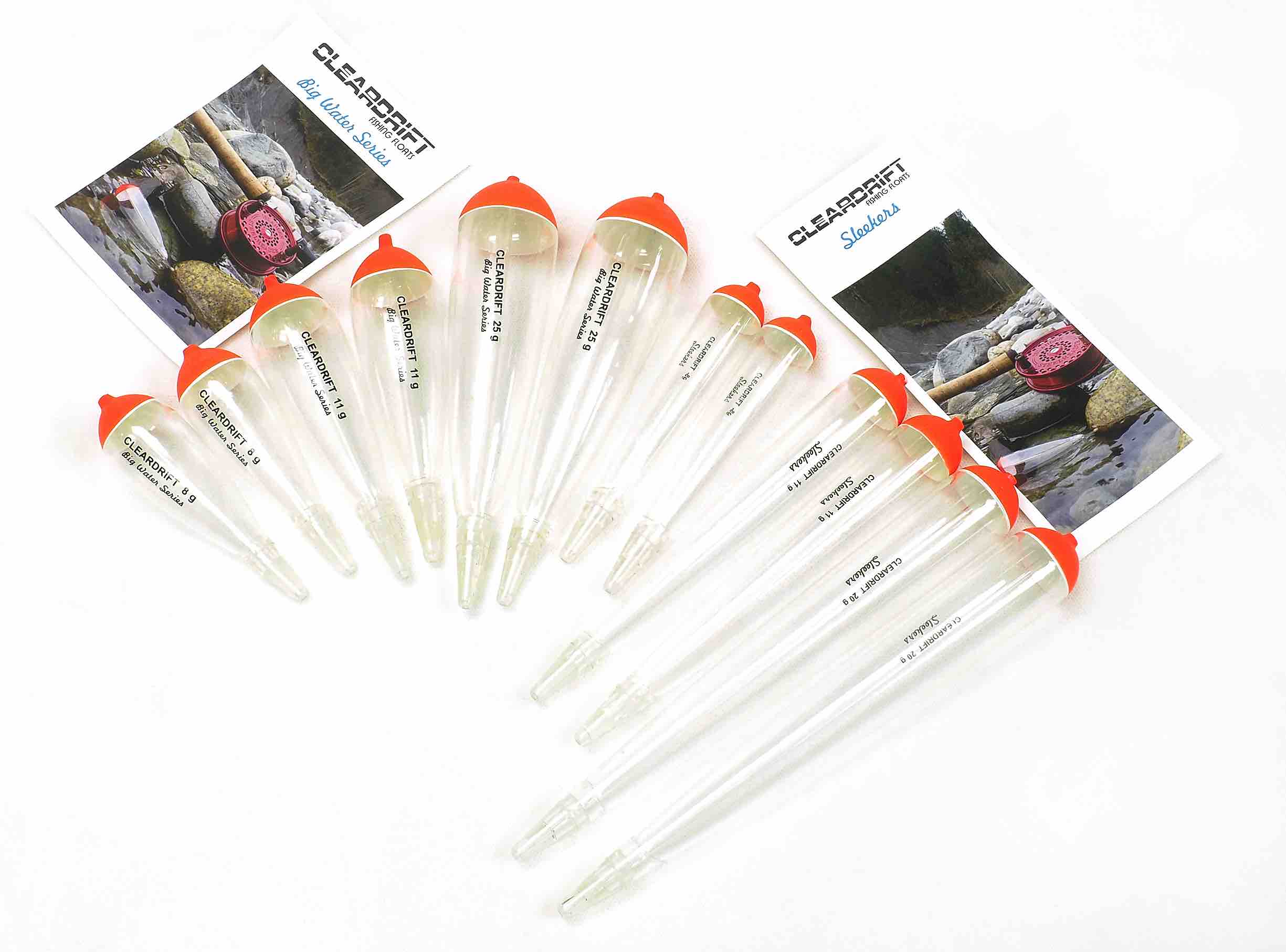 https://hooklineandsinker.ca/wp-content/uploads/2020/01/Clear-Drift-Floats-Big-Water-Series-and-Sleekers-AA.jpg
1814
2450
HLSAdmin
https://hooklineandsinker.ca/wp-content/uploads/2014/12/Steelheading-in-the-Snow-900-80-Not-Faded-Actual-1030x91.jpg
HLSAdmin2020-01-30 20:14:502020-03-09 19:47:54Cleardrift Floats – Big Water Series & Sleekers
https://hooklineandsinker.ca/wp-content/uploads/2020/01/Clear-Drift-Floats-Big-Water-Series-and-Sleekers-AA.jpg
1814
2450
HLSAdmin
https://hooklineandsinker.ca/wp-content/uploads/2014/12/Steelheading-in-the-Snow-900-80-Not-Faded-Actual-1030x91.jpg
HLSAdmin2020-01-30 20:14:502020-03-09 19:47:54Cleardrift Floats – Big Water Series & Sleekers https://hooklineandsinker.ca/wp-content/uploads/2018/12/1-Islander-Reel_Maintenance_Kit.jpg
525
675
HLSAdmin
https://hooklineandsinker.ca/wp-content/uploads/2014/12/Steelheading-in-the-Snow-900-80-Not-Faded-Actual-1030x91.jpg
HLSAdmin2018-12-13 20:35:232018-12-15 21:02:58Islander Reel Maintenance Kit
https://hooklineandsinker.ca/wp-content/uploads/2018/12/1-Islander-Reel_Maintenance_Kit.jpg
525
675
HLSAdmin
https://hooklineandsinker.ca/wp-content/uploads/2014/12/Steelheading-in-the-Snow-900-80-Not-Faded-Actual-1030x91.jpg
HLSAdmin2018-12-13 20:35:232018-12-15 21:02:58Islander Reel Maintenance Kit https://hooklineandsinker.ca/wp-content/uploads/2020/01/blackfire-logo-rect.png
85
559
HLSAdmin
https://hooklineandsinker.ca/wp-content/uploads/2014/12/Steelheading-in-the-Snow-900-80-Not-Faded-Actual-1030x91.jpg
HLSAdmin2020-01-24 16:40:182020-01-24 16:42:38Blackfire Rechargeable Personal Lights
https://hooklineandsinker.ca/wp-content/uploads/2020/01/blackfire-logo-rect.png
85
559
HLSAdmin
https://hooklineandsinker.ca/wp-content/uploads/2014/12/Steelheading-in-the-Snow-900-80-Not-Faded-Actual-1030x91.jpg
HLSAdmin2020-01-24 16:40:182020-01-24 16:42:38Blackfire Rechargeable Personal Lights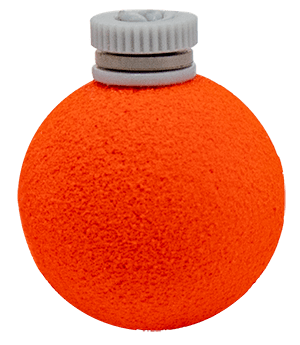 https://hooklineandsinker.ca/wp-content/uploads/2020/01/Air-Lock-Orange-Single-1.png
345
300
HLSAdmin
https://hooklineandsinker.ca/wp-content/uploads/2014/12/Steelheading-in-the-Snow-900-80-Not-Faded-Actual-1030x91.jpg
HLSAdmin2020-01-24 16:21:212020-07-25 23:15:32Air-Lock Biodegradable Strike Indicators
https://hooklineandsinker.ca/wp-content/uploads/2020/01/Air-Lock-Orange-Single-1.png
345
300
HLSAdmin
https://hooklineandsinker.ca/wp-content/uploads/2014/12/Steelheading-in-the-Snow-900-80-Not-Faded-Actual-1030x91.jpg
HLSAdmin2020-01-24 16:21:212020-07-25 23:15:32Air-Lock Biodegradable Strike Indicators https://hooklineandsinker.ca/wp-content/uploads/2018/09/Daiwa-Reel-Greaser-Space-Age-B.jpg
600
600
HLSAdmin
https://hooklineandsinker.ca/wp-content/uploads/2014/12/Steelheading-in-the-Snow-900-80-Not-Faded-Actual-1030x91.jpg
HLSAdmin2018-09-22 20:28:002018-10-01 22:29:35Daiwa Space Age Reel Greaser
https://hooklineandsinker.ca/wp-content/uploads/2018/09/Daiwa-Reel-Greaser-Space-Age-B.jpg
600
600
HLSAdmin
https://hooklineandsinker.ca/wp-content/uploads/2014/12/Steelheading-in-the-Snow-900-80-Not-Faded-Actual-1030x91.jpg
HLSAdmin2018-09-22 20:28:002018-10-01 22:29:35Daiwa Space Age Reel Greaser https://hooklineandsinker.ca/wp-content/uploads/2020/01/Rapid-Fishing-Solutions-rapidfishingsolutionslogo_240px_transp_1547246456__13241.original.png
68
240
HLSAdmin
https://hooklineandsinker.ca/wp-content/uploads/2014/12/Steelheading-in-the-Snow-900-80-Not-Faded-Actual-1030x91.jpg
HLSAdmin2020-01-01 11:52:352020-01-01 11:53:03Rapid Fishing Solutions
https://hooklineandsinker.ca/wp-content/uploads/2020/01/Rapid-Fishing-Solutions-rapidfishingsolutionslogo_240px_transp_1547246456__13241.original.png
68
240
HLSAdmin
https://hooklineandsinker.ca/wp-content/uploads/2014/12/Steelheading-in-the-Snow-900-80-Not-Faded-Actual-1030x91.jpg
HLSAdmin2020-01-01 11:52:352020-01-01 11:53:03Rapid Fishing Solutions https://hooklineandsinker.ca/wp-content/uploads/2014/01/Mesh-Tailing-Gloves-Resized-for-Web.jpg
2205
3189
Ray Collesso
https://hooklineandsinker.ca/wp-content/uploads/2014/12/Steelheading-in-the-Snow-900-80-Not-Faded-Actual-1030x91.jpg
Ray Collesso2014-01-16 04:01:272020-07-12 22:58:40Mesh Tailing Gloves
https://hooklineandsinker.ca/wp-content/uploads/2014/01/Mesh-Tailing-Gloves-Resized-for-Web.jpg
2205
3189
Ray Collesso
https://hooklineandsinker.ca/wp-content/uploads/2014/12/Steelheading-in-the-Snow-900-80-Not-Faded-Actual-1030x91.jpg
Ray Collesso2014-01-16 04:01:272020-07-12 22:58:40Mesh Tailing Gloves https://hooklineandsinker.ca/wp-content/uploads/2015/05/Loon-Stanleys-Ice-Off-Paste-A.jpg
225
225
HLSAdmin
https://hooklineandsinker.ca/wp-content/uploads/2014/12/Steelheading-in-the-Snow-900-80-Not-Faded-Actual-1030x91.jpg
HLSAdmin2015-05-06 23:32:512018-11-25 20:57:32Loon Outdoors – Stanley’s Ice Off Paste
https://hooklineandsinker.ca/wp-content/uploads/2015/05/Loon-Stanleys-Ice-Off-Paste-A.jpg
225
225
HLSAdmin
https://hooklineandsinker.ca/wp-content/uploads/2014/12/Steelheading-in-the-Snow-900-80-Not-Faded-Actual-1030x91.jpg
HLSAdmin2015-05-06 23:32:512018-11-25 20:57:32Loon Outdoors – Stanley’s Ice Off Paste https://hooklineandsinker.ca/wp-content/uploads/2019/11/O-Pros-Gear-logo-145afe1aa4e017748e5703c01ee01a16.jpg
400
400
HLSAdmin
https://hooklineandsinker.ca/wp-content/uploads/2014/12/Steelheading-in-the-Snow-900-80-Not-Faded-Actual-1030x91.jpg
HLSAdmin2019-11-18 20:03:372019-11-18 20:06:07O’Pros Outdoor Professionals Gear
https://hooklineandsinker.ca/wp-content/uploads/2019/11/O-Pros-Gear-logo-145afe1aa4e017748e5703c01ee01a16.jpg
400
400
HLSAdmin
https://hooklineandsinker.ca/wp-content/uploads/2014/12/Steelheading-in-the-Snow-900-80-Not-Faded-Actual-1030x91.jpg
HLSAdmin2019-11-18 20:03:372019-11-18 20:06:07O’Pros Outdoor Professionals Gear https://hooklineandsinker.ca/wp-content/uploads/2020/01/Pautzke-Liquid-Krill.jpg
282
179
HLSAdmin
https://hooklineandsinker.ca/wp-content/uploads/2014/12/Steelheading-in-the-Snow-900-80-Not-Faded-Actual-1030x91.jpg
HLSAdmin2020-01-30 11:46:152020-01-30 13:16:05Pautzke Liquid Krill
https://hooklineandsinker.ca/wp-content/uploads/2020/01/Pautzke-Liquid-Krill.jpg
282
179
HLSAdmin
https://hooklineandsinker.ca/wp-content/uploads/2014/12/Steelheading-in-the-Snow-900-80-Not-Faded-Actual-1030x91.jpg
HLSAdmin2020-01-30 11:46:152020-01-30 13:16:05Pautzke Liquid Krill https://hooklineandsinker.ca/wp-content/uploads/2019/11/Loon-Hook-Hone-With-Comfy-Grip-C.jpg
1024
1024
HLSAdmin
https://hooklineandsinker.ca/wp-content/uploads/2014/12/Steelheading-in-the-Snow-900-80-Not-Faded-Actual-1030x91.jpg
HLSAdmin2019-11-18 18:57:202019-11-18 19:20:55Loon Hook Hone With Comfy Grip
https://hooklineandsinker.ca/wp-content/uploads/2019/11/Loon-Hook-Hone-With-Comfy-Grip-C.jpg
1024
1024
HLSAdmin
https://hooklineandsinker.ca/wp-content/uploads/2014/12/Steelheading-in-the-Snow-900-80-Not-Faded-Actual-1030x91.jpg
HLSAdmin2019-11-18 18:57:202019-11-18 19:20:55Loon Hook Hone With Comfy Grip https://hooklineandsinker.ca/wp-content/uploads/2019/11/Loon-Classic-Mitten-Comfy-Grip-Scissor-Clamp-Classic-Mitten-Scissor-Clamps_greybackground_NEW_1024x1024_7354235f-7375-4e50-b783-dc330bd381be_1200x.jpg
1024
1024
HLSAdmin
https://hooklineandsinker.ca/wp-content/uploads/2014/12/Steelheading-in-the-Snow-900-80-Not-Faded-Actual-1030x91.jpg
HLSAdmin2019-11-18 18:32:392019-11-18 18:33:04Loon Classic Mitten Comfy Grip Scissor Clamp
https://hooklineandsinker.ca/wp-content/uploads/2019/11/Loon-Classic-Mitten-Comfy-Grip-Scissor-Clamp-Classic-Mitten-Scissor-Clamps_greybackground_NEW_1024x1024_7354235f-7375-4e50-b783-dc330bd381be_1200x.jpg
1024
1024
HLSAdmin
https://hooklineandsinker.ca/wp-content/uploads/2014/12/Steelheading-in-the-Snow-900-80-Not-Faded-Actual-1030x91.jpg
HLSAdmin2019-11-18 18:32:392019-11-18 18:33:04Loon Classic Mitten Comfy Grip Scissor Clamp https://hooklineandsinker.ca/wp-content/uploads/2019/11/Loon-Classic-Comfy-Grip-Nipper-Classic-Nippers_greybackground_NEW_1024x1024_c7848850-372f-434c-925a-80d3c064808d_1200x.jpg
1024
1024
HLSAdmin
https://hooklineandsinker.ca/wp-content/uploads/2014/12/Steelheading-in-the-Snow-900-80-Not-Faded-Actual-1030x91.jpg
HLSAdmin2019-11-18 18:20:552019-11-18 18:20:55Loon Classic Comfy Grip Nipper
https://hooklineandsinker.ca/wp-content/uploads/2019/11/Loon-Classic-Comfy-Grip-Nipper-Classic-Nippers_greybackground_NEW_1024x1024_c7848850-372f-434c-925a-80d3c064808d_1200x.jpg
1024
1024
HLSAdmin
https://hooklineandsinker.ca/wp-content/uploads/2014/12/Steelheading-in-the-Snow-900-80-Not-Faded-Actual-1030x91.jpg
HLSAdmin2019-11-18 18:20:552019-11-18 18:20:55Loon Classic Comfy Grip Nipper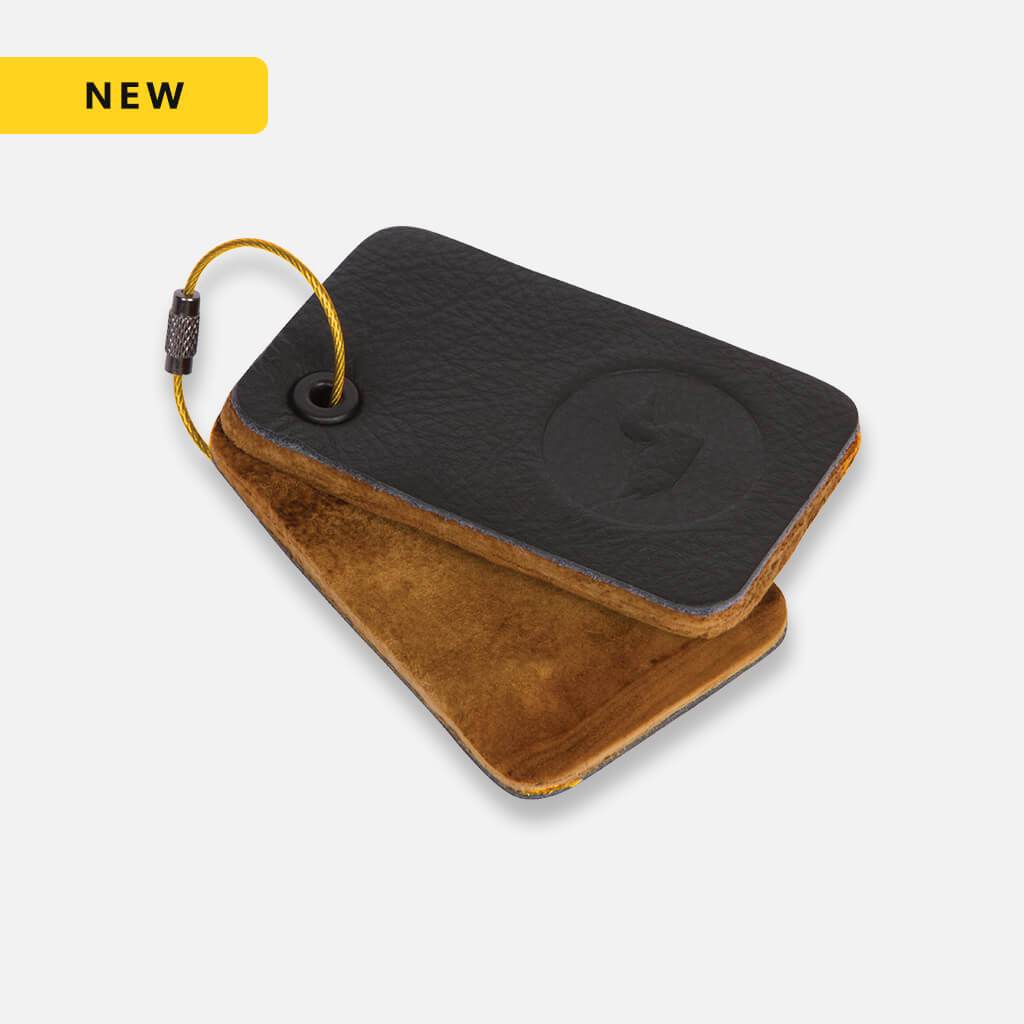 https://hooklineandsinker.ca/wp-content/uploads/2019/11/Loon-Amadou-Patch_greybackground_NEW_1024x1024_67a3460f-e492-46dc-9ab6-9b385682eecf_1200x.jpg
1024
1024
HLSAdmin
https://hooklineandsinker.ca/wp-content/uploads/2014/12/Steelheading-in-the-Snow-900-80-Not-Faded-Actual-1030x91.jpg
HLSAdmin2019-11-18 17:19:022019-12-01 19:39:33Loon Amadou Fly Drying Patch
https://hooklineandsinker.ca/wp-content/uploads/2019/11/Loon-Amadou-Patch_greybackground_NEW_1024x1024_67a3460f-e492-46dc-9ab6-9b385682eecf_1200x.jpg
1024
1024
HLSAdmin
https://hooklineandsinker.ca/wp-content/uploads/2014/12/Steelheading-in-the-Snow-900-80-Not-Faded-Actual-1030x91.jpg
HLSAdmin2019-11-18 17:19:022019-12-01 19:39:33Loon Amadou Fly Drying Patch https://hooklineandsinker.ca/wp-content/uploads/2019/11/Dr-Slick-Eco-Scissor-Clamp-Hemostat-Hook-Removers.jpg
230
230
HLSAdmin
https://hooklineandsinker.ca/wp-content/uploads/2014/12/Steelheading-in-the-Snow-900-80-Not-Faded-Actual-1030x91.jpg
HLSAdmin2019-11-18 16:59:222019-11-18 17:03:27Dr. Slick Eco Scissor Clamp Hemostat Hook Removers
https://hooklineandsinker.ca/wp-content/uploads/2019/11/Dr-Slick-Eco-Scissor-Clamp-Hemostat-Hook-Removers.jpg
230
230
HLSAdmin
https://hooklineandsinker.ca/wp-content/uploads/2014/12/Steelheading-in-the-Snow-900-80-Not-Faded-Actual-1030x91.jpg
HLSAdmin2019-11-18 16:59:222019-11-18 17:03:27Dr. Slick Eco Scissor Clamp Hemostat Hook Removers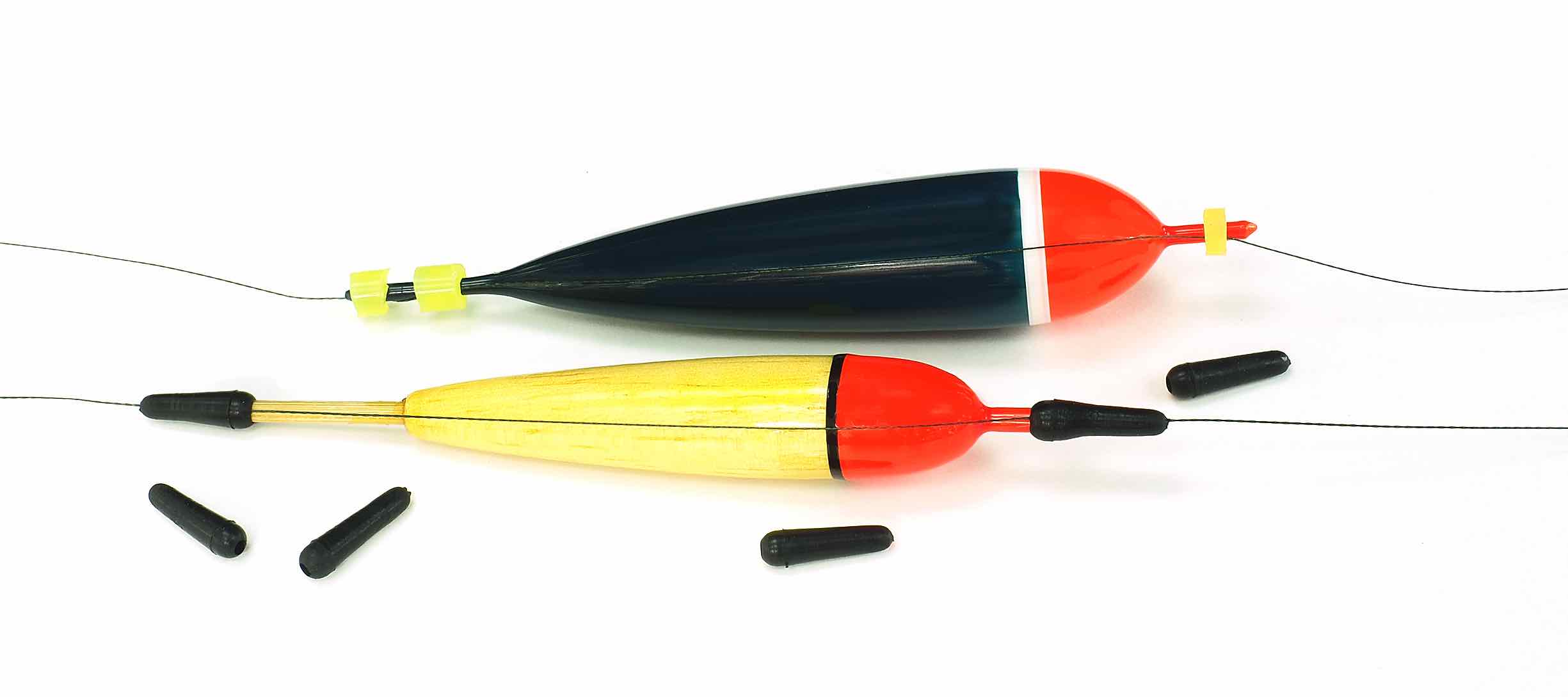 https://hooklineandsinker.ca/wp-content/uploads/2019/09/Fixed-Float-Center-Tubing-AA.jpg
1089
2450
HLSAdmin
https://hooklineandsinker.ca/wp-content/uploads/2014/12/Steelheading-in-the-Snow-900-80-Not-Faded-Actual-1030x91.jpg
HLSAdmin2019-09-12 19:06:382020-03-09 19:48:15Fixed Float Center Tubing
https://hooklineandsinker.ca/wp-content/uploads/2019/09/Fixed-Float-Center-Tubing-AA.jpg
1089
2450
HLSAdmin
https://hooklineandsinker.ca/wp-content/uploads/2014/12/Steelheading-in-the-Snow-900-80-Not-Faded-Actual-1030x91.jpg
HLSAdmin2019-09-12 19:06:382020-03-09 19:48:15Fixed Float Center Tubing https://hooklineandsinker.ca/wp-content/uploads/2019/09/Generic-Fishing-Thermometer-AA.jpg
1367
2450
HLSAdmin
https://hooklineandsinker.ca/wp-content/uploads/2014/12/Steelheading-in-the-Snow-900-80-Not-Faded-Actual-1030x91.jpg
HLSAdmin2019-09-11 21:40:482019-09-11 21:40:48Generic Fishing Streamside Thermometer
https://hooklineandsinker.ca/wp-content/uploads/2019/09/Generic-Fishing-Thermometer-AA.jpg
1367
2450
HLSAdmin
https://hooklineandsinker.ca/wp-content/uploads/2014/12/Steelheading-in-the-Snow-900-80-Not-Faded-Actual-1030x91.jpg
HLSAdmin2019-09-11 21:40:482019-09-11 21:40:48Generic Fishing Streamside Thermometer https://hooklineandsinker.ca/wp-content/uploads/2018/06/loon-graffitolin-ferrule-wax_1200x.jpg
634
634
HLSAdmin
https://hooklineandsinker.ca/wp-content/uploads/2014/12/Steelheading-in-the-Snow-900-80-Not-Faded-Actual-1030x91.jpg
HLSAdmin2018-06-17 11:35:152018-06-17 11:41:46Loon Graffitolin Ferrule Wax
https://hooklineandsinker.ca/wp-content/uploads/2018/06/loon-graffitolin-ferrule-wax_1200x.jpg
634
634
HLSAdmin
https://hooklineandsinker.ca/wp-content/uploads/2014/12/Steelheading-in-the-Snow-900-80-Not-Faded-Actual-1030x91.jpg
HLSAdmin2018-06-17 11:35:152018-06-17 11:41:46Loon Graffitolin Ferrule Wax https://hooklineandsinker.ca/wp-content/uploads/2019/09/Fishpond-swiftcurrent-thermometee_gunmetal.jpg
700
700
HLSAdmin
https://hooklineandsinker.ca/wp-content/uploads/2014/12/Steelheading-in-the-Snow-900-80-Not-Faded-Actual-1030x91.jpg
HLSAdmin2019-09-01 11:04:402019-09-01 16:30:55Fishpond Swift Current Thermometer
https://hooklineandsinker.ca/wp-content/uploads/2019/09/Fishpond-swiftcurrent-thermometee_gunmetal.jpg
700
700
HLSAdmin
https://hooklineandsinker.ca/wp-content/uploads/2014/12/Steelheading-in-the-Snow-900-80-Not-Faded-Actual-1030x91.jpg
HLSAdmin2019-09-01 11:04:402019-09-01 16:30:55Fishpond Swift Current Thermometer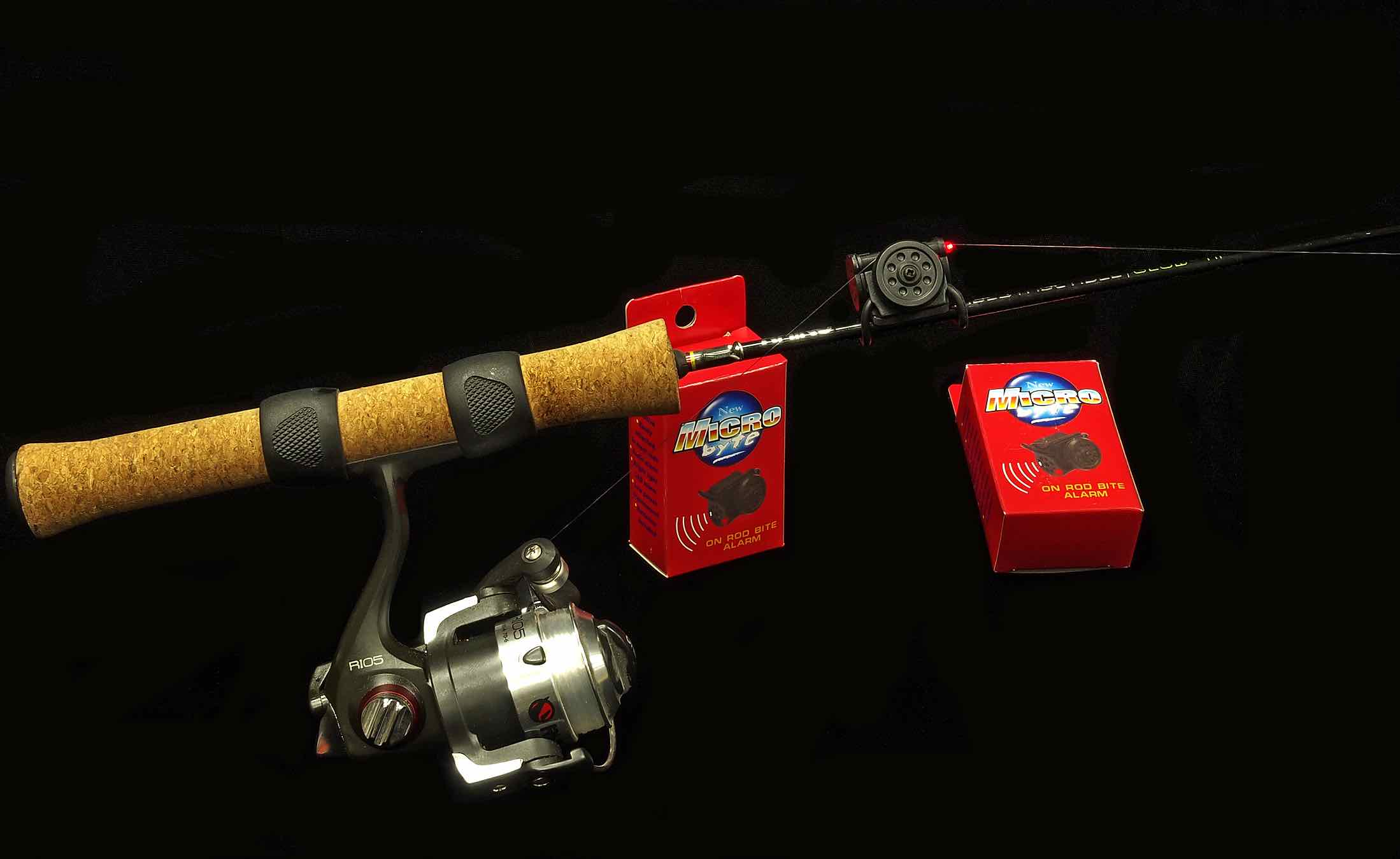 https://hooklineandsinker.ca/wp-content/uploads/2015/10/Micro-Electronic-Lighted-Bite-Alarm-AA.jpg
1349
2198
HLSAdmin
https://hooklineandsinker.ca/wp-content/uploads/2014/12/Steelheading-in-the-Snow-900-80-Not-Faded-Actual-1030x91.jpg
HLSAdmin2015-10-04 23:12:512017-04-10 20:20:59Electronic Bite Sound Alarm LED Fishing Light Alert
https://hooklineandsinker.ca/wp-content/uploads/2015/10/Micro-Electronic-Lighted-Bite-Alarm-AA.jpg
1349
2198
HLSAdmin
https://hooklineandsinker.ca/wp-content/uploads/2014/12/Steelheading-in-the-Snow-900-80-Not-Faded-Actual-1030x91.jpg
HLSAdmin2015-10-04 23:12:512017-04-10 20:20:59Electronic Bite Sound Alarm LED Fishing Light Alert https://hooklineandsinker.ca/wp-content/uploads/2019/07/Accu-Cull-All-in-One-Mini-Fishing-Rod-Drop-Shot-Weight-Holder-BB.jpg
1700
2450
HLSAdmin
https://hooklineandsinker.ca/wp-content/uploads/2014/12/Steelheading-in-the-Snow-900-80-Not-Faded-Actual-1030x91.jpg
HLSAdmin2019-07-07 19:48:362020-11-22 22:39:20Accu Cull – All in One Mini Fishing Rod Drop Shot Weight Holder
https://hooklineandsinker.ca/wp-content/uploads/2019/07/Accu-Cull-All-in-One-Mini-Fishing-Rod-Drop-Shot-Weight-Holder-BB.jpg
1700
2450
HLSAdmin
https://hooklineandsinker.ca/wp-content/uploads/2014/12/Steelheading-in-the-Snow-900-80-Not-Faded-Actual-1030x91.jpg
HLSAdmin2019-07-07 19:48:362020-11-22 22:39:20Accu Cull – All in One Mini Fishing Rod Drop Shot Weight Holder https://hooklineandsinker.ca/wp-content/uploads/2019/06/Loon-Camo-Drops-A.png
732
975
HLSAdmin
https://hooklineandsinker.ca/wp-content/uploads/2014/12/Steelheading-in-the-Snow-900-80-Not-Faded-Actual-1030x91.jpg
HLSAdmin2019-06-26 22:08:232019-08-04 20:57:04Loon Camo Drops
https://hooklineandsinker.ca/wp-content/uploads/2019/06/Loon-Camo-Drops-A.png
732
975
HLSAdmin
https://hooklineandsinker.ca/wp-content/uploads/2014/12/Steelheading-in-the-Snow-900-80-Not-Faded-Actual-1030x91.jpg
HLSAdmin2019-06-26 22:08:232019-08-04 20:57:04Loon Camo Drops https://hooklineandsinker.ca/wp-content/uploads/2015/02/Rodmounts-Logo.png
108
108
HLSAdmin
https://hooklineandsinker.ca/wp-content/uploads/2014/12/Steelheading-in-the-Snow-900-80-Not-Faded-Actual-1030x91.jpg
HLSAdmin2015-02-18 17:49:032015-03-05 00:32:03Rodmounts Rod Holders – Rod Racks for Cars
https://hooklineandsinker.ca/wp-content/uploads/2015/02/Rodmounts-Logo.png
108
108
HLSAdmin
https://hooklineandsinker.ca/wp-content/uploads/2014/12/Steelheading-in-the-Snow-900-80-Not-Faded-Actual-1030x91.jpg
HLSAdmin2015-02-18 17:49:032015-03-05 00:32:03Rodmounts Rod Holders – Rod Racks for Cars https://hooklineandsinker.ca/wp-content/uploads/2019/11/Scientific-Anglers-Spey-Head-Wallet-A.jpg
900
900
HLSAdmin
https://hooklineandsinker.ca/wp-content/uploads/2014/12/Steelheading-in-the-Snow-900-80-Not-Faded-Actual-1030x91.jpg
HLSAdmin2019-11-15 18:16:002020-01-27 20:27:03Scientific Anglers Spey Head Wallet
https://hooklineandsinker.ca/wp-content/uploads/2019/11/Scientific-Anglers-Spey-Head-Wallet-A.jpg
900
900
HLSAdmin
https://hooklineandsinker.ca/wp-content/uploads/2014/12/Steelheading-in-the-Snow-900-80-Not-Faded-Actual-1030x91.jpg
HLSAdmin2019-11-15 18:16:002020-01-27 20:27:03Scientific Anglers Spey Head Wallet https://hooklineandsinker.ca/wp-content/uploads/2019/06/RIOs-HeadCase-Leader-Wallet-Shooting-Head-Wallet-A.png
654
900
HLSAdmin
https://hooklineandsinker.ca/wp-content/uploads/2014/12/Steelheading-in-the-Snow-900-80-Not-Faded-Actual-1030x91.jpg
HLSAdmin2019-06-09 19:39:472020-01-27 20:24:36RIO’s HeadCase, Leader Wallet & Shooting Head Wallet
https://hooklineandsinker.ca/wp-content/uploads/2019/06/RIOs-HeadCase-Leader-Wallet-Shooting-Head-Wallet-A.png
654
900
HLSAdmin
https://hooklineandsinker.ca/wp-content/uploads/2014/12/Steelheading-in-the-Snow-900-80-Not-Faded-Actual-1030x91.jpg
HLSAdmin2019-06-09 19:39:472020-01-27 20:24:36RIO’s HeadCase, Leader Wallet & Shooting Head Wallet https://hooklineandsinker.ca/wp-content/uploads/2019/06/OPST-Sink-Tip-Wallet-A.png
596
900
HLSAdmin
https://hooklineandsinker.ca/wp-content/uploads/2014/12/Steelheading-in-the-Snow-900-80-Not-Faded-Actual-1030x91.jpg
HLSAdmin2019-06-09 19:15:082020-01-27 20:25:09OPST Sink Tip Wallet
https://hooklineandsinker.ca/wp-content/uploads/2019/06/OPST-Sink-Tip-Wallet-A.png
596
900
HLSAdmin
https://hooklineandsinker.ca/wp-content/uploads/2014/12/Steelheading-in-the-Snow-900-80-Not-Faded-Actual-1030x91.jpg
HLSAdmin2019-06-09 19:15:082020-01-27 20:25:09OPST Sink Tip Wallet https://hooklineandsinker.ca/wp-content/uploads/2019/05/Hawken-Hyper-UV-Bugbodz-AA.jpg
1771
2450
HLSAdmin
https://hooklineandsinker.ca/wp-content/uploads/2014/12/Steelheading-in-the-Snow-900-80-Not-Faded-Actual-1030x91.jpg
HLSAdmin2019-05-13 12:40:382019-05-13 16:24:57Hawken Fishing – Bugbodz
https://hooklineandsinker.ca/wp-content/uploads/2019/05/Hawken-Hyper-UV-Bugbodz-AA.jpg
1771
2450
HLSAdmin
https://hooklineandsinker.ca/wp-content/uploads/2014/12/Steelheading-in-the-Snow-900-80-Not-Faded-Actual-1030x91.jpg
HLSAdmin2019-05-13 12:40:382019-05-13 16:24:57Hawken Fishing – Bugbodz https://hooklineandsinker.ca/wp-content/uploads/2019/05/Hawken-Fishing-Wild-Wings-WW3_900x.jpg
401
900
HLSAdmin
https://hooklineandsinker.ca/wp-content/uploads/2014/12/Steelheading-in-the-Snow-900-80-Not-Faded-Actual-1030x91.jpg
HLSAdmin2019-05-13 12:21:402019-08-04 20:21:47Hawken Fishing – Wild Wings
https://hooklineandsinker.ca/wp-content/uploads/2019/05/Hawken-Fishing-Wild-Wings-WW3_900x.jpg
401
900
HLSAdmin
https://hooklineandsinker.ca/wp-content/uploads/2014/12/Steelheading-in-the-Snow-900-80-Not-Faded-Actual-1030x91.jpg
HLSAdmin2019-05-13 12:21:402019-08-04 20:21:47Hawken Fishing – Wild Wings https://hooklineandsinker.ca/wp-content/uploads/2019/05/Hawken-Fiahing-First_Choice_Website_Logo_a7089ea0-8e6a-4494-bef9-3ca04dca6473_245x@2x.png
149
490
HLSAdmin
https://hooklineandsinker.ca/wp-content/uploads/2014/12/Steelheading-in-the-Snow-900-80-Not-Faded-Actual-1030x91.jpg
HLSAdmin2019-05-13 12:33:162019-05-13 16:17:30Hawken Fishing
https://hooklineandsinker.ca/wp-content/uploads/2019/05/Hawken-Fiahing-First_Choice_Website_Logo_a7089ea0-8e6a-4494-bef9-3ca04dca6473_245x@2x.png
149
490
HLSAdmin
https://hooklineandsinker.ca/wp-content/uploads/2014/12/Steelheading-in-the-Snow-900-80-Not-Faded-Actual-1030x91.jpg
HLSAdmin2019-05-13 12:33:162019-05-13 16:17:30Hawken Fishing https://hooklineandsinker.ca/wp-content/uploads/2018/12/Fishpond-Lost-Trail-Wading-Staff-B-2800_0003_losttrail_wadingstaff_folded-Fishpond-Rubber-End-Cap-for-Custom-Landing-Net-C.jpg
700
700
HLSAdmin
https://hooklineandsinker.ca/wp-content/uploads/2014/12/Steelheading-in-the-Snow-900-80-Not-Faded-Actual-1030x91.jpg
HLSAdmin2018-12-10 16:15:152020-03-17 21:28:16Fishpond Lost Trail Wading Staff
https://hooklineandsinker.ca/wp-content/uploads/2018/12/Fishpond-Lost-Trail-Wading-Staff-B-2800_0003_losttrail_wadingstaff_folded-Fishpond-Rubber-End-Cap-for-Custom-Landing-Net-C.jpg
700
700
HLSAdmin
https://hooklineandsinker.ca/wp-content/uploads/2014/12/Steelheading-in-the-Snow-900-80-Not-Faded-Actual-1030x91.jpg
HLSAdmin2018-12-10 16:15:152020-03-17 21:28:16Fishpond Lost Trail Wading Staff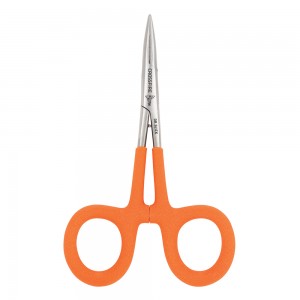 https://hooklineandsinker.ca/wp-content/uploads/2019/11/Dr-Slick-Crossfire-Scissor-Clamp.jpg
300
300
HLSAdmin
https://hooklineandsinker.ca/wp-content/uploads/2014/12/Steelheading-in-the-Snow-900-80-Not-Faded-Actual-1030x91.jpg
HLSAdmin2019-11-18 16:44:302020-03-17 21:24:54Dr. Slick Crossfire Scissor Clamp
https://hooklineandsinker.ca/wp-content/uploads/2019/11/Dr-Slick-Crossfire-Scissor-Clamp.jpg
300
300
HLSAdmin
https://hooklineandsinker.ca/wp-content/uploads/2014/12/Steelheading-in-the-Snow-900-80-Not-Faded-Actual-1030x91.jpg
HLSAdmin2019-11-18 16:44:302020-03-17 21:24:54Dr. Slick Crossfire Scissor Clamp https://hooklineandsinker.ca/wp-content/uploads/2019/04/Loon-Rigging-Foams-Stores-Rigged-Flies-and-Tippet-AA.jpg
1938
2450
HLSAdmin
https://hooklineandsinker.ca/wp-content/uploads/2014/12/Steelheading-in-the-Snow-900-80-Not-Faded-Actual-1030x91.jpg
HLSAdmin2019-04-21 14:37:212019-04-21 14:46:36Loon Rigging Foams
https://hooklineandsinker.ca/wp-content/uploads/2019/04/Loon-Rigging-Foams-Stores-Rigged-Flies-and-Tippet-AA.jpg
1938
2450
HLSAdmin
https://hooklineandsinker.ca/wp-content/uploads/2014/12/Steelheading-in-the-Snow-900-80-Not-Faded-Actual-1030x91.jpg
HLSAdmin2019-04-21 14:37:212019-04-21 14:46:36Loon Rigging Foams https://hooklineandsinker.ca/wp-content/uploads/2014/01/Magnetic-Rodguard.jpg
198
241
Ray Collesso
https://hooklineandsinker.ca/wp-content/uploads/2014/12/Steelheading-in-the-Snow-900-80-Not-Faded-Actual-1030x91.jpg
Ray Collesso2014-01-14 02:10:232016-12-27 00:33:39Magnetic Fishing Rod Guard – Tight Line Enterprises – Gray’s Best
https://hooklineandsinker.ca/wp-content/uploads/2014/01/Magnetic-Rodguard.jpg
198
241
Ray Collesso
https://hooklineandsinker.ca/wp-content/uploads/2014/12/Steelheading-in-the-Snow-900-80-Not-Faded-Actual-1030x91.jpg
Ray Collesso2014-01-14 02:10:232016-12-27 00:33:39Magnetic Fishing Rod Guard – Tight Line Enterprises – Gray’s Best https://hooklineandsinker.ca/wp-content/uploads/2019/03/Loon-Rogue-Series.jpg
600
600
HLSAdmin
https://hooklineandsinker.ca/wp-content/uploads/2014/12/Steelheading-in-the-Snow-900-80-Not-Faded-Actual-1030x91.jpg
HLSAdmin2019-03-18 20:20:422020-05-28 22:19:13Loon Rogue Series
https://hooklineandsinker.ca/wp-content/uploads/2019/03/Loon-Rogue-Series.jpg
600
600
HLSAdmin
https://hooklineandsinker.ca/wp-content/uploads/2014/12/Steelheading-in-the-Snow-900-80-Not-Faded-Actual-1030x91.jpg
HLSAdmin2019-03-18 20:20:422020-05-28 22:19:13Loon Rogue Series https://hooklineandsinker.ca/wp-content/uploads/2019/12/Accu-Cull-All-N-One-Mini.jpg
634
1175
HLSAdmin
https://hooklineandsinker.ca/wp-content/uploads/2014/12/Steelheading-in-the-Snow-900-80-Not-Faded-Actual-1030x91.jpg
HLSAdmin2019-12-31 17:39:192019-12-31 17:42:05Accu-Cull All-N-One Mini
https://hooklineandsinker.ca/wp-content/uploads/2019/12/Accu-Cull-All-N-One-Mini.jpg
634
1175
HLSAdmin
https://hooklineandsinker.ca/wp-content/uploads/2014/12/Steelheading-in-the-Snow-900-80-Not-Faded-Actual-1030x91.jpg
HLSAdmin2019-12-31 17:39:192019-12-31 17:42:05Accu-Cull All-N-One Mini https://hooklineandsinker.ca/wp-content/uploads/2019/05/Hawken-Aero-Float-Fixed-Slip-AA.jpg
1517
2450
HLSAdmin
https://hooklineandsinker.ca/wp-content/uploads/2014/12/Steelheading-in-the-Snow-900-80-Not-Faded-Actual-1030x91.jpg
HLSAdmin2019-05-26 17:31:222020-03-09 19:48:36Hawken Aero Floats
https://hooklineandsinker.ca/wp-content/uploads/2019/05/Hawken-Aero-Float-Fixed-Slip-AA.jpg
1517
2450
HLSAdmin
https://hooklineandsinker.ca/wp-content/uploads/2014/12/Steelheading-in-the-Snow-900-80-Not-Faded-Actual-1030x91.jpg
HLSAdmin2019-05-26 17:31:222020-03-09 19:48:36Hawken Aero Floats https://hooklineandsinker.ca/wp-content/uploads/2019/03/e-con-culling-tag-kit-232w-logo-.png
92
344
HLSAdmin
https://hooklineandsinker.ca/wp-content/uploads/2014/12/Steelheading-in-the-Snow-900-80-Not-Faded-Actual-1030x91.jpg
HLSAdmin2019-03-03 16:26:572019-03-03 16:26:57Accu-Cull Elite E-Con Tournament Bass Tagging Kit
https://hooklineandsinker.ca/wp-content/uploads/2019/03/e-con-culling-tag-kit-232w-logo-.png
92
344
HLSAdmin
https://hooklineandsinker.ca/wp-content/uploads/2014/12/Steelheading-in-the-Snow-900-80-Not-Faded-Actual-1030x91.jpg
HLSAdmin2019-03-03 16:26:572019-03-03 16:26:57Accu-Cull Elite E-Con Tournament Bass Tagging Kit https://hooklineandsinker.ca/wp-content/uploads/2019/02/Rapala-Giant-Lure-Image-B.jpg
225
225
HLSAdmin
https://hooklineandsinker.ca/wp-content/uploads/2014/12/Steelheading-in-the-Snow-900-80-Not-Faded-Actual-1030x91.jpg
HLSAdmin2019-02-25 14:19:222019-02-25 14:19:22Rapala’s Giant Lure
https://hooklineandsinker.ca/wp-content/uploads/2019/02/Rapala-Giant-Lure-Image-B.jpg
225
225
HLSAdmin
https://hooklineandsinker.ca/wp-content/uploads/2014/12/Steelheading-in-the-Snow-900-80-Not-Faded-Actual-1030x91.jpg
HLSAdmin2019-02-25 14:19:222019-02-25 14:19:22Rapala’s Giant Lure https://hooklineandsinker.ca/wp-content/uploads/2019/11/O-Pros-Outdoor-Professionals-Fly-Fishing-Gear-3rd-Third-Hand-Rod-Holder-AA.jpg
1538
2450
HLSAdmin
https://hooklineandsinker.ca/wp-content/uploads/2014/12/Steelheading-in-the-Snow-900-80-Not-Faded-Actual-1030x91.jpg
HLSAdmin2019-11-18 19:43:312020-08-31 20:51:17O’Pros Outdoor Professionals Fly Fishing Gear 3rd Hand Rod Holder
https://hooklineandsinker.ca/wp-content/uploads/2019/11/O-Pros-Outdoor-Professionals-Fly-Fishing-Gear-3rd-Third-Hand-Rod-Holder-AA.jpg
1538
2450
HLSAdmin
https://hooklineandsinker.ca/wp-content/uploads/2014/12/Steelheading-in-the-Snow-900-80-Not-Faded-Actual-1030x91.jpg
HLSAdmin2019-11-18 19:43:312020-08-31 20:51:17O’Pros Outdoor Professionals Fly Fishing Gear 3rd Hand Rod Holder https://hooklineandsinker.ca/wp-content/uploads/2020/01/Fishpond-West-Bank-Wading-Belt-Net-Holder-2800_0001_westbankwaderbelt_back_1.jpg
700
700
HLSAdmin
https://hooklineandsinker.ca/wp-content/uploads/2014/12/Steelheading-in-the-Snow-900-80-Not-Faded-Actual-1030x91.jpg
HLSAdmin2020-01-13 20:02:282020-07-12 22:59:37Fishpond Westbank Wading Belt Net Holder
https://hooklineandsinker.ca/wp-content/uploads/2020/01/Fishpond-West-Bank-Wading-Belt-Net-Holder-2800_0001_westbankwaderbelt_back_1.jpg
700
700
HLSAdmin
https://hooklineandsinker.ca/wp-content/uploads/2014/12/Steelheading-in-the-Snow-900-80-Not-Faded-Actual-1030x91.jpg
HLSAdmin2020-01-13 20:02:282020-07-12 22:59:37Fishpond Westbank Wading Belt Net Holder https://hooklineandsinker.ca/wp-content/uploads/2019/01/Loon-tippet-stack_2000xA.jpg
634
634
HLSAdmin
https://hooklineandsinker.ca/wp-content/uploads/2014/12/Steelheading-in-the-Snow-900-80-Not-Faded-Actual-1030x91.jpg
HLSAdmin2019-01-09 17:03:122019-01-09 17:03:12Loon Tippet Stack
https://hooklineandsinker.ca/wp-content/uploads/2019/01/Loon-tippet-stack_2000xA.jpg
634
634
HLSAdmin
https://hooklineandsinker.ca/wp-content/uploads/2014/12/Steelheading-in-the-Snow-900-80-Not-Faded-Actual-1030x91.jpg
HLSAdmin2019-01-09 17:03:122019-01-09 17:03:12Loon Tippet Stack https://hooklineandsinker.ca/wp-content/uploads/2019/01/0186593_pucci_soft_egg_beads_300B-1.jpg
375
500
HLSAdmin
https://hooklineandsinker.ca/wp-content/uploads/2014/12/Steelheading-in-the-Snow-900-80-Not-Faded-Actual-1030x91.jpg
HLSAdmin2019-01-01 19:34:082020-03-09 19:48:51HLS Soft Float Fishing Float Beads
https://hooklineandsinker.ca/wp-content/uploads/2019/01/0186593_pucci_soft_egg_beads_300B-1.jpg
375
500
HLSAdmin
https://hooklineandsinker.ca/wp-content/uploads/2014/12/Steelheading-in-the-Snow-900-80-Not-Faded-Actual-1030x91.jpg
HLSAdmin2019-01-01 19:34:082020-03-09 19:48:51HLS Soft Float Fishing Float Beads https://hooklineandsinker.ca/wp-content/uploads/2019/01/Hollow-Core-Lead-Weights-for-Centerpin-Float-Fishing-Steelhead-HLS-Custom-UV-Steelhead-Bead-DDDD.jpg
1560
1808
HLSAdmin
https://hooklineandsinker.ca/wp-content/uploads/2014/12/Steelheading-in-the-Snow-900-80-Not-Faded-Actual-1030x91.jpg
HLSAdmin2019-01-01 19:07:542019-01-01 19:46:21Hollow Core Lead Weights for Centerpin Float Fishing
https://hooklineandsinker.ca/wp-content/uploads/2019/01/Hollow-Core-Lead-Weights-for-Centerpin-Float-Fishing-Steelhead-HLS-Custom-UV-Steelhead-Bead-DDDD.jpg
1560
1808
HLSAdmin
https://hooklineandsinker.ca/wp-content/uploads/2014/12/Steelheading-in-the-Snow-900-80-Not-Faded-Actual-1030x91.jpg
HLSAdmin2019-01-01 19:07:542019-01-01 19:46:21Hollow Core Lead Weights for Centerpin Float Fishing https://hooklineandsinker.ca/wp-content/uploads/2018/12/Fly-Line-Braided-Loops-DD.jpg
1853
2450
HLSAdmin
https://hooklineandsinker.ca/wp-content/uploads/2014/12/Steelheading-in-the-Snow-900-80-Not-Faded-Actual-1030x91.jpg
HLSAdmin2018-12-15 21:31:322019-01-01 20:13:24Fly Line Braided Loops
https://hooklineandsinker.ca/wp-content/uploads/2018/12/Fly-Line-Braided-Loops-DD.jpg
1853
2450
HLSAdmin
https://hooklineandsinker.ca/wp-content/uploads/2014/12/Steelheading-in-the-Snow-900-80-Not-Faded-Actual-1030x91.jpg
HLSAdmin2018-12-15 21:31:322019-01-01 20:13:24Fly Line Braided Loops https://hooklineandsinker.ca/wp-content/uploads/2018/11/Owner-Pro-Parts-Micro-Hyper-Swivel-Barrel-Type-5081-AA.jpg
1050
2450
HLSAdmin
https://hooklineandsinker.ca/wp-content/uploads/2014/12/Steelheading-in-the-Snow-900-80-Not-Faded-Actual-1030x91.jpg
HLSAdmin2018-11-25 23:23:242018-11-25 23:29:01Owner – Pro-Parts Micro Hyper Swivel – Barrel Type – Model 5081
https://hooklineandsinker.ca/wp-content/uploads/2018/11/Owner-Pro-Parts-Micro-Hyper-Swivel-Barrel-Type-5081-AA.jpg
1050
2450
HLSAdmin
https://hooklineandsinker.ca/wp-content/uploads/2014/12/Steelheading-in-the-Snow-900-80-Not-Faded-Actual-1030x91.jpg
HLSAdmin2018-11-25 23:23:242018-11-25 23:29:01Owner – Pro-Parts Micro Hyper Swivel – Barrel Type – Model 5081 https://hooklineandsinker.ca/wp-content/uploads/2018/11/Clear-Drift-Fishing.jpg
100
400
HLSAdmin
https://hooklineandsinker.ca/wp-content/uploads/2014/12/Steelheading-in-the-Snow-900-80-Not-Faded-Actual-1030x91.jpg
HLSAdmin2018-11-14 23:35:232020-03-09 19:49:16Cleardrift Steelhead Floats, Soft Beads, Steelhead Worms, & Steelhead Accessories
https://hooklineandsinker.ca/wp-content/uploads/2018/11/Clear-Drift-Fishing.jpg
100
400
HLSAdmin
https://hooklineandsinker.ca/wp-content/uploads/2014/12/Steelheading-in-the-Snow-900-80-Not-Faded-Actual-1030x91.jpg
HLSAdmin2018-11-14 23:35:232020-03-09 19:49:16Cleardrift Steelhead Floats, Soft Beads, Steelhead Worms, & Steelhead Accessories https://hooklineandsinker.ca/wp-content/uploads/2018/10/Drennan-Crystal-Pike-Floats-Pikebob-C.jpg
225
225
HLSAdmin
https://hooklineandsinker.ca/wp-content/uploads/2014/12/Steelheading-in-the-Snow-900-80-Not-Faded-Actual-1030x91.jpg
HLSAdmin2018-10-15 21:26:082020-03-09 19:49:34Drennan Pikebob Crystal Floats
https://hooklineandsinker.ca/wp-content/uploads/2018/10/Drennan-Crystal-Pike-Floats-Pikebob-C.jpg
225
225
HLSAdmin
https://hooklineandsinker.ca/wp-content/uploads/2014/12/Steelheading-in-the-Snow-900-80-Not-Faded-Actual-1030x91.jpg
HLSAdmin2018-10-15 21:26:082020-03-09 19:49:34Drennan Pikebob Crystal Floats https://hooklineandsinker.ca/wp-content/uploads/2019/12/Cal-Coast-Rod-Mule-Rodmule-web_2048x.jpg
1000
1000
HLSAdmin
https://hooklineandsinker.ca/wp-content/uploads/2014/12/Steelheading-in-the-Snow-900-80-Not-Faded-Actual-1030x91.jpg
HLSAdmin2019-12-31 18:05:152019-12-31 18:05:15Cal Coast Rod Mule
https://hooklineandsinker.ca/wp-content/uploads/2019/12/Cal-Coast-Rod-Mule-Rodmule-web_2048x.jpg
1000
1000
HLSAdmin
https://hooklineandsinker.ca/wp-content/uploads/2014/12/Steelheading-in-the-Snow-900-80-Not-Faded-Actual-1030x91.jpg
HLSAdmin2019-12-31 18:05:152019-12-31 18:05:15Cal Coast Rod Mule https://hooklineandsinker.ca/wp-content/uploads/2018/09/SC_DaiwaReelOiler_cut02.jpg
225
225
HLSAdmin
https://hooklineandsinker.ca/wp-content/uploads/2014/12/Steelheading-in-the-Snow-900-80-Not-Faded-Actual-1030x91.jpg
HLSAdmin2018-09-22 21:29:272018-10-01 22:27:18Daiwa Space Age Needle Nose Reel Oiler
https://hooklineandsinker.ca/wp-content/uploads/2018/09/SC_DaiwaReelOiler_cut02.jpg
225
225
HLSAdmin
https://hooklineandsinker.ca/wp-content/uploads/2014/12/Steelheading-in-the-Snow-900-80-Not-Faded-Actual-1030x91.jpg
HLSAdmin2018-09-22 21:29:272018-10-01 22:27:18Daiwa Space Age Needle Nose Reel Oiler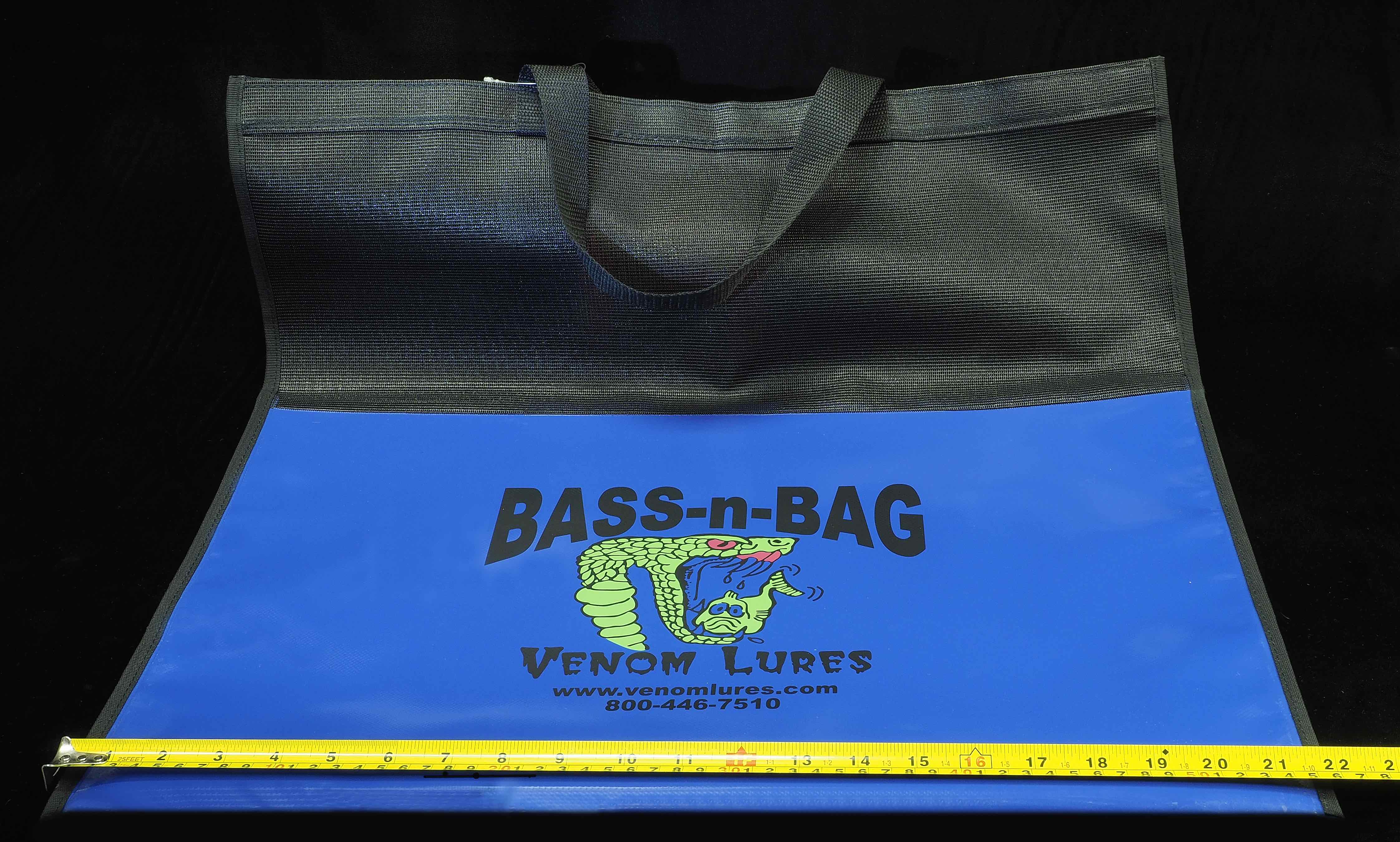 https://hooklineandsinker.ca/wp-content/uploads/2018/10/Venom-Lures-Bass-n-Bag-Bass-Tournament-Weigh-Bag-AA.jpg
2700
4489
HLSAdmin
https://hooklineandsinker.ca/wp-content/uploads/2014/12/Steelheading-in-the-Snow-900-80-Not-Faded-Actual-1030x91.jpg
HLSAdmin2018-10-28 00:03:342018-12-02 00:16:38Venom Lures Bass-N-Bag Bass Tournament Weigh-Bag
https://hooklineandsinker.ca/wp-content/uploads/2018/10/Venom-Lures-Bass-n-Bag-Bass-Tournament-Weigh-Bag-AA.jpg
2700
4489
HLSAdmin
https://hooklineandsinker.ca/wp-content/uploads/2014/12/Steelheading-in-the-Snow-900-80-Not-Faded-Actual-1030x91.jpg
HLSAdmin2018-10-28 00:03:342018-12-02 00:16:38Venom Lures Bass-N-Bag Bass Tournament Weigh-Bag https://hooklineandsinker.ca/wp-content/uploads/2018/11/Fishpond-Largemouth-PioPod-Pack-it-Out-B.jpg
700
700
HLSAdmin
https://hooklineandsinker.ca/wp-content/uploads/2014/12/Steelheading-in-the-Snow-900-80-Not-Faded-Actual-1030x91.jpg
HLSAdmin2018-11-30 16:30:262020-07-12 22:52:31Fishpond Largemouth Pack it Out PioPod
https://hooklineandsinker.ca/wp-content/uploads/2018/11/Fishpond-Largemouth-PioPod-Pack-it-Out-B.jpg
700
700
HLSAdmin
https://hooklineandsinker.ca/wp-content/uploads/2014/12/Steelheading-in-the-Snow-900-80-Not-Faded-Actual-1030x91.jpg
HLSAdmin2018-11-30 16:30:262020-07-12 22:52:31Fishpond Largemouth Pack it Out PioPod https://hooklineandsinker.ca/wp-content/uploads/2018/08/Shimano-P-BLACKMOON_BACKPACKS.jpg
1500
1500
HLSAdmin
https://hooklineandsinker.ca/wp-content/uploads/2014/12/Steelheading-in-the-Snow-900-80-Not-Faded-Actual-1030x91.jpg
HLSAdmin2018-08-22 20:42:172018-09-01 21:22:31Shimano Blackmoon Fishing Backpack
https://hooklineandsinker.ca/wp-content/uploads/2018/08/Shimano-P-BLACKMOON_BACKPACKS.jpg
1500
1500
HLSAdmin
https://hooklineandsinker.ca/wp-content/uploads/2014/12/Steelheading-in-the-Snow-900-80-Not-Faded-Actual-1030x91.jpg
HLSAdmin2018-08-22 20:42:172018-09-01 21:22:31Shimano Blackmoon Fishing Backpack https://hooklineandsinker.ca/wp-content/uploads/2018/08/Minnow-Traps-AA.jpg
2443
2450
HLSAdmin
https://hooklineandsinker.ca/wp-content/uploads/2014/12/Steelheading-in-the-Snow-900-80-Not-Faded-Actual-1030x91.jpg
HLSAdmin2018-08-06 21:12:552018-08-06 21:12:55Minnow Trap
https://hooklineandsinker.ca/wp-content/uploads/2018/08/Minnow-Traps-AA.jpg
2443
2450
HLSAdmin
https://hooklineandsinker.ca/wp-content/uploads/2014/12/Steelheading-in-the-Snow-900-80-Not-Faded-Actual-1030x91.jpg
HLSAdmin2018-08-06 21:12:552018-08-06 21:12:55Minnow Trap https://hooklineandsinker.ca/wp-content/uploads/2018/09/River-Reaper-Premium-Fishing-Products-Logo.jpg
1448
1402
HLSAdmin
https://hooklineandsinker.ca/wp-content/uploads/2014/12/Steelheading-in-the-Snow-900-80-Not-Faded-Actual-1030x91.jpg
HLSAdmin2018-09-29 20:54:572020-01-18 21:41:40River Reaper Premium Fishing Products
https://hooklineandsinker.ca/wp-content/uploads/2018/09/River-Reaper-Premium-Fishing-Products-Logo.jpg
1448
1402
HLSAdmin
https://hooklineandsinker.ca/wp-content/uploads/2014/12/Steelheading-in-the-Snow-900-80-Not-Faded-Actual-1030x91.jpg
HLSAdmin2018-09-29 20:54:572020-01-18 21:41:40River Reaper Premium Fishing Products https://hooklineandsinker.ca/wp-content/uploads/2018/02/Simms-G3-Guide-Boots-Wading-Boot-Insert-and-Right-Angle-Footbed-AA.jpg
1455
2450
HLSAdmin
https://hooklineandsinker.ca/wp-content/uploads/2014/12/Steelheading-in-the-Snow-900-80-Not-Faded-Actual-1030x91.jpg
HLSAdmin2018-02-11 19:34:402018-10-21 19:17:37Simms Right Angle Wading Boot Insert and Right Angle Footbed
https://hooklineandsinker.ca/wp-content/uploads/2018/02/Simms-G3-Guide-Boots-Wading-Boot-Insert-and-Right-Angle-Footbed-AA.jpg
1455
2450
HLSAdmin
https://hooklineandsinker.ca/wp-content/uploads/2014/12/Steelheading-in-the-Snow-900-80-Not-Faded-Actual-1030x91.jpg
HLSAdmin2018-02-11 19:34:402018-10-21 19:17:37Simms Right Angle Wading Boot Insert and Right Angle Footbed https://hooklineandsinker.ca/wp-content/uploads/2020/11/Wild-Salmon-C-and-R-Measuring-StickerA.jpg
768
1024
HLSAdmin
https://hooklineandsinker.ca/wp-content/uploads/2014/12/Steelheading-in-the-Snow-900-80-Not-Faded-Actual-1030x91.jpg
HLSAdmin2020-11-21 22:19:312023-03-20 16:52:41‘Wild Salmon’ C&R Measuring Sticker
https://hooklineandsinker.ca/wp-content/uploads/2020/11/Wild-Salmon-C-and-R-Measuring-StickerA.jpg
768
1024
HLSAdmin
https://hooklineandsinker.ca/wp-content/uploads/2014/12/Steelheading-in-the-Snow-900-80-Not-Faded-Actual-1030x91.jpg
HLSAdmin2020-11-21 22:19:312023-03-20 16:52:41‘Wild Salmon’ C&R Measuring Sticker https://hooklineandsinker.ca/wp-content/uploads/2018/04/Fly-Reel-Measuring-Tape-Image.jpg
190
265
HLSAdmin
https://hooklineandsinker.ca/wp-content/uploads/2014/12/Steelheading-in-the-Snow-900-80-Not-Faded-Actual-1030x91.jpg
HLSAdmin2018-04-15 15:41:392018-04-15 16:36:10Fly Reel Measuring Tape
https://hooklineandsinker.ca/wp-content/uploads/2018/04/Fly-Reel-Measuring-Tape-Image.jpg
190
265
HLSAdmin
https://hooklineandsinker.ca/wp-content/uploads/2014/12/Steelheading-in-the-Snow-900-80-Not-Faded-Actual-1030x91.jpg
HLSAdmin2018-04-15 15:41:392018-04-15 16:36:10Fly Reel Measuring Tape https://hooklineandsinker.ca/wp-content/uploads/2018/04/William-Joseph-Fishing-Infrared-Thermometer-Main.png
600
500
HLSAdmin
https://hooklineandsinker.ca/wp-content/uploads/2014/12/Steelheading-in-the-Snow-900-80-Not-Faded-Actual-1030x91.jpg
HLSAdmin2018-04-15 15:25:262019-09-11 21:37:05The William Joseph Infrared Thermometer
https://hooklineandsinker.ca/wp-content/uploads/2018/04/William-Joseph-Fishing-Infrared-Thermometer-Main.png
600
500
HLSAdmin
https://hooklineandsinker.ca/wp-content/uploads/2014/12/Steelheading-in-the-Snow-900-80-Not-Faded-Actual-1030x91.jpg
HLSAdmin2018-04-15 15:25:262019-09-11 21:37:05The William Joseph Infrared Thermometer https://hooklineandsinker.ca/wp-content/uploads/2018/03/Tiemco-Umpqua-Super-Power-Fly-Floatant-Dry-Magic-AA.jpg
2450
2369
HLSAdmin
https://hooklineandsinker.ca/wp-content/uploads/2014/12/Steelheading-in-the-Snow-900-80-Not-Faded-Actual-1030x91.jpg
HLSAdmin2018-03-14 19:36:202018-03-14 19:36:56Tiemco Umpqua Super Power Dry Magic Fly Floatant
https://hooklineandsinker.ca/wp-content/uploads/2018/03/Tiemco-Umpqua-Super-Power-Fly-Floatant-Dry-Magic-AA.jpg
2450
2369
HLSAdmin
https://hooklineandsinker.ca/wp-content/uploads/2014/12/Steelheading-in-the-Snow-900-80-Not-Faded-Actual-1030x91.jpg
HLSAdmin2018-03-14 19:36:202018-03-14 19:36:56Tiemco Umpqua Super Power Dry Magic Fly Floatant https://hooklineandsinker.ca/wp-content/uploads/2018/01/Assorted-Steelhead-Float-Tubing-BB.jpg
1683
2450
HLSAdmin
https://hooklineandsinker.ca/wp-content/uploads/2014/12/Steelheading-in-the-Snow-900-80-Not-Faded-Actual-1030x91.jpg
HLSAdmin2018-01-20 11:57:152020-03-09 19:50:55Tubing for Steelhead Floats
https://hooklineandsinker.ca/wp-content/uploads/2018/01/Assorted-Steelhead-Float-Tubing-BB.jpg
1683
2450
HLSAdmin
https://hooklineandsinker.ca/wp-content/uploads/2014/12/Steelheading-in-the-Snow-900-80-Not-Faded-Actual-1030x91.jpg
HLSAdmin2018-01-20 11:57:152020-03-09 19:50:55Tubing for Steelhead Floats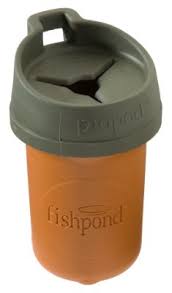 https://hooklineandsinker.ca/wp-content/uploads/2018/05/Fishpond-Piopod-Microtrash-Container-B.jpg
293
172
HLSAdmin
https://hooklineandsinker.ca/wp-content/uploads/2014/12/Steelheading-in-the-Snow-900-80-Not-Faded-Actual-1030x91.jpg
HLSAdmin2018-05-06 19:51:582018-12-02 00:24:34Fishpond Piopod Microtrash Container
https://hooklineandsinker.ca/wp-content/uploads/2018/05/Fishpond-Piopod-Microtrash-Container-B.jpg
293
172
HLSAdmin
https://hooklineandsinker.ca/wp-content/uploads/2014/12/Steelheading-in-the-Snow-900-80-Not-Faded-Actual-1030x91.jpg
HLSAdmin2018-05-06 19:51:582018-12-02 00:24:34Fishpond Piopod Microtrash Container https://hooklineandsinker.ca/wp-content/uploads/2017/10/Custom-TFC-Hook-Resistant-Durable-PVC-Clear-Fly-Wrap-AA.jpg
1251
2450
HLSAdmin
https://hooklineandsinker.ca/wp-content/uploads/2014/12/Steelheading-in-the-Snow-900-80-Not-Faded-Actual-1030x91.jpg
HLSAdmin2017-10-19 19:39:492017-10-19 19:47:50Custom TFC Hook Resistant Durable PVC Clear Fly Wrap
https://hooklineandsinker.ca/wp-content/uploads/2017/10/Custom-TFC-Hook-Resistant-Durable-PVC-Clear-Fly-Wrap-AA.jpg
1251
2450
HLSAdmin
https://hooklineandsinker.ca/wp-content/uploads/2014/12/Steelheading-in-the-Snow-900-80-Not-Faded-Actual-1030x91.jpg
HLSAdmin2017-10-19 19:39:492017-10-19 19:47:50Custom TFC Hook Resistant Durable PVC Clear Fly Wrap https://hooklineandsinker.ca/wp-content/uploads/2014/01/Boomerang-Tool-Assortment-AA.jpg
1558
2450
HLSAdmin
https://hooklineandsinker.ca/wp-content/uploads/2014/12/Steelheading-in-the-Snow-900-80-Not-Faded-Actual-1030x91.jpg
HLSAdmin2017-10-26 18:14:032018-04-15 14:36:41Boomerang Tool Company – The Boomerang Big Snip
https://hooklineandsinker.ca/wp-content/uploads/2014/01/Boomerang-Tool-Assortment-AA.jpg
1558
2450
HLSAdmin
https://hooklineandsinker.ca/wp-content/uploads/2014/12/Steelheading-in-the-Snow-900-80-Not-Faded-Actual-1030x91.jpg
HLSAdmin2017-10-26 18:14:032018-04-15 14:36:41Boomerang Tool Company – The Boomerang Big Snip https://hooklineandsinker.ca/wp-content/uploads/2017/09/RIO-Headgate-Tippet-Holder-Fishpond-AA.jpg
1311
2450
HLSAdmin
https://hooklineandsinker.ca/wp-content/uploads/2014/12/Steelheading-in-the-Snow-900-80-Not-Faded-Actual-1030x91.jpg
HLSAdmin2017-09-16 22:41:452017-12-04 13:42:30RIO Headgate Tippet Holder By Fishpond
https://hooklineandsinker.ca/wp-content/uploads/2017/09/RIO-Headgate-Tippet-Holder-Fishpond-AA.jpg
1311
2450
HLSAdmin
https://hooklineandsinker.ca/wp-content/uploads/2014/12/Steelheading-in-the-Snow-900-80-Not-Faded-Actual-1030x91.jpg
HLSAdmin2017-09-16 22:41:452017-12-04 13:42:30RIO Headgate Tippet Holder By Fishpond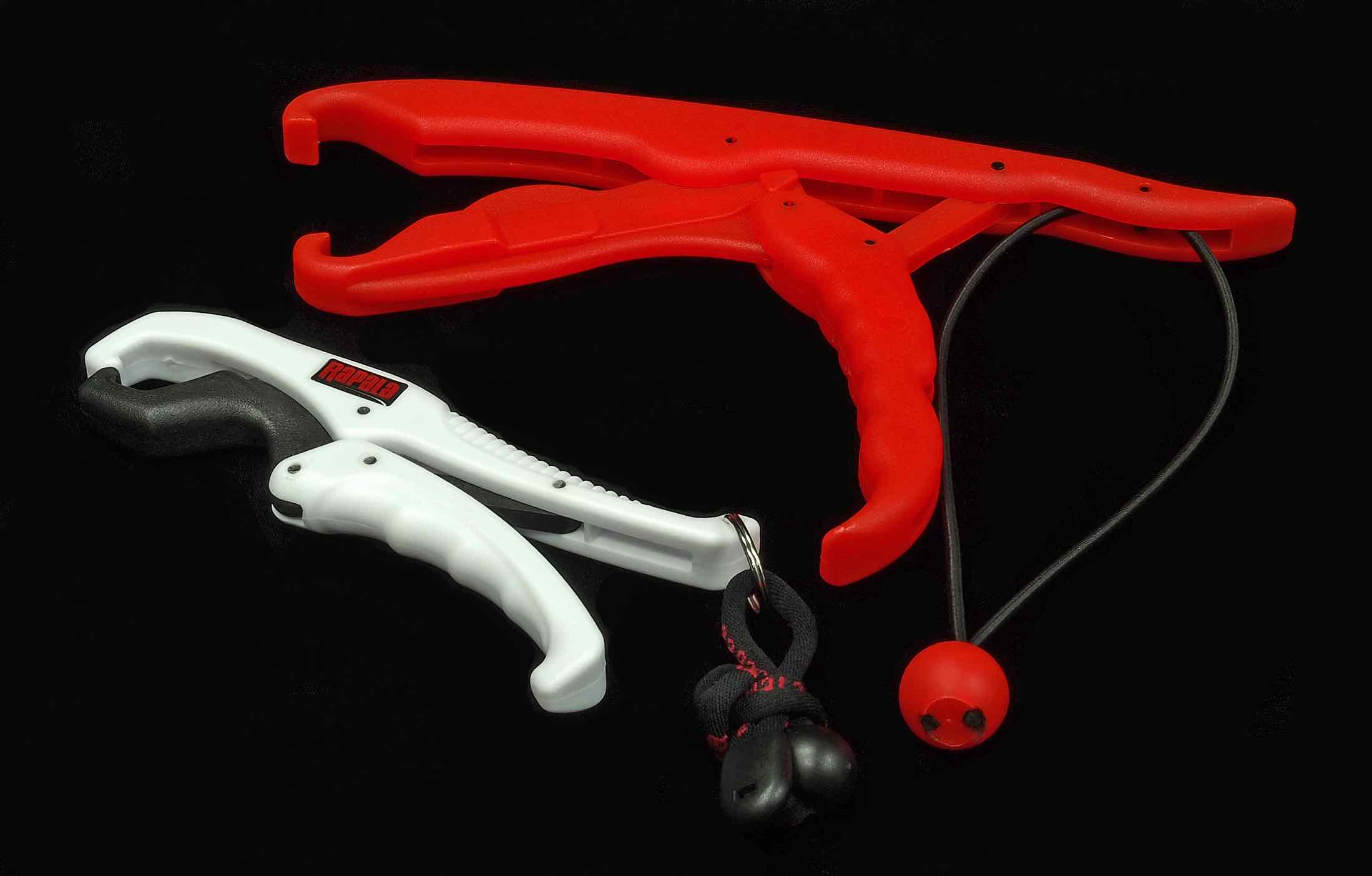 https://hooklineandsinker.ca/wp-content/uploads/2017/03/Plastic-Floating-Fish-Lip-Grabber-Assorted-BB.jpg
1403
2198
HLSAdmin
https://hooklineandsinker.ca/wp-content/uploads/2014/12/Steelheading-in-the-Snow-900-80-Not-Faded-Actual-1030x91.jpg
HLSAdmin2017-03-11 19:14:252017-09-27 00:08:05Plastic Floating Fish Lip Grabber
https://hooklineandsinker.ca/wp-content/uploads/2017/03/Plastic-Floating-Fish-Lip-Grabber-Assorted-BB.jpg
1403
2198
HLSAdmin
https://hooklineandsinker.ca/wp-content/uploads/2014/12/Steelheading-in-the-Snow-900-80-Not-Faded-Actual-1030x91.jpg
HLSAdmin2017-03-11 19:14:252017-09-27 00:08:05Plastic Floating Fish Lip Grabber https://hooklineandsinker.ca/wp-content/uploads/2017/08/Drop-Shot-Weights-AA.jpg
1286
2450
HLSAdmin
https://hooklineandsinker.ca/wp-content/uploads/2014/12/Steelheading-in-the-Snow-900-80-Not-Faded-Actual-1030x91.jpg
HLSAdmin2017-08-05 23:16:052017-08-05 23:19:21The Dropshot Weight
https://hooklineandsinker.ca/wp-content/uploads/2017/08/Drop-Shot-Weights-AA.jpg
1286
2450
HLSAdmin
https://hooklineandsinker.ca/wp-content/uploads/2014/12/Steelheading-in-the-Snow-900-80-Not-Faded-Actual-1030x91.jpg
HLSAdmin2017-08-05 23:16:052017-08-05 23:19:21The Dropshot Weight https://hooklineandsinker.ca/wp-content/uploads/2017/06/Fish-Carrier-BB.jpg
2310
1624
HLSAdmin
https://hooklineandsinker.ca/wp-content/uploads/2014/12/Steelheading-in-the-Snow-900-80-Not-Faded-Actual-1030x91.jpg
HLSAdmin2017-06-09 17:07:072017-06-10 19:07:26The Fish Carrier
https://hooklineandsinker.ca/wp-content/uploads/2017/06/Fish-Carrier-BB.jpg
2310
1624
HLSAdmin
https://hooklineandsinker.ca/wp-content/uploads/2014/12/Steelheading-in-the-Snow-900-80-Not-Faded-Actual-1030x91.jpg
HLSAdmin2017-06-09 17:07:072017-06-10 19:07:26The Fish Carrier https://hooklineandsinker.ca/wp-content/uploads/2017/07/Goat-Head-Gear-spool-clip-4_large-C.jpg
168
300
HLSAdmin
https://hooklineandsinker.ca/wp-content/uploads/2014/12/Steelheading-in-the-Snow-900-80-Not-Faded-Actual-1030x91.jpg
HLSAdmin2017-07-26 19:54:242017-12-04 13:33:38The Goat Head Gear Spool Clip
https://hooklineandsinker.ca/wp-content/uploads/2017/07/Goat-Head-Gear-spool-clip-4_large-C.jpg
168
300
HLSAdmin
https://hooklineandsinker.ca/wp-content/uploads/2014/12/Steelheading-in-the-Snow-900-80-Not-Faded-Actual-1030x91.jpg
HLSAdmin2017-07-26 19:54:242017-12-04 13:33:38The Goat Head Gear Spool Clip https://hooklineandsinker.ca/wp-content/uploads/2017/08/Fish-Scaler-AA.jpg
1760
2450
HLSAdmin
https://hooklineandsinker.ca/wp-content/uploads/2014/12/Steelheading-in-the-Snow-900-80-Not-Faded-Actual-1030x91.jpg
HLSAdmin2017-08-21 22:26:512017-08-21 22:26:51Fish Scaler
https://hooklineandsinker.ca/wp-content/uploads/2017/08/Fish-Scaler-AA.jpg
1760
2450
HLSAdmin
https://hooklineandsinker.ca/wp-content/uploads/2014/12/Steelheading-in-the-Snow-900-80-Not-Faded-Actual-1030x91.jpg
HLSAdmin2017-08-21 22:26:512017-08-21 22:26:51Fish Scaler https://hooklineandsinker.ca/wp-content/uploads/2017/07/Fishing-Hook-Hat-Pins-AAA.jpg
1170
1263
HLSAdmin
https://hooklineandsinker.ca/wp-content/uploads/2014/12/Steelheading-in-the-Snow-900-80-Not-Faded-Actual-1030x91.jpg
HLSAdmin2017-07-17 22:28:402020-08-01 20:58:30Fishing Hat Hook Pin or Fishing Tie Clasp
https://hooklineandsinker.ca/wp-content/uploads/2017/07/Fishing-Hook-Hat-Pins-AAA.jpg
1170
1263
HLSAdmin
https://hooklineandsinker.ca/wp-content/uploads/2014/12/Steelheading-in-the-Snow-900-80-Not-Faded-Actual-1030x91.jpg
HLSAdmin2017-07-17 22:28:402020-08-01 20:58:30Fishing Hat Hook Pin or Fishing Tie Clasp https://hooklineandsinker.ca/wp-content/uploads/2017/05/Fly-Fishing-for-Toothy-Musky-and-Pike-AA.jpg
1540
2450
HLSAdmin
https://hooklineandsinker.ca/wp-content/uploads/2014/12/Steelheading-in-the-Snow-900-80-Not-Faded-Actual-1030x91.jpg
HLSAdmin2017-05-21 15:07:282018-03-30 21:04:05Fly Fishing for Musky & Pike
https://hooklineandsinker.ca/wp-content/uploads/2017/05/Fly-Fishing-for-Toothy-Musky-and-Pike-AA.jpg
1540
2450
HLSAdmin
https://hooklineandsinker.ca/wp-content/uploads/2014/12/Steelheading-in-the-Snow-900-80-Not-Faded-Actual-1030x91.jpg
HLSAdmin2017-05-21 15:07:282018-03-30 21:04:05Fly Fishing for Musky & Pike https://hooklineandsinker.ca/wp-content/uploads/2017/04/Lee-Wulff-Wrist-Lock-BBB.jpg
1568
1588
HLSAdmin
https://hooklineandsinker.ca/wp-content/uploads/2014/12/Steelheading-in-the-Snow-900-80-Not-Faded-Actual-1030x91.jpg
HLSAdmin2017-04-13 22:12:222017-04-28 00:28:41Royal Wulff Wristlok
https://hooklineandsinker.ca/wp-content/uploads/2017/04/Lee-Wulff-Wrist-Lock-BBB.jpg
1568
1588
HLSAdmin
https://hooklineandsinker.ca/wp-content/uploads/2014/12/Steelheading-in-the-Snow-900-80-Not-Faded-Actual-1030x91.jpg
HLSAdmin2017-04-13 22:12:222017-04-28 00:28:41Royal Wulff Wristlok https://hooklineandsinker.ca/wp-content/uploads/2014/01/Trakmaps.jpg
205
246
Ray Collesso
https://hooklineandsinker.ca/wp-content/uploads/2014/12/Steelheading-in-the-Snow-900-80-Not-Faded-Actual-1030x91.jpg
Ray Collesso2014-01-19 02:30:442021-08-18 22:48:29TrakMaps Digital or Printed Charts – SAVE 25%!
https://hooklineandsinker.ca/wp-content/uploads/2014/01/Trakmaps.jpg
205
246
Ray Collesso
https://hooklineandsinker.ca/wp-content/uploads/2014/12/Steelheading-in-the-Snow-900-80-Not-Faded-Actual-1030x91.jpg
Ray Collesso2014-01-19 02:30:442021-08-18 22:48:29TrakMaps Digital or Printed Charts – SAVE 25%! https://hooklineandsinker.ca/wp-content/uploads/2015/02/Backroad-Mapbooks.png
179
281
HLSAdmin
https://hooklineandsinker.ca/wp-content/uploads/2014/12/Steelheading-in-the-Snow-900-80-Not-Faded-Actual-1030x91.jpg
HLSAdmin2015-02-20 12:42:422017-01-16 17:20:51Backroad Mapbooks – Topographic Depth Charts, Maps & Guide
https://hooklineandsinker.ca/wp-content/uploads/2015/02/Backroad-Mapbooks.png
179
281
HLSAdmin
https://hooklineandsinker.ca/wp-content/uploads/2014/12/Steelheading-in-the-Snow-900-80-Not-Faded-Actual-1030x91.jpg
HLSAdmin2015-02-20 12:42:422017-01-16 17:20:51Backroad Mapbooks – Topographic Depth Charts, Maps & Guide https://hooklineandsinker.ca/wp-content/uploads/2017/03/Wacky-Rigging-Tool.jpg
136
255
HLSAdmin
https://hooklineandsinker.ca/wp-content/uploads/2014/12/Steelheading-in-the-Snow-900-80-Not-Faded-Actual-1030x91.jpg
HLSAdmin2017-03-25 21:28:022017-10-04 00:01:21Wacky Rigging Tool
https://hooklineandsinker.ca/wp-content/uploads/2017/03/Wacky-Rigging-Tool.jpg
136
255
HLSAdmin
https://hooklineandsinker.ca/wp-content/uploads/2014/12/Steelheading-in-the-Snow-900-80-Not-Faded-Actual-1030x91.jpg
HLSAdmin2017-03-25 21:28:022017-10-04 00:01:21Wacky Rigging Tool https://hooklineandsinker.ca/wp-content/uploads/2016/02/Blakemore-Reel-Magic-Product-Image.jpg
500
500
HLSAdmin
https://hooklineandsinker.ca/wp-content/uploads/2014/12/Steelheading-in-the-Snow-900-80-Not-Faded-Actual-1030x91.jpg
HLSAdmin2016-02-08 21:09:322017-02-19 21:32:11Blakemore® Real Magic® Lubricants
https://hooklineandsinker.ca/wp-content/uploads/2016/02/Blakemore-Reel-Magic-Product-Image.jpg
500
500
HLSAdmin
https://hooklineandsinker.ca/wp-content/uploads/2014/12/Steelheading-in-the-Snow-900-80-Not-Faded-Actual-1030x91.jpg
HLSAdmin2016-02-08 21:09:322017-02-19 21:32:11Blakemore® Real Magic® Lubricants https://hooklineandsinker.ca/wp-content/uploads/2017/03/Dr-Slick-Fly-Tying-Tools-XBC-Series.jpg
225
225
HLSAdmin
https://hooklineandsinker.ca/wp-content/uploads/2014/12/Steelheading-in-the-Snow-900-80-Not-Faded-Actual-1030x91.jpg
HLSAdmin2017-03-19 01:32:572017-07-26 20:00:49Dr. Slick Fly Tying Tools XBC Series
https://hooklineandsinker.ca/wp-content/uploads/2017/03/Dr-Slick-Fly-Tying-Tools-XBC-Series.jpg
225
225
HLSAdmin
https://hooklineandsinker.ca/wp-content/uploads/2014/12/Steelheading-in-the-Snow-900-80-Not-Faded-Actual-1030x91.jpg
HLSAdmin2017-03-19 01:32:572017-07-26 20:00:49Dr. Slick Fly Tying Tools XBC Series https://hooklineandsinker.ca/wp-content/uploads/2017/02/Plano-Molding-Company-Plano-Tackle-Systems-logo.png
200
329
HLSAdmin
https://hooklineandsinker.ca/wp-content/uploads/2014/12/Steelheading-in-the-Snow-900-80-Not-Faded-Actual-1030x91.jpg
HLSAdmin2017-02-18 19:56:432017-02-18 19:58:28Plano Molding Company – Plano Tackle Systems
https://hooklineandsinker.ca/wp-content/uploads/2017/02/Plano-Molding-Company-Plano-Tackle-Systems-logo.png
200
329
HLSAdmin
https://hooklineandsinker.ca/wp-content/uploads/2014/12/Steelheading-in-the-Snow-900-80-Not-Faded-Actual-1030x91.jpg
HLSAdmin2017-02-18 19:56:432017-02-18 19:58:28Plano Molding Company – Plano Tackle Systems https://hooklineandsinker.ca/wp-content/uploads/2017/02/Cuda-logo.png
126
160
HLSAdmin
https://hooklineandsinker.ca/wp-content/uploads/2014/12/Steelheading-in-the-Snow-900-80-Not-Faded-Actual-1030x91.jpg
HLSAdmin2017-02-17 18:55:312017-02-18 21:41:21Cuda Fishing Products
https://hooklineandsinker.ca/wp-content/uploads/2017/02/Cuda-logo.png
126
160
HLSAdmin
https://hooklineandsinker.ca/wp-content/uploads/2014/12/Steelheading-in-the-Snow-900-80-Not-Faded-Actual-1030x91.jpg
HLSAdmin2017-02-17 18:55:312017-02-18 21:41:21Cuda Fishing Products https://hooklineandsinker.ca/wp-content/uploads/2015/10/OlympinA-Waterproof-Battery-Operated-Night-Floats-AA.jpg
1130
2198
HLSAdmin
https://hooklineandsinker.ca/wp-content/uploads/2014/12/Steelheading-in-the-Snow-900-80-Not-Faded-Actual-1030x91.jpg
HLSAdmin2015-10-01 23:11:042021-04-27 19:12:59Lighted Night Floats
https://hooklineandsinker.ca/wp-content/uploads/2015/10/OlympinA-Waterproof-Battery-Operated-Night-Floats-AA.jpg
1130
2198
HLSAdmin
https://hooklineandsinker.ca/wp-content/uploads/2014/12/Steelheading-in-the-Snow-900-80-Not-Faded-Actual-1030x91.jpg
HLSAdmin2015-10-01 23:11:042021-04-27 19:12:59Lighted Night Floats https://hooklineandsinker.ca/wp-content/uploads/2017/04/Innovative-Safety-Tools-logo.png
208
700
HLSAdmin
https://hooklineandsinker.ca/wp-content/uploads/2014/12/Steelheading-in-the-Snow-900-80-Not-Faded-Actual-1030x91.jpg
HLSAdmin2017-04-09 20:47:012020-12-27 21:07:58Astroplast – Innovative Safety Tools – FISHING – ANGLER FIRST AID KIT
https://hooklineandsinker.ca/wp-content/uploads/2017/04/Innovative-Safety-Tools-logo.png
208
700
HLSAdmin
https://hooklineandsinker.ca/wp-content/uploads/2014/12/Steelheading-in-the-Snow-900-80-Not-Faded-Actual-1030x91.jpg
HLSAdmin2017-04-09 20:47:012020-12-27 21:07:58Astroplast – Innovative Safety Tools – FISHING – ANGLER FIRST AID KIT https://hooklineandsinker.ca/wp-content/uploads/2017/11/Fuji-EZ-Keeper-Lindy-Hook-A-Loop-Hook-Keeper-Addition-AA.jpg
780
2450
HLSAdmin
https://hooklineandsinker.ca/wp-content/uploads/2014/12/Steelheading-in-the-Snow-900-80-Not-Faded-Actual-1030x91.jpg
HLSAdmin2017-11-12 13:19:512017-11-12 13:22:26Fuji EZ Keeper & Lindy Hook-A-Loop Hook Keeper Addition
https://hooklineandsinker.ca/wp-content/uploads/2017/11/Fuji-EZ-Keeper-Lindy-Hook-A-Loop-Hook-Keeper-Addition-AA.jpg
780
2450
HLSAdmin
https://hooklineandsinker.ca/wp-content/uploads/2014/12/Steelheading-in-the-Snow-900-80-Not-Faded-Actual-1030x91.jpg
HLSAdmin2017-11-12 13:19:512017-11-12 13:22:26Fuji EZ Keeper & Lindy Hook-A-Loop Hook Keeper Addition https://hooklineandsinker.ca/wp-content/uploads/2016/12/Mosquito-Shield-Kuus-Inc-logo-.png
204
247
HLSAdmin
https://hooklineandsinker.ca/wp-content/uploads/2014/12/Steelheading-in-the-Snow-900-80-Not-Faded-Actual-1030x91.jpg
HLSAdmin2016-12-04 22:24:112017-02-16 20:34:41Mosquito Shield™ – Kuus Inc. – PiACTIVE™
https://hooklineandsinker.ca/wp-content/uploads/2016/12/Mosquito-Shield-Kuus-Inc-logo-.png
204
247
HLSAdmin
https://hooklineandsinker.ca/wp-content/uploads/2014/12/Steelheading-in-the-Snow-900-80-Not-Faded-Actual-1030x91.jpg
HLSAdmin2016-12-04 22:24:112017-02-16 20:34:41Mosquito Shield™ – Kuus Inc. – PiACTIVE™ https://hooklineandsinker.ca/wp-content/uploads/2016/12/Simms-2017-Guide-Nipper-C.jpg
510
410
HLSAdmin
https://hooklineandsinker.ca/wp-content/uploads/2014/12/Steelheading-in-the-Snow-900-80-Not-Faded-Actual-1030x91.jpg
HLSAdmin2016-12-31 13:25:552017-12-04 13:38:45Simms Guide Nipper – Next-Generation – New for 2017
https://hooklineandsinker.ca/wp-content/uploads/2016/12/Simms-2017-Guide-Nipper-C.jpg
510
410
HLSAdmin
https://hooklineandsinker.ca/wp-content/uploads/2014/12/Steelheading-in-the-Snow-900-80-Not-Faded-Actual-1030x91.jpg
HLSAdmin2016-12-31 13:25:552017-12-04 13:38:45Simms Guide Nipper – Next-Generation – New for 2017 https://hooklineandsinker.ca/wp-content/uploads/2016/12/Assorted-Night-Fishing-Lighted-Floats-and-Accessories-Technium-Rod-Lights-DDD.jpg
2078
4032
HLSAdmin
https://hooklineandsinker.ca/wp-content/uploads/2014/12/Steelheading-in-the-Snow-900-80-Not-Faded-Actual-1030x91.jpg
HLSAdmin2016-12-27 21:21:352021-04-27 19:14:44Float Night Lights – Starlite Chemical Light Glow Sticks & Battery Operated Night Glow Lights
https://hooklineandsinker.ca/wp-content/uploads/2016/12/Assorted-Night-Fishing-Lighted-Floats-and-Accessories-Technium-Rod-Lights-DDD.jpg
2078
4032
HLSAdmin
https://hooklineandsinker.ca/wp-content/uploads/2014/12/Steelheading-in-the-Snow-900-80-Not-Faded-Actual-1030x91.jpg
HLSAdmin2016-12-27 21:21:352021-04-27 19:14:44Float Night Lights – Starlite Chemical Light Glow Sticks & Battery Operated Night Glow Lights https://hooklineandsinker.ca/wp-content/uploads/2015/02/Custom-HLS-Mamba-Steelhead-Float-Assortment-Bobber-Stops-CC.jpg
1280
960
HLSAdmin
https://hooklineandsinker.ca/wp-content/uploads/2014/12/Steelheading-in-the-Snow-900-80-Not-Faded-Actual-1030x91.jpg
HLSAdmin2015-02-28 22:53:562020-03-09 19:50:18Custom HLS “Mamba” Balsa Steelhead Floats
https://hooklineandsinker.ca/wp-content/uploads/2015/02/Custom-HLS-Mamba-Steelhead-Float-Assortment-Bobber-Stops-CC.jpg
1280
960
HLSAdmin
https://hooklineandsinker.ca/wp-content/uploads/2014/12/Steelheading-in-the-Snow-900-80-Not-Faded-Actual-1030x91.jpg
HLSAdmin2015-02-28 22:53:562020-03-09 19:50:18Custom HLS “Mamba” Balsa Steelhead Floats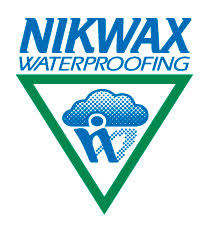 https://hooklineandsinker.ca/wp-content/uploads/2018/02/Nikwax-Logo.jpg
225
212
HLSAdmin
https://hooklineandsinker.ca/wp-content/uploads/2014/12/Steelheading-in-the-Snow-900-80-Not-Faded-Actual-1030x91.jpg
HLSAdmin2018-02-13 19:21:412020-07-09 22:53:25Nikwax
https://hooklineandsinker.ca/wp-content/uploads/2018/02/Nikwax-Logo.jpg
225
212
HLSAdmin
https://hooklineandsinker.ca/wp-content/uploads/2014/12/Steelheading-in-the-Snow-900-80-Not-Faded-Actual-1030x91.jpg
HLSAdmin2018-02-13 19:21:412020-07-09 22:53:25Nikwax https://hooklineandsinker.ca/wp-content/uploads/2016/09/Flambeau-Fishing-Logo.jpg
110
226
HLSAdmin
https://hooklineandsinker.ca/wp-content/uploads/2014/12/Steelheading-in-the-Snow-900-80-Not-Faded-Actual-1030x91.jpg
HLSAdmin2016-09-09 16:42:412017-02-12 19:02:35Flambeau Fishing Tackle & Fly Boxes
https://hooklineandsinker.ca/wp-content/uploads/2016/09/Flambeau-Fishing-Logo.jpg
110
226
HLSAdmin
https://hooklineandsinker.ca/wp-content/uploads/2014/12/Steelheading-in-the-Snow-900-80-Not-Faded-Actual-1030x91.jpg
HLSAdmin2016-09-09 16:42:412017-02-12 19:02:35Flambeau Fishing Tackle & Fly Boxes https://hooklineandsinker.ca/wp-content/uploads/2016/07/Simms-Replacement-Wading-Staff-Pouch-and-Retractor-AA.jpg
1320
3399
HLSAdmin
https://hooklineandsinker.ca/wp-content/uploads/2014/12/Steelheading-in-the-Snow-900-80-Not-Faded-Actual-1030x91.jpg
HLSAdmin2016-07-09 22:34:422017-02-18 19:45:01Simms Replacement Neoprene Wading Staff Pouch & Retractor
https://hooklineandsinker.ca/wp-content/uploads/2016/07/Simms-Replacement-Wading-Staff-Pouch-and-Retractor-AA.jpg
1320
3399
HLSAdmin
https://hooklineandsinker.ca/wp-content/uploads/2014/12/Steelheading-in-the-Snow-900-80-Not-Faded-Actual-1030x91.jpg
HLSAdmin2016-07-09 22:34:422017-02-18 19:45:01Simms Replacement Neoprene Wading Staff Pouch & Retractor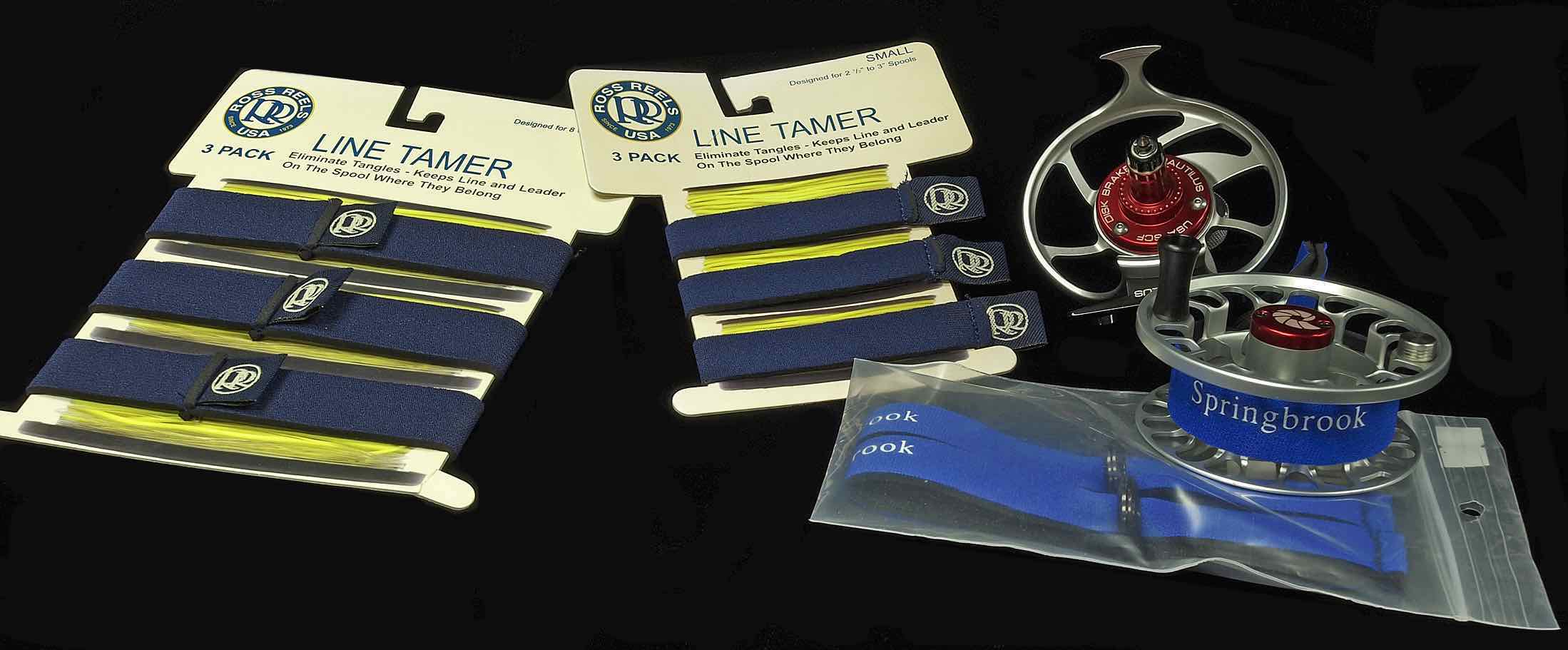 https://hooklineandsinker.ca/wp-content/uploads/2016/07/Ross-and-Springbrook-Fly-Reel-Line-Tamer-AAA.jpg
911
2198
HLSAdmin
https://hooklineandsinker.ca/wp-content/uploads/2014/12/Steelheading-in-the-Snow-900-80-Not-Faded-Actual-1030x91.jpg
HLSAdmin2016-07-09 22:11:312017-02-18 20:22:11Fishing Reel Spool Tenders, Line Tamers & Line Management Tools
https://hooklineandsinker.ca/wp-content/uploads/2016/07/Ross-and-Springbrook-Fly-Reel-Line-Tamer-AAA.jpg
911
2198
HLSAdmin
https://hooklineandsinker.ca/wp-content/uploads/2014/12/Steelheading-in-the-Snow-900-80-Not-Faded-Actual-1030x91.jpg
HLSAdmin2016-07-09 22:11:312017-02-18 20:22:11Fishing Reel Spool Tenders, Line Tamers & Line Management Tools https://hooklineandsinker.ca/wp-content/uploads/2016/07/Striper-Rapala-Digital-Scale-Luck-Craft-Lure-AAA.jpg
2504
2371
HLSAdmin
https://hooklineandsinker.ca/wp-content/uploads/2014/12/Steelheading-in-the-Snow-900-80-Not-Faded-Actual-1030x91.jpg
HLSAdmin2016-07-06 22:22:342017-04-22 12:32:00Digital & Manual Fish Scales & Fish Grippers
https://hooklineandsinker.ca/wp-content/uploads/2016/07/Striper-Rapala-Digital-Scale-Luck-Craft-Lure-AAA.jpg
2504
2371
HLSAdmin
https://hooklineandsinker.ca/wp-content/uploads/2014/12/Steelheading-in-the-Snow-900-80-Not-Faded-Actual-1030x91.jpg
HLSAdmin2016-07-06 22:22:342017-04-22 12:32:00Digital & Manual Fish Scales & Fish Grippers https://hooklineandsinker.ca/wp-content/uploads/2015/02/Steelhead-Float-Assortment-AAA-1.jpg
2053
2198
HLSAdmin
https://hooklineandsinker.ca/wp-content/uploads/2014/12/Steelheading-in-the-Snow-900-80-Not-Faded-Actual-1030x91.jpg
HLSAdmin2015-02-28 22:32:552020-03-09 19:51:22Rox Fishing Floats
https://hooklineandsinker.ca/wp-content/uploads/2015/02/Steelhead-Float-Assortment-AAA-1.jpg
2053
2198
HLSAdmin
https://hooklineandsinker.ca/wp-content/uploads/2014/12/Steelheading-in-the-Snow-900-80-Not-Faded-Actual-1030x91.jpg
HLSAdmin2015-02-28 22:32:552020-03-09 19:51:22Rox Fishing Floats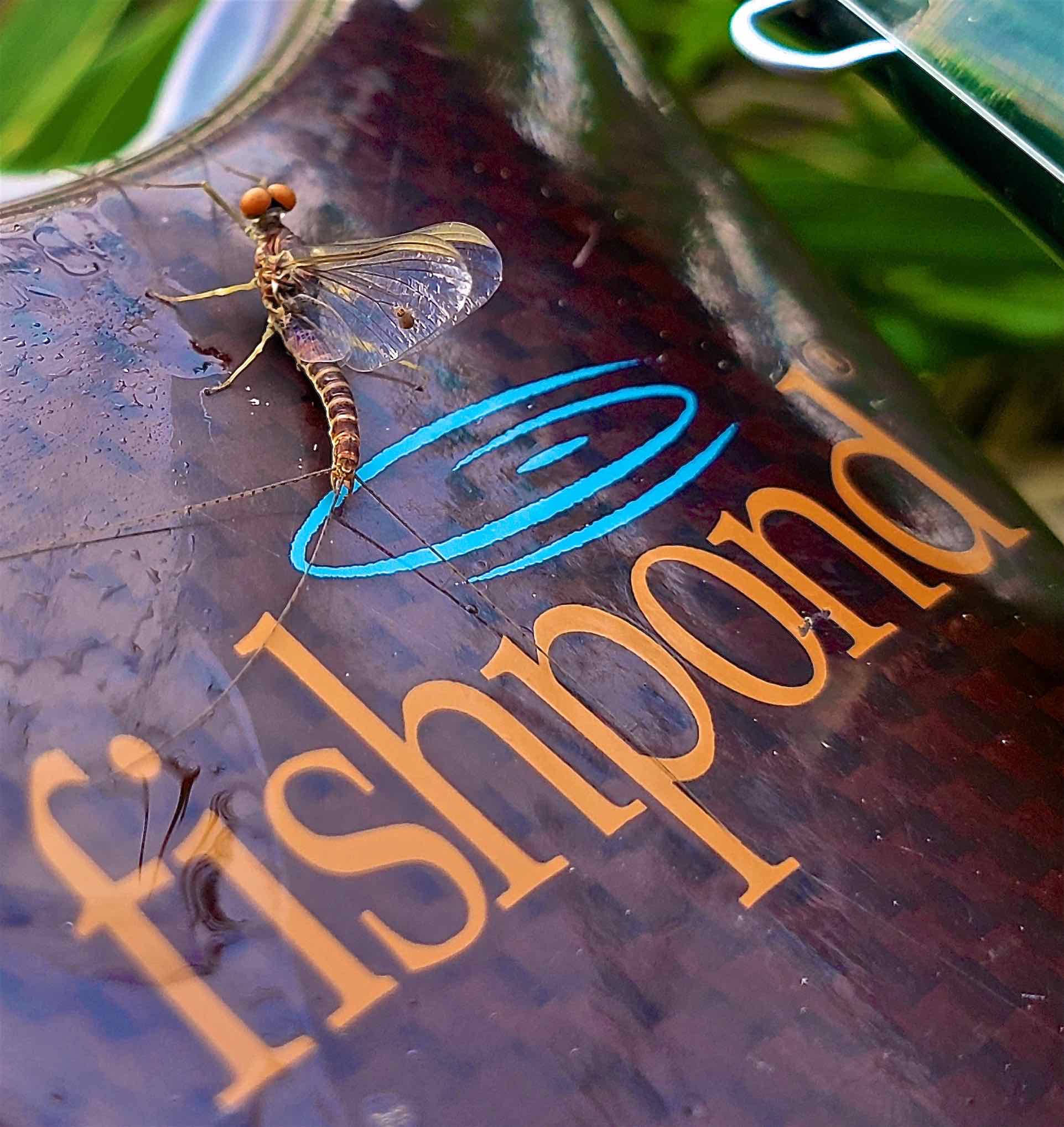 https://hooklineandsinker.ca/wp-content/uploads/2014/01/The-Upper-Grand-River-Hendrickson-Fishpond-Landing-Net-May-30th-2019-BBB.jpg
2036
1923
Ray Collesso
https://hooklineandsinker.ca/wp-content/uploads/2014/12/Steelheading-in-the-Snow-900-80-Not-Faded-Actual-1030x91.jpg
Ray Collesso2014-01-12 20:48:092019-06-02 23:14:41Fishpond – Packs, Fishing Vests, Bags, Luggage, Landing Nets & Accessories
https://hooklineandsinker.ca/wp-content/uploads/2014/01/The-Upper-Grand-River-Hendrickson-Fishpond-Landing-Net-May-30th-2019-BBB.jpg
2036
1923
Ray Collesso
https://hooklineandsinker.ca/wp-content/uploads/2014/12/Steelheading-in-the-Snow-900-80-Not-Faded-Actual-1030x91.jpg
Ray Collesso2014-01-12 20:48:092019-06-02 23:14:41Fishpond – Packs, Fishing Vests, Bags, Luggage, Landing Nets & Accessories https://hooklineandsinker.ca/wp-content/uploads/2016/01/Peter-Hayes-Stripper-Clip-B.jpg
279
400
HLSAdmin
https://hooklineandsinker.ca/wp-content/uploads/2014/12/Steelheading-in-the-Snow-900-80-Not-Faded-Actual-1030x91.jpg
HLSAdmin2016-01-29 18:39:322017-02-19 15:12:12The Peter Hayes Stripper Clip
https://hooklineandsinker.ca/wp-content/uploads/2016/01/Peter-Hayes-Stripper-Clip-B.jpg
279
400
HLSAdmin
https://hooklineandsinker.ca/wp-content/uploads/2014/12/Steelheading-in-the-Snow-900-80-Not-Faded-Actual-1030x91.jpg
HLSAdmin2016-01-29 18:39:322017-02-19 15:12:12The Peter Hayes Stripper Clip https://hooklineandsinker.ca/wp-content/uploads/2016/10/Raven-supersoft-lead-split-shot-1-Camo.jpg
4120
5826
HLSAdmin
https://hooklineandsinker.ca/wp-content/uploads/2014/12/Steelheading-in-the-Snow-900-80-Not-Faded-Actual-1030x91.jpg
HLSAdmin2016-10-06 23:59:382017-07-26 20:02:46RAVEN® Super Soft Shot – Camo Brown or Standard Raw Gray
https://hooklineandsinker.ca/wp-content/uploads/2016/10/Raven-supersoft-lead-split-shot-1-Camo.jpg
4120
5826
HLSAdmin
https://hooklineandsinker.ca/wp-content/uploads/2014/12/Steelheading-in-the-Snow-900-80-Not-Faded-Actual-1030x91.jpg
HLSAdmin2016-10-06 23:59:382017-07-26 20:02:46RAVEN® Super Soft Shot – Camo Brown or Standard Raw Gray https://hooklineandsinker.ca/wp-content/uploads/2015/09/Engel-Coolers-Image.png
62
197
HLSAdmin
https://hooklineandsinker.ca/wp-content/uploads/2014/12/Steelheading-in-the-Snow-900-80-Not-Faded-Actual-1030x91.jpg
HLSAdmin2015-09-19 14:35:512017-02-26 17:03:13Engel Coolers
https://hooklineandsinker.ca/wp-content/uploads/2015/09/Engel-Coolers-Image.png
62
197
HLSAdmin
https://hooklineandsinker.ca/wp-content/uploads/2014/12/Steelheading-in-the-Snow-900-80-Not-Faded-Actual-1030x91.jpg
HLSAdmin2015-09-19 14:35:512017-02-26 17:03:13Engel Coolers https://hooklineandsinker.ca/wp-content/uploads/2015/09/Yeti-Coolers-Image.jpg
184
184
HLSAdmin
https://hooklineandsinker.ca/wp-content/uploads/2014/12/Steelheading-in-the-Snow-900-80-Not-Faded-Actual-1030x91.jpg
HLSAdmin2015-09-19 10:18:462017-02-26 17:16:42Yeti Coolers
https://hooklineandsinker.ca/wp-content/uploads/2015/09/Yeti-Coolers-Image.jpg
184
184
HLSAdmin
https://hooklineandsinker.ca/wp-content/uploads/2014/12/Steelheading-in-the-Snow-900-80-Not-Faded-Actual-1030x91.jpg
HLSAdmin2015-09-19 10:18:462017-02-26 17:16:42Yeti Coolers https://hooklineandsinker.ca/wp-content/uploads/2015/02/Custom-Drennan-Loafer-Float-Caps-for-Extra-Visibilty-DD.jpg
1280
960
HLSAdmin
https://hooklineandsinker.ca/wp-content/uploads/2014/12/Steelheading-in-the-Snow-900-80-Not-Faded-Actual-1030x91.jpg
HLSAdmin2015-02-28 21:42:582020-03-09 19:53:17Custom HLS Hi-Vis Drennan Float Caps / Tubing
https://hooklineandsinker.ca/wp-content/uploads/2015/02/Custom-Drennan-Loafer-Float-Caps-for-Extra-Visibilty-DD.jpg
1280
960
HLSAdmin
https://hooklineandsinker.ca/wp-content/uploads/2014/12/Steelheading-in-the-Snow-900-80-Not-Faded-Actual-1030x91.jpg
HLSAdmin2015-02-28 21:42:582020-03-09 19:53:17Custom HLS Hi-Vis Drennan Float Caps / Tubing https://hooklineandsinker.ca/wp-content/uploads/2016/10/Baitcloud-logo.png
432
1200
HLSAdmin
https://hooklineandsinker.ca/wp-content/uploads/2014/12/Steelheading-in-the-Snow-900-80-Not-Faded-Actual-1030x91.jpg
HLSAdmin2016-10-24 20:25:472018-04-15 14:39:49BaitCloud
https://hooklineandsinker.ca/wp-content/uploads/2016/10/Baitcloud-logo.png
432
1200
HLSAdmin
https://hooklineandsinker.ca/wp-content/uploads/2014/12/Steelheading-in-the-Snow-900-80-Not-Faded-Actual-1030x91.jpg
HLSAdmin2016-10-24 20:25:472018-04-15 14:39:49BaitCloud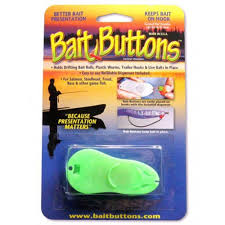 https://hooklineandsinker.ca/wp-content/uploads/2017/04/Bait-Buttons-Bait-Button-Dispenser-Logo.jpg
225
225
HLSAdmin
https://hooklineandsinker.ca/wp-content/uploads/2014/12/Steelheading-in-the-Snow-900-80-Not-Faded-Actual-1030x91.jpg
HLSAdmin2017-04-22 13:39:472017-12-04 13:40:44Bait Buttons
https://hooklineandsinker.ca/wp-content/uploads/2017/04/Bait-Buttons-Bait-Button-Dispenser-Logo.jpg
225
225
HLSAdmin
https://hooklineandsinker.ca/wp-content/uploads/2014/12/Steelheading-in-the-Snow-900-80-Not-Faded-Actual-1030x91.jpg
HLSAdmin2017-04-22 13:39:472017-12-04 13:40:44Bait Buttons https://hooklineandsinker.ca/wp-content/uploads/2015/03/MelNak-Baitmaker-Spawn-Netting.jpg
268
188
HLSAdmin
https://hooklineandsinker.ca/wp-content/uploads/2014/12/Steelheading-in-the-Snow-900-80-Not-Faded-Actual-1030x91.jpg
HLSAdmin2015-03-30 16:26:572017-02-21 20:21:01MelNak Tackle Spawn Tying Materials
https://hooklineandsinker.ca/wp-content/uploads/2015/03/MelNak-Baitmaker-Spawn-Netting.jpg
268
188
HLSAdmin
https://hooklineandsinker.ca/wp-content/uploads/2014/12/Steelheading-in-the-Snow-900-80-Not-Faded-Actual-1030x91.jpg
HLSAdmin2015-03-30 16:26:572017-02-21 20:21:01MelNak Tackle Spawn Tying Materials https://hooklineandsinker.ca/wp-content/uploads/2016/11/River-Master-Steelhead-Float-Assortment-AA.jpg
1089
2198
HLSAdmin
https://hooklineandsinker.ca/wp-content/uploads/2014/12/Steelheading-in-the-Snow-900-80-Not-Faded-Actual-1030x91.jpg
HLSAdmin2016-11-03 19:31:522020-03-09 19:51:38River Master Steelhead Fixed & Slip Floats
https://hooklineandsinker.ca/wp-content/uploads/2016/11/River-Master-Steelhead-Float-Assortment-AA.jpg
1089
2198
HLSAdmin
https://hooklineandsinker.ca/wp-content/uploads/2014/12/Steelheading-in-the-Snow-900-80-Not-Faded-Actual-1030x91.jpg
HLSAdmin2016-11-03 19:31:522020-03-09 19:51:38River Master Steelhead Fixed & Slip Floats https://hooklineandsinker.ca/wp-content/uploads/2014/10/raven-logo-B.jpg
75
304
HLSAdmin
https://hooklineandsinker.ca/wp-content/uploads/2014/12/Steelheading-in-the-Snow-900-80-Not-Faded-Actual-1030x91.jpg
HLSAdmin2015-02-28 23:59:572020-03-09 19:51:54RAVEN® Floats
https://hooklineandsinker.ca/wp-content/uploads/2014/10/raven-logo-B.jpg
75
304
HLSAdmin
https://hooklineandsinker.ca/wp-content/uploads/2014/12/Steelheading-in-the-Snow-900-80-Not-Faded-Actual-1030x91.jpg
HLSAdmin2015-02-28 23:59:572020-03-09 19:51:54RAVEN® Floats https://hooklineandsinker.ca/wp-content/uploads/2015/03/Carlisle-Floats-Drennan-Piker-Zeppler-A.jpg
1280
960
HLSAdmin
https://hooklineandsinker.ca/wp-content/uploads/2014/12/Steelheading-in-the-Snow-900-80-Not-Faded-Actual-1030x91.jpg
HLSAdmin2015-03-01 21:40:402020-03-09 19:52:11Carlisle Clear Floats
https://hooklineandsinker.ca/wp-content/uploads/2015/03/Carlisle-Floats-Drennan-Piker-Zeppler-A.jpg
1280
960
HLSAdmin
https://hooklineandsinker.ca/wp-content/uploads/2014/12/Steelheading-in-the-Snow-900-80-Not-Faded-Actual-1030x91.jpg
HLSAdmin2015-03-01 21:40:402020-03-09 19:52:11Carlisle Clear Floats https://hooklineandsinker.ca/wp-content/uploads/2015/10/Bubble-Floats-AA.jpg
1325
2198
HLSAdmin
https://hooklineandsinker.ca/wp-content/uploads/2014/12/Steelheading-in-the-Snow-900-80-Not-Faded-Actual-1030x91.jpg
HLSAdmin2015-10-10 22:41:302020-03-09 19:52:23Bubble Floats for a Fly
https://hooklineandsinker.ca/wp-content/uploads/2015/10/Bubble-Floats-AA.jpg
1325
2198
HLSAdmin
https://hooklineandsinker.ca/wp-content/uploads/2014/12/Steelheading-in-the-Snow-900-80-Not-Faded-Actual-1030x91.jpg
HLSAdmin2015-10-10 22:41:302020-03-09 19:52:23Bubble Floats for a Fly https://hooklineandsinker.ca/wp-content/uploads/2015/03/Redwing-Tackle-Logo.jpg
90
155
HLSAdmin
https://hooklineandsinker.ca/wp-content/uploads/2014/12/Steelheading-in-the-Snow-900-80-Not-Faded-Actual-1030x91.jpg
HLSAdmin2015-03-25 13:26:222017-03-13 17:53:45Redwing Tackle
https://hooklineandsinker.ca/wp-content/uploads/2015/03/Redwing-Tackle-Logo.jpg
90
155
HLSAdmin
https://hooklineandsinker.ca/wp-content/uploads/2014/12/Steelheading-in-the-Snow-900-80-Not-Faded-Actual-1030x91.jpg
HLSAdmin2015-03-25 13:26:222017-03-13 17:53:45Redwing Tackle https://hooklineandsinker.ca/wp-content/uploads/2014/01/Drennan-Logo.jpg
120
360
HLSAdmin
https://hooklineandsinker.ca/wp-content/uploads/2014/12/Steelheading-in-the-Snow-900-80-Not-Faded-Actual-1030x91.jpg
HLSAdmin2015-02-28 22:04:142020-03-09 19:52:43Drennan Floats
https://hooklineandsinker.ca/wp-content/uploads/2014/01/Drennan-Logo.jpg
120
360
HLSAdmin
https://hooklineandsinker.ca/wp-content/uploads/2014/12/Steelheading-in-the-Snow-900-80-Not-Faded-Actual-1030x91.jpg
HLSAdmin2015-02-28 22:04:142020-03-09 19:52:43Drennan Floats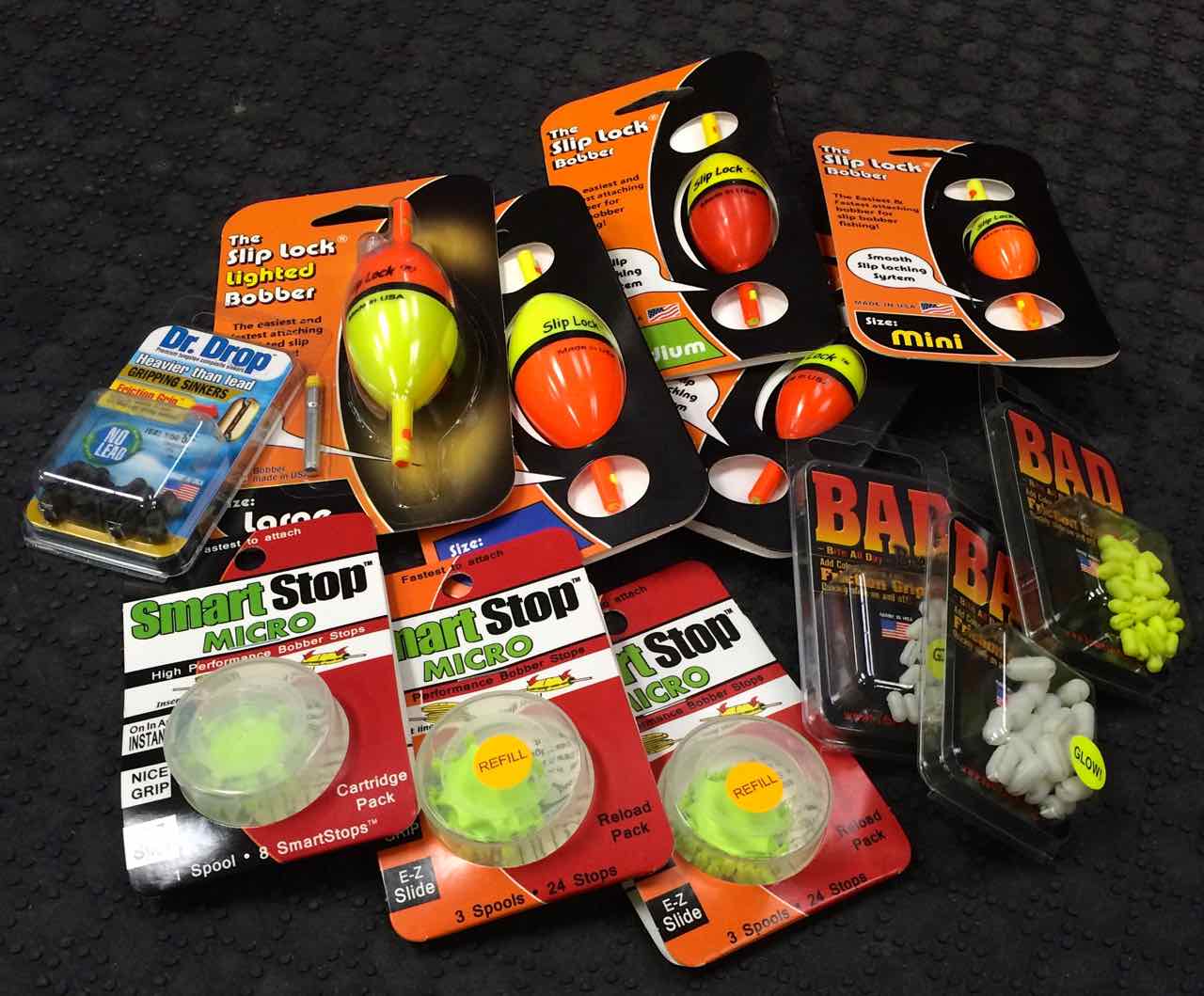 https://hooklineandsinker.ca/wp-content/uploads/2015/03/Clearly-Outdoors-Slip-Lock-Bobbers-BB.jpg
1059
1280
HLSAdmin
https://hooklineandsinker.ca/wp-content/uploads/2014/12/Steelheading-in-the-Snow-900-80-Not-Faded-Actual-1030x91.jpg
HLSAdmin2015-03-01 22:56:052020-03-09 19:52:59Clearly Outdoors Bobbers
https://hooklineandsinker.ca/wp-content/uploads/2015/03/Clearly-Outdoors-Slip-Lock-Bobbers-BB.jpg
1059
1280
HLSAdmin
https://hooklineandsinker.ca/wp-content/uploads/2014/12/Steelheading-in-the-Snow-900-80-Not-Faded-Actual-1030x91.jpg
HLSAdmin2015-03-01 22:56:052020-03-09 19:52:59Clearly Outdoors Bobbers https://hooklineandsinker.ca/wp-content/uploads/2014/06/Navionics-Marine-Charts-Logo.jpg
225
225
Ray Collesso
https://hooklineandsinker.ca/wp-content/uploads/2014/12/Steelheading-in-the-Snow-900-80-Not-Faded-Actual-1030x91.jpg
Ray Collesso2014-06-04 09:29:532016-09-09 17:25:14Navionics Marine & Lakes Charts
https://hooklineandsinker.ca/wp-content/uploads/2014/06/Navionics-Marine-Charts-Logo.jpg
225
225
Ray Collesso
https://hooklineandsinker.ca/wp-content/uploads/2014/12/Steelheading-in-the-Snow-900-80-Not-Faded-Actual-1030x91.jpg
Ray Collesso2014-06-04 09:29:532016-09-09 17:25:14Navionics Marine & Lakes Charts https://hooklineandsinker.ca/wp-content/uploads/2014/01/P-line-fishing-Logo.png
225
225
Ray Collesso
https://hooklineandsinker.ca/wp-content/uploads/2014/12/Steelheading-in-the-Snow-900-80-Not-Faded-Actual-1030x91.jpg
Ray Collesso2014-01-16 04:35:342019-01-01 19:12:45P-Line – G. Pucci & Sons, Inc.
https://hooklineandsinker.ca/wp-content/uploads/2014/01/P-line-fishing-Logo.png
225
225
Ray Collesso
https://hooklineandsinker.ca/wp-content/uploads/2014/12/Steelheading-in-the-Snow-900-80-Not-Faded-Actual-1030x91.jpg
Ray Collesso2014-01-16 04:35:342019-01-01 19:12:45P-Line – G. Pucci & Sons, Inc. https://hooklineandsinker.ca/wp-content/uploads/2015/02/Sabre-Wild-Product-Logo.png
102
192
HLSAdmin
https://hooklineandsinker.ca/wp-content/uploads/2014/12/Steelheading-in-the-Snow-900-80-Not-Faded-Actual-1030x91.jpg
HLSAdmin2015-02-13 17:34:252015-03-06 21:52:09Sabre Wild – Bear & Dog Attack Spray / Deterrent
https://hooklineandsinker.ca/wp-content/uploads/2015/02/Sabre-Wild-Product-Logo.png
102
192
HLSAdmin
https://hooklineandsinker.ca/wp-content/uploads/2014/12/Steelheading-in-the-Snow-900-80-Not-Faded-Actual-1030x91.jpg
HLSAdmin2015-02-13 17:34:252015-03-06 21:52:09Sabre Wild – Bear & Dog Attack Spray / Deterrent https://hooklineandsinker.ca/wp-content/uploads/2015/09/Stainless-Fishing-Plier-Assortment-AA.jpg
1369
2198
HLSAdmin
https://hooklineandsinker.ca/wp-content/uploads/2014/12/Steelheading-in-the-Snow-900-80-Not-Faded-Actual-1030x91.jpg
HLSAdmin2015-09-12 23:53:182018-07-07 19:53:44Saltwater Fishing Pliers
https://hooklineandsinker.ca/wp-content/uploads/2015/09/Stainless-Fishing-Plier-Assortment-AA.jpg
1369
2198
HLSAdmin
https://hooklineandsinker.ca/wp-content/uploads/2014/12/Steelheading-in-the-Snow-900-80-Not-Faded-Actual-1030x91.jpg
HLSAdmin2015-09-12 23:53:182018-07-07 19:53:44Saltwater Fishing Pliers https://hooklineandsinker.ca/wp-content/uploads/2016/02/Magnetic-Net-Retractors-BB.jpg
1290
2198
HLSAdmin
https://hooklineandsinker.ca/wp-content/uploads/2014/12/Steelheading-in-the-Snow-900-80-Not-Faded-Actual-1030x91.jpg
HLSAdmin2016-02-26 20:22:282017-04-10 20:42:53Magnetic Fishing Net Retractors
https://hooklineandsinker.ca/wp-content/uploads/2016/02/Magnetic-Net-Retractors-BB.jpg
1290
2198
HLSAdmin
https://hooklineandsinker.ca/wp-content/uploads/2014/12/Steelheading-in-the-Snow-900-80-Not-Faded-Actual-1030x91.jpg
HLSAdmin2016-02-26 20:22:282017-04-10 20:42:53Magnetic Fishing Net Retractors https://hooklineandsinker.ca/wp-content/uploads/2015/01/Fish-Hunter-FH-logo-horB-4-inch-screen-transparent.png
88
288
HLSAdmin
https://hooklineandsinker.ca/wp-content/uploads/2014/12/Steelheading-in-the-Snow-900-80-Not-Faded-Actual-1030x91.jpg
HLSAdmin2015-01-14 10:49:012017-04-10 20:38:53FishHunter Inc. Marine Electronics
https://hooklineandsinker.ca/wp-content/uploads/2015/01/Fish-Hunter-FH-logo-horB-4-inch-screen-transparent.png
88
288
HLSAdmin
https://hooklineandsinker.ca/wp-content/uploads/2014/12/Steelheading-in-the-Snow-900-80-Not-Faded-Actual-1030x91.jpg
HLSAdmin2015-01-14 10:49:012017-04-10 20:38:53FishHunter Inc. Marine Electronics https://hooklineandsinker.ca/wp-content/uploads/2018/09/Amundson-Outdoors-Canada-home_2.jpg
55
280
HLSAdmin
https://hooklineandsinker.ca/wp-content/uploads/2014/12/Steelheading-in-the-Snow-900-80-Not-Faded-Actual-1030x91.jpg
HLSAdmin2018-09-03 16:09:582018-09-03 16:09:58Amundson Outdoors Canada
https://hooklineandsinker.ca/wp-content/uploads/2018/09/Amundson-Outdoors-Canada-home_2.jpg
55
280
HLSAdmin
https://hooklineandsinker.ca/wp-content/uploads/2014/12/Steelheading-in-the-Snow-900-80-Not-Faded-Actual-1030x91.jpg
HLSAdmin2018-09-03 16:09:582018-09-03 16:09:58Amundson Outdoors Canada https://hooklineandsinker.ca/wp-content/uploads/2014/10/Rapala-Fishing-Logo.jpg
225
225
Ray Collesso
https://hooklineandsinker.ca/wp-content/uploads/2014/12/Steelheading-in-the-Snow-900-80-Not-Faded-Actual-1030x91.jpg
Ray Collesso2014-10-14 19:30:282017-01-26 20:27:00Rapala Fishing Rods, Reels, Lines & Lures
https://hooklineandsinker.ca/wp-content/uploads/2014/10/Rapala-Fishing-Logo.jpg
225
225
Ray Collesso
https://hooklineandsinker.ca/wp-content/uploads/2014/12/Steelheading-in-the-Snow-900-80-Not-Faded-Actual-1030x91.jpg
Ray Collesso2014-10-14 19:30:282017-01-26 20:27:00Rapala Fishing Rods, Reels, Lines & Lures https://hooklineandsinker.ca/wp-content/uploads/2014/03/3-Tand-Fly-Reels.jpg
164
244
Ray Collesso
https://hooklineandsinker.ca/wp-content/uploads/2014/12/Steelheading-in-the-Snow-900-80-Not-Faded-Actual-1030x91.jpg
Ray Collesso2014-03-22 20:27:372015-08-18 21:50:573-TAND Fly Reels
https://hooklineandsinker.ca/wp-content/uploads/2014/03/3-Tand-Fly-Reels.jpg
164
244
Ray Collesso
https://hooklineandsinker.ca/wp-content/uploads/2014/12/Steelheading-in-the-Snow-900-80-Not-Faded-Actual-1030x91.jpg
Ray Collesso2014-03-22 20:27:372015-08-18 21:50:573-TAND Fly Reels https://hooklineandsinker.ca/wp-content/uploads/2014/09/SimmsLogo.jpg
867
1500
Ray Collesso
https://hooklineandsinker.ca/wp-content/uploads/2014/12/Steelheading-in-the-Snow-900-80-Not-Faded-Actual-1030x91.jpg
Ray Collesso2014-09-05 23:48:072015-03-06 21:53:152015 Simms Wading Staff(s)
https://hooklineandsinker.ca/wp-content/uploads/2014/09/SimmsLogo.jpg
867
1500
Ray Collesso
https://hooklineandsinker.ca/wp-content/uploads/2014/12/Steelheading-in-the-Snow-900-80-Not-Faded-Actual-1030x91.jpg
Ray Collesso2014-09-05 23:48:072015-03-06 21:53:152015 Simms Wading Staff(s) https://hooklineandsinker.ca/wp-content/uploads/2014/08/Air-Lock-Strike-Indicator-Logo.png
209
365
Ray Collesso
https://hooklineandsinker.ca/wp-content/uploads/2014/12/Steelheading-in-the-Snow-900-80-Not-Faded-Actual-1030x91.jpg
Ray Collesso2014-08-07 16:49:112018-06-21 23:35:57Air-Lock Strike Indicators
https://hooklineandsinker.ca/wp-content/uploads/2014/08/Air-Lock-Strike-Indicator-Logo.png
209
365
Ray Collesso
https://hooklineandsinker.ca/wp-content/uploads/2014/12/Steelheading-in-the-Snow-900-80-Not-Faded-Actual-1030x91.jpg
Ray Collesso2014-08-07 16:49:112018-06-21 23:35:57Air-Lock Strike Indicators https://hooklineandsinker.ca/wp-content/uploads/2014/04/HLS-and-TFC-T-Shirts-AA.jpg
2198
1946
Ray Collesso
https://hooklineandsinker.ca/wp-content/uploads/2014/12/Steelheading-in-the-Snow-900-80-Not-Faded-Actual-1030x91.jpg
Ray Collesso2014-04-04 13:09:542017-02-12 18:57:59Custom Logo T-Shirts, Ball Caps, Hats & Much More…
https://hooklineandsinker.ca/wp-content/uploads/2014/04/HLS-and-TFC-T-Shirts-AA.jpg
2198
1946
Ray Collesso
https://hooklineandsinker.ca/wp-content/uploads/2014/12/Steelheading-in-the-Snow-900-80-Not-Faded-Actual-1030x91.jpg
Ray Collesso2014-04-04 13:09:542017-02-12 18:57:59Custom Logo T-Shirts, Ball Caps, Hats & Much More… https://hooklineandsinker.ca/wp-content/uploads/2015/02/Aquaseal-McNett-Product-image.jpg
225
225
HLSAdmin
https://hooklineandsinker.ca/wp-content/uploads/2014/12/Steelheading-in-the-Snow-900-80-Not-Faded-Actual-1030x91.jpg
HLSAdmin2015-02-13 18:27:142017-12-24 00:28:39Aquaseal by Gear Aid – McNett – Wader Leak Repair Options
https://hooklineandsinker.ca/wp-content/uploads/2015/02/Aquaseal-McNett-Product-image.jpg
225
225
HLSAdmin
https://hooklineandsinker.ca/wp-content/uploads/2014/12/Steelheading-in-the-Snow-900-80-Not-Faded-Actual-1030x91.jpg
HLSAdmin2015-02-13 18:27:142017-12-24 00:28:39Aquaseal by Gear Aid – McNett – Wader Leak Repair Options https://hooklineandsinker.ca/wp-content/uploads/2014/11/Clearly-Outdoors1.jpg
98
204
Ray Collesso
https://hooklineandsinker.ca/wp-content/uploads/2014/12/Steelheading-in-the-Snow-900-80-Not-Faded-Actual-1030x91.jpg
Ray Collesso2014-11-20 17:37:252015-03-06 21:59:33Dr. Drop Lead Free Sinkers by Clearly Outdoors
https://hooklineandsinker.ca/wp-content/uploads/2014/11/Clearly-Outdoors1.jpg
98
204
Ray Collesso
https://hooklineandsinker.ca/wp-content/uploads/2014/12/Steelheading-in-the-Snow-900-80-Not-Faded-Actual-1030x91.jpg
Ray Collesso2014-11-20 17:37:252015-03-06 21:59:33Dr. Drop Lead Free Sinkers by Clearly Outdoors https://hooklineandsinker.ca/wp-content/uploads/2014/01/New-Zealand-Strike-Indicators-Logo.jpg
161
314
Ray Collesso
https://hooklineandsinker.ca/wp-content/uploads/2014/12/Steelheading-in-the-Snow-900-80-Not-Faded-Actual-1030x91.jpg
Ray Collesso2014-01-26 11:17:312015-01-25 17:04:13New Zealand Strike Indicator.Com Strike Indicator System
https://hooklineandsinker.ca/wp-content/uploads/2014/01/New-Zealand-Strike-Indicators-Logo.jpg
161
314
Ray Collesso
https://hooklineandsinker.ca/wp-content/uploads/2014/12/Steelheading-in-the-Snow-900-80-Not-Faded-Actual-1030x91.jpg
Ray Collesso2014-01-26 11:17:312015-01-25 17:04:13New Zealand Strike Indicator.Com Strike Indicator System https://hooklineandsinker.ca/wp-content/uploads/2014/11/Orvis-Logo-2.jpg
208
208
Ray Collesso
https://hooklineandsinker.ca/wp-content/uploads/2014/12/Steelheading-in-the-Snow-900-80-Not-Faded-Actual-1030x91.jpg
Ray Collesso2014-11-02 14:15:312015-06-21 00:52:21Orvis Fly Fishing
https://hooklineandsinker.ca/wp-content/uploads/2014/11/Orvis-Logo-2.jpg
208
208
Ray Collesso
https://hooklineandsinker.ca/wp-content/uploads/2014/12/Steelheading-in-the-Snow-900-80-Not-Faded-Actual-1030x91.jpg
Ray Collesso2014-11-02 14:15:312015-06-21 00:52:21Orvis Fly Fishing https://hooklineandsinker.ca/wp-content/uploads/2015/01/OPST-Olympic-Peninsula-Skagit-Tactics-Logo.jpg
110
262
HLSAdmin
https://hooklineandsinker.ca/wp-content/uploads/2014/12/Steelheading-in-the-Snow-900-80-Not-Faded-Actual-1030x91.jpg
HLSAdmin2015-01-14 18:02:082017-01-08 20:12:58OPST – Olympic Peninsula Skagit Tactics
https://hooklineandsinker.ca/wp-content/uploads/2015/01/OPST-Olympic-Peninsula-Skagit-Tactics-Logo.jpg
110
262
HLSAdmin
https://hooklineandsinker.ca/wp-content/uploads/2014/12/Steelheading-in-the-Snow-900-80-Not-Faded-Actual-1030x91.jpg
HLSAdmin2015-01-14 18:02:082017-01-08 20:12:58OPST – Olympic Peninsula Skagit Tactics https://hooklineandsinker.ca/wp-content/uploads/2014/01/Cinch-Tie-Logo.jpg
172
172
Ray Collesso
https://hooklineandsinker.ca/wp-content/uploads/2014/12/Steelheading-in-the-Snow-900-80-Not-Faded-Actual-1030x91.jpg
Ray Collesso2014-01-16 03:42:312015-01-04 21:09:50Cinch Tie Fly Tying Tools
https://hooklineandsinker.ca/wp-content/uploads/2014/01/Cinch-Tie-Logo.jpg
172
172
Ray Collesso
https://hooklineandsinker.ca/wp-content/uploads/2014/12/Steelheading-in-the-Snow-900-80-Not-Faded-Actual-1030x91.jpg
Ray Collesso2014-01-16 03:42:312015-01-04 21:09:50Cinch Tie Fly Tying Tools https://hooklineandsinker.ca/wp-content/uploads/2014/09/SimmsLogo.jpg
867
1500
Ray Collesso
https://hooklineandsinker.ca/wp-content/uploads/2014/12/Steelheading-in-the-Snow-900-80-Not-Faded-Actual-1030x91.jpg
Ray Collesso2014-01-16 03:21:592016-07-21 19:31:24Simms Wading Staff Assortment
https://hooklineandsinker.ca/wp-content/uploads/2014/09/SimmsLogo.jpg
867
1500
Ray Collesso
https://hooklineandsinker.ca/wp-content/uploads/2014/12/Steelheading-in-the-Snow-900-80-Not-Faded-Actual-1030x91.jpg
Ray Collesso2014-01-16 03:21:592016-07-21 19:31:24Simms Wading Staff Assortment https://hooklineandsinker.ca/wp-content/uploads/2014/01/MONOMASTER-Line-Waste-Management-System-Fly-Tying-Tool-A.jpg
314
936
Ray Collesso
https://hooklineandsinker.ca/wp-content/uploads/2014/12/Steelheading-in-the-Snow-900-80-Not-Faded-Actual-1030x91.jpg
Ray Collesso2014-01-16 00:23:122021-06-02 18:28:51MONOMASTER Line Waste Management System Fly Tying Tool
https://hooklineandsinker.ca/wp-content/uploads/2014/01/MONOMASTER-Line-Waste-Management-System-Fly-Tying-Tool-A.jpg
314
936
Ray Collesso
https://hooklineandsinker.ca/wp-content/uploads/2014/12/Steelheading-in-the-Snow-900-80-Not-Faded-Actual-1030x91.jpg
Ray Collesso2014-01-16 00:23:122021-06-02 18:28:51MONOMASTER Line Waste Management System Fly Tying Tool https://hooklineandsinker.ca/wp-content/uploads/2014/01/Dr.-Slick-Fly-Fishing-Tools.jpg
110
128
Ray Collesso
https://hooklineandsinker.ca/wp-content/uploads/2014/12/Steelheading-in-the-Snow-900-80-Not-Faded-Actual-1030x91.jpg
Ray Collesso2014-01-15 22:25:562017-03-25 21:01:48Dr. Slick Company Fly Tying Tools
https://hooklineandsinker.ca/wp-content/uploads/2014/01/Dr.-Slick-Fly-Fishing-Tools.jpg
110
128
Ray Collesso
https://hooklineandsinker.ca/wp-content/uploads/2014/12/Steelheading-in-the-Snow-900-80-Not-Faded-Actual-1030x91.jpg
Ray Collesso2014-01-15 22:25:562017-03-25 21:01:48Dr. Slick Company Fly Tying Tools https://hooklineandsinker.ca/wp-content/uploads/2014/01/Catch-A-Hatch-product-image2-e1390249710725.jpg
120
197
Ray Collesso
https://hooklineandsinker.ca/wp-content/uploads/2014/12/Steelheading-in-the-Snow-900-80-Not-Faded-Actual-1030x91.jpg
Ray Collesso2014-01-14 22:01:482015-03-09 23:08:22Catch-A-Hatch Aquatic Insect Seine
https://hooklineandsinker.ca/wp-content/uploads/2014/01/Catch-A-Hatch-product-image2-e1390249710725.jpg
120
197
Ray Collesso
https://hooklineandsinker.ca/wp-content/uploads/2014/12/Steelheading-in-the-Snow-900-80-Not-Faded-Actual-1030x91.jpg
Ray Collesso2014-01-14 22:01:482015-03-09 23:08:22Catch-A-Hatch Aquatic Insect Seine https://hooklineandsinker.ca/wp-content/uploads/2015/02/Mosquito-Bug-Jacket-Fishing-Logo.jpg
213
237
HLSAdmin
https://hooklineandsinker.ca/wp-content/uploads/2014/12/Steelheading-in-the-Snow-900-80-Not-Faded-Actual-1030x91.jpg
HLSAdmin2015-02-13 16:32:582017-06-10 19:17:50Mosquito Bug Jackets, Bug Pants, Bug Gloves and Bug Sprays
https://hooklineandsinker.ca/wp-content/uploads/2015/02/Mosquito-Bug-Jacket-Fishing-Logo.jpg
213
237
HLSAdmin
https://hooklineandsinker.ca/wp-content/uploads/2014/12/Steelheading-in-the-Snow-900-80-Not-Faded-Actual-1030x91.jpg
HLSAdmin2015-02-13 16:32:582017-06-10 19:17:50Mosquito Bug Jackets, Bug Pants, Bug Gloves and Bug Sprays https://hooklineandsinker.ca/wp-content/uploads/2014/01/Froghair-Strike-Indicator-Assortment-AA.jpg
1303
2198
Ray Collesso
https://hooklineandsinker.ca/wp-content/uploads/2014/12/Steelheading-in-the-Snow-900-80-Not-Faded-Actual-1030x91.jpg
Ray Collesso2014-01-14 17:28:592016-09-08 18:47:19Froghair Strike Indicators
https://hooklineandsinker.ca/wp-content/uploads/2014/01/Froghair-Strike-Indicator-Assortment-AA.jpg
1303
2198
Ray Collesso
https://hooklineandsinker.ca/wp-content/uploads/2014/12/Steelheading-in-the-Snow-900-80-Not-Faded-Actual-1030x91.jpg
Ray Collesso2014-01-14 17:28:592016-09-08 18:47:19Froghair Strike Indicators https://hooklineandsinker.ca/wp-content/uploads/2014/01/Thill-Strike-Indicators.jpg
104
108
Ray Collesso
https://hooklineandsinker.ca/wp-content/uploads/2014/12/Steelheading-in-the-Snow-900-80-Not-Faded-Actual-1030x91.jpg
Ray Collesso2014-01-14 17:26:412015-03-09 22:44:32Thill Strike Indicators
https://hooklineandsinker.ca/wp-content/uploads/2014/01/Thill-Strike-Indicators.jpg
104
108
Ray Collesso
https://hooklineandsinker.ca/wp-content/uploads/2014/12/Steelheading-in-the-Snow-900-80-Not-Faded-Actual-1030x91.jpg
Ray Collesso2014-01-14 17:26:412015-03-09 22:44:32Thill Strike Indicators https://hooklineandsinker.ca/wp-content/uploads/2014/01/Cinch-Tie-Fly-Tying-Tool-Image.jpg
224
223
Ray Collesso
https://hooklineandsinker.ca/wp-content/uploads/2014/12/Steelheading-in-the-Snow-900-80-Not-Faded-Actual-1030x91.jpg
Ray Collesso2014-01-14 02:28:452015-01-04 21:07:15Cinch Tie Knot Tyer
https://hooklineandsinker.ca/wp-content/uploads/2014/01/Cinch-Tie-Fly-Tying-Tool-Image.jpg
224
223
Ray Collesso
https://hooklineandsinker.ca/wp-content/uploads/2014/12/Steelheading-in-the-Snow-900-80-Not-Faded-Actual-1030x91.jpg
Ray Collesso2014-01-14 02:28:452015-01-04 21:07:15Cinch Tie Knot Tyer https://hooklineandsinker.ca/wp-content/uploads/2014/01/Unibobbers-Strike-Indicators.gif
410
500
Ray Collesso
https://hooklineandsinker.ca/wp-content/uploads/2014/12/Steelheading-in-the-Snow-900-80-Not-Faded-Actual-1030x91.jpg
Ray Collesso2014-01-14 02:06:472015-03-09 22:46:45Unibobbers Strike Indicators
https://hooklineandsinker.ca/wp-content/uploads/2014/01/Unibobbers-Strike-Indicators.gif
410
500
Ray Collesso
https://hooklineandsinker.ca/wp-content/uploads/2014/12/Steelheading-in-the-Snow-900-80-Not-Faded-Actual-1030x91.jpg
Ray Collesso2014-01-14 02:06:472015-03-09 22:46:45Unibobbers Strike Indicators https://hooklineandsinker.ca/wp-content/uploads/2014/01/Airflo-Logo-2021.png
226
936
Ray Collesso
https://hooklineandsinker.ca/wp-content/uploads/2014/12/Steelheading-in-the-Snow-900-80-Not-Faded-Actual-1030x91.jpg
Ray Collesso2014-01-13 18:38:302020-09-14 21:58:04Airflow Fly Lines, Poly Leaders & Accessories.
https://hooklineandsinker.ca/wp-content/uploads/2014/01/Airflo-Logo-2021.png
226
936
Ray Collesso
https://hooklineandsinker.ca/wp-content/uploads/2014/12/Steelheading-in-the-Snow-900-80-Not-Faded-Actual-1030x91.jpg
Ray Collesso2014-01-13 18:38:302020-09-14 21:58:04Airflow Fly Lines, Poly Leaders & Accessories. https://hooklineandsinker.ca/wp-content/uploads/2014/01/REDINGTON-image.jpg
225
225
Ray Collesso
https://hooklineandsinker.ca/wp-content/uploads/2014/12/Steelheading-in-the-Snow-900-80-Not-Faded-Actual-1030x91.jpg
Ray Collesso2014-01-16 04:09:062017-01-14 23:53:53Redington Suspender Cushion for Fishing Waders
https://hooklineandsinker.ca/wp-content/uploads/2014/01/REDINGTON-image.jpg
225
225
Ray Collesso
https://hooklineandsinker.ca/wp-content/uploads/2014/12/Steelheading-in-the-Snow-900-80-Not-Faded-Actual-1030x91.jpg
Ray Collesso2014-01-16 04:09:062017-01-14 23:53:53Redington Suspender Cushion for Fishing Waders https://hooklineandsinker.ca/wp-content/uploads/2014/10/World-Famous-Logo1.jpg
60
108
Ray Collesso
https://hooklineandsinker.ca/wp-content/uploads/2014/12/Steelheading-in-the-Snow-900-80-Not-Faded-Actual-1030x91.jpg
Ray Collesso2014-10-08 08:25:562014-12-30 23:49:29Misty Mountain – World Famous Sales
https://hooklineandsinker.ca/wp-content/uploads/2014/10/World-Famous-Logo1.jpg
60
108
Ray Collesso
https://hooklineandsinker.ca/wp-content/uploads/2014/12/Steelheading-in-the-Snow-900-80-Not-Faded-Actual-1030x91.jpg
Ray Collesso2014-10-08 08:25:562014-12-30 23:49:29Misty Mountain – World Famous SalesServices
 https://hooklineandsinker.ca/wp-content/uploads/2023/03/IMG_0479-scaled.jpg
1749
2560
HLSAdmin
https://hooklineandsinker.ca/wp-content/uploads/2014/12/Steelheading-in-the-Snow-900-80-Not-Faded-Actual-1030x91.jpg
HLSAdmin2023-03-20 12:58:332023-03-20 16:51:51Retirement Announcement
https://hooklineandsinker.ca/wp-content/uploads/2023/03/IMG_0479-scaled.jpg
1749
2560
HLSAdmin
https://hooklineandsinker.ca/wp-content/uploads/2014/12/Steelheading-in-the-Snow-900-80-Not-Faded-Actual-1030x91.jpg
HLSAdmin2023-03-20 12:58:332023-03-20 16:51:51Retirement Announcement https://hooklineandsinker.ca/wp-content/uploads/2015/07/HLS-Custom-UV-Beads-and-HLS-Bead-Pegs-AA.jpg
1706
2448
Ray Collesso
https://hooklineandsinker.ca/wp-content/uploads/2014/12/Steelheading-in-the-Snow-900-80-Not-Faded-Actual-1030x91.jpg
Ray Collesso2014-11-24 16:01:142018-06-03 13:06:57HLS Custom UV Ultra Violet Steelhead Beads
https://hooklineandsinker.ca/wp-content/uploads/2015/07/HLS-Custom-UV-Beads-and-HLS-Bead-Pegs-AA.jpg
1706
2448
Ray Collesso
https://hooklineandsinker.ca/wp-content/uploads/2014/12/Steelheading-in-the-Snow-900-80-Not-Faded-Actual-1030x91.jpg
Ray Collesso2014-11-24 16:01:142018-06-03 13:06:57HLS Custom UV Ultra Violet Steelhead Beads https://hooklineandsinker.ca/wp-content/uploads/2014/10/Custom-HLS-Acrylic-Reel-Seat-Butt-Cap-and-Islander-Handle-Conversion-Replacement-A.jpg
270
360
Ray Collesso
https://hooklineandsinker.ca/wp-content/uploads/2014/12/Steelheading-in-the-Snow-900-80-Not-Faded-Actual-1030x91.jpg
Ray Collesso2014-10-15 22:24:142017-02-12 18:43:27Custom Reel Seats for Rod Building
https://hooklineandsinker.ca/wp-content/uploads/2014/10/Custom-HLS-Acrylic-Reel-Seat-Butt-Cap-and-Islander-Handle-Conversion-Replacement-A.jpg
270
360
Ray Collesso
https://hooklineandsinker.ca/wp-content/uploads/2014/12/Steelheading-in-the-Snow-900-80-Not-Faded-Actual-1030x91.jpg
Ray Collesso2014-10-15 22:24:142017-02-12 18:43:27Custom Reel Seats for Rod Building https://hooklineandsinker.ca/wp-content/uploads/2014/01/Custom-IMX-ST1562-cw-Jungle-Cock-Inlays-Resized-for-Web.jpg
2448
2448
Ray Collesso
https://hooklineandsinker.ca/wp-content/uploads/2014/12/Steelheading-in-the-Snow-900-80-Not-Faded-Actual-1030x91.jpg
Ray Collesso2014-01-08 11:51:302017-01-16 22:57:27Custom Rod Building, Rod Building Components and Custom Rod Parts
https://hooklineandsinker.ca/wp-content/uploads/2014/01/Custom-IMX-ST1562-cw-Jungle-Cock-Inlays-Resized-for-Web.jpg
2448
2448
Ray Collesso
https://hooklineandsinker.ca/wp-content/uploads/2014/12/Steelheading-in-the-Snow-900-80-Not-Faded-Actual-1030x91.jpg
Ray Collesso2014-01-08 11:51:302017-01-16 22:57:27Custom Rod Building, Rod Building Components and Custom Rod Parts https://hooklineandsinker.ca/wp-content/uploads/2016/08/GLX-Strip-and-Rebuild-Cork-Handle-with-Custom-Reel-Seat-and-Hook-Keeper-CCC.jpg
1871
4026
HLSAdmin
https://hooklineandsinker.ca/wp-content/uploads/2014/12/Steelheading-in-the-Snow-900-80-Not-Faded-Actual-1030x91.jpg
HLSAdmin2016-08-17 22:43:022018-08-06 14:52:52G. Loomis GLX & IMX Centerpin Float Rod Handle Conversion
https://hooklineandsinker.ca/wp-content/uploads/2016/08/GLX-Strip-and-Rebuild-Cork-Handle-with-Custom-Reel-Seat-and-Hook-Keeper-CCC.jpg
1871
4026
HLSAdmin
https://hooklineandsinker.ca/wp-content/uploads/2014/12/Steelheading-in-the-Snow-900-80-Not-Faded-Actual-1030x91.jpg
HLSAdmin2016-08-17 22:43:022018-08-06 14:52:52G. Loomis GLX & IMX Centerpin Float Rod Handle Conversion https://hooklineandsinker.ca/wp-content/uploads/2017/03/Sage-Method-6119-4X22-BBBB.jpg
530
360
HLSAdmin
https://hooklineandsinker.ca/wp-content/uploads/2014/12/Steelheading-in-the-Snow-900-80-Not-Faded-Actual-1030x91.jpg
HLSAdmin2017-03-05 00:01:112019-08-25 19:45:22Custom Acid Rod or Spiral Wrap Guides on Longer Baitcast Rods for Steelheading
https://hooklineandsinker.ca/wp-content/uploads/2017/03/Sage-Method-6119-4X22-BBBB.jpg
530
360
HLSAdmin
https://hooklineandsinker.ca/wp-content/uploads/2014/12/Steelheading-in-the-Snow-900-80-Not-Faded-Actual-1030x91.jpg
HLSAdmin2017-03-05 00:01:112019-08-25 19:45:22Custom Acid Rod or Spiral Wrap Guides on Longer Baitcast Rods for Steelheading https://hooklineandsinker.ca/wp-content/uploads/2014/10/Float-Centerpin-Reel-Bearings-B-Resized.jpg
1925
2448
Ray Collesso
https://hooklineandsinker.ca/wp-content/uploads/2014/12/Steelheading-in-the-Snow-900-80-Not-Faded-Actual-1030x91.jpg
Ray Collesso2014-10-21 22:58:282019-05-06 20:35:45Centerpin Float Reel & Fly Reel Bearing Replacement
https://hooklineandsinker.ca/wp-content/uploads/2014/10/Float-Centerpin-Reel-Bearings-B-Resized.jpg
1925
2448
Ray Collesso
https://hooklineandsinker.ca/wp-content/uploads/2014/12/Steelheading-in-the-Snow-900-80-Not-Faded-Actual-1030x91.jpg
Ray Collesso2014-10-21 22:58:282019-05-06 20:35:45Centerpin Float Reel & Fly Reel Bearing Replacement https://hooklineandsinker.ca/wp-content/uploads/2015/01/streamrunner3.jpg
333
500
HLSAdmin
https://hooklineandsinker.ca/wp-content/uploads/2014/12/Steelheading-in-the-Snow-900-80-Not-Faded-Actual-1030x91.jpg
HLSAdmin2015-01-08 19:04:342017-01-16 23:14:11Centerpin Float Reel Repairs
https://hooklineandsinker.ca/wp-content/uploads/2015/01/streamrunner3.jpg
333
500
HLSAdmin
https://hooklineandsinker.ca/wp-content/uploads/2014/12/Steelheading-in-the-Snow-900-80-Not-Faded-Actual-1030x91.jpg
HLSAdmin2015-01-08 19:04:342017-01-16 23:14:11Centerpin Float Reel Repairs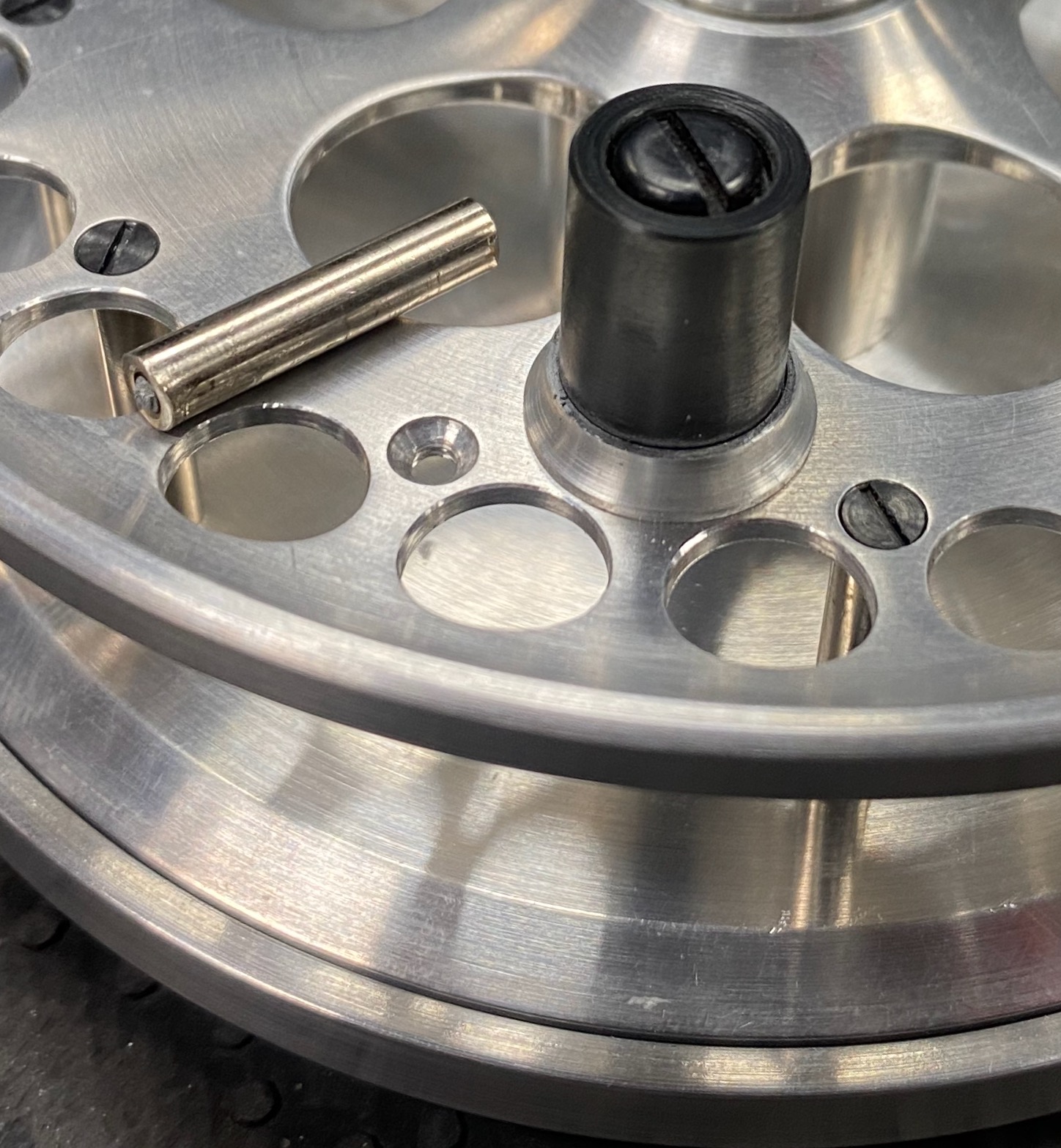 https://hooklineandsinker.ca/wp-content/uploads/2020/01/Stanton-Silver-Centerpin-Float-Reel-Broken-Spoke-AA.jpeg
1567
1448
HLSAdmin
https://hooklineandsinker.ca/wp-content/uploads/2014/12/Steelheading-in-the-Snow-900-80-Not-Faded-Actual-1030x91.jpg
HLSAdmin2020-01-12 18:11:322022-11-29 16:12:18Adcock Stanton Centerpin Float Reel Repairs
https://hooklineandsinker.ca/wp-content/uploads/2020/01/Stanton-Silver-Centerpin-Float-Reel-Broken-Spoke-AA.jpeg
1567
1448
HLSAdmin
https://hooklineandsinker.ca/wp-content/uploads/2014/12/Steelheading-in-the-Snow-900-80-Not-Faded-Actual-1030x91.jpg
HLSAdmin2020-01-12 18:11:322022-11-29 16:12:18Adcock Stanton Centerpin Float Reel Repairs https://hooklineandsinker.ca/wp-content/uploads/2015/03/Custom-Rod-Building-HLS-Mike-Rumig-02132016-AA.jpg
1458
1387
HLSAdmin
https://hooklineandsinker.ca/wp-content/uploads/2014/12/Steelheading-in-the-Snow-900-80-Not-Faded-Actual-1030x91.jpg
HLSAdmin2016-06-13 21:10:462018-11-14 23:20:56HLS Fishing Rod Building Classes
https://hooklineandsinker.ca/wp-content/uploads/2015/03/Custom-Rod-Building-HLS-Mike-Rumig-02132016-AA.jpg
1458
1387
HLSAdmin
https://hooklineandsinker.ca/wp-content/uploads/2014/12/Steelheading-in-the-Snow-900-80-Not-Faded-Actual-1030x91.jpg
HLSAdmin2016-06-13 21:10:462018-11-14 23:20:56HLS Fishing Rod Building Classes https://hooklineandsinker.ca/wp-content/uploads/2015/01/Custom-HLS-Float-Reel-Rosewood-Handles-Slainless-Palming-Ring-Red-Front-Resized-for-Web.jpg
2084
2147
HLSAdmin
https://hooklineandsinker.ca/wp-content/uploads/2014/12/Steelheading-in-the-Snow-900-80-Not-Faded-Actual-1030x91.jpg
HLSAdmin2015-01-08 18:21:292017-01-09 00:15:37Custom Made Centerpin Float Reels – One of a kind!
https://hooklineandsinker.ca/wp-content/uploads/2015/01/Custom-HLS-Float-Reel-Rosewood-Handles-Slainless-Palming-Ring-Red-Front-Resized-for-Web.jpg
2084
2147
HLSAdmin
https://hooklineandsinker.ca/wp-content/uploads/2014/12/Steelheading-in-the-Snow-900-80-Not-Faded-Actual-1030x91.jpg
HLSAdmin2015-01-08 18:21:292017-01-09 00:15:37Custom Made Centerpin Float Reels – One of a kind! https://hooklineandsinker.ca/wp-content/uploads/2014/02/Used-But-Not-Abused-Page-Image.jpg
160
160
Ray Collesso
https://hooklineandsinker.ca/wp-content/uploads/2014/12/Steelheading-in-the-Snow-900-80-Not-Faded-Actual-1030x91.jpg
Ray Collesso2014-02-19 17:26:492017-01-17 12:15:05Used But NOT Abused (UBNA)
https://hooklineandsinker.ca/wp-content/uploads/2014/02/Used-But-Not-Abused-Page-Image.jpg
160
160
Ray Collesso
https://hooklineandsinker.ca/wp-content/uploads/2014/12/Steelheading-in-the-Snow-900-80-Not-Faded-Actual-1030x91.jpg
Ray Collesso2014-02-19 17:26:492017-01-17 12:15:05Used But NOT Abused (UBNA) https://hooklineandsinker.ca/wp-content/uploads/2014/02/Weekly-Guest-Presenter-Button.jpg
224
225
Ray Collesso
https://hooklineandsinker.ca/wp-content/uploads/2014/12/Steelheading-in-the-Snow-900-80-Not-Faded-Actual-1030x91.jpg
Ray Collesso2014-02-17 19:43:022017-01-16 23:35:04Weekly Guest Tyer / Presenter Events – Sat. Noon to 3.
https://hooklineandsinker.ca/wp-content/uploads/2014/02/Weekly-Guest-Presenter-Button.jpg
224
225
Ray Collesso
https://hooklineandsinker.ca/wp-content/uploads/2014/12/Steelheading-in-the-Snow-900-80-Not-Faded-Actual-1030x91.jpg
Ray Collesso2014-02-17 19:43:022017-01-16 23:35:04Weekly Guest Tyer / Presenter Events – Sat. Noon to 3. https://hooklineandsinker.ca/wp-content/uploads/2014/03/Clearance-Page-Image.jpg
211
239
Ray Collesso
https://hooklineandsinker.ca/wp-content/uploads/2014/12/Steelheading-in-the-Snow-900-80-Not-Faded-Actual-1030x91.jpg
Ray Collesso2014-03-02 22:21:232017-02-12 14:38:52Clearance and Sale Items
https://hooklineandsinker.ca/wp-content/uploads/2014/03/Clearance-Page-Image.jpg
211
239
Ray Collesso
https://hooklineandsinker.ca/wp-content/uploads/2014/12/Steelheading-in-the-Snow-900-80-Not-Faded-Actual-1030x91.jpg
Ray Collesso2014-03-02 22:21:232017-02-12 14:38:52Clearance and Sale Items https://hooklineandsinker.ca/wp-content/uploads/2014/02/Warranty-Button.jpg
225
225
Ray Collesso
https://hooklineandsinker.ca/wp-content/uploads/2014/12/Steelheading-in-the-Snow-900-80-Not-Faded-Actual-1030x91.jpg
Ray Collesso2014-02-11 22:02:342017-01-16 22:37:06Warranty Repairs & Service
https://hooklineandsinker.ca/wp-content/uploads/2014/02/Warranty-Button.jpg
225
225
Ray Collesso
https://hooklineandsinker.ca/wp-content/uploads/2014/12/Steelheading-in-the-Snow-900-80-Not-Faded-Actual-1030x91.jpg
Ray Collesso2014-02-11 22:02:342017-01-16 22:37:06Warranty Repairs & Service https://hooklineandsinker.ca/wp-content/uploads/2015/03/Sage-One-Custom-7136B-6-Custom-Float-Rod-Build-with-Red-Zeppelin-with-Butt-Wrap-to-match.jpg
1894
2166
HLSAdmin
https://hooklineandsinker.ca/wp-content/uploads/2014/12/Steelheading-in-the-Snow-900-80-Not-Faded-Actual-1030x91.jpg
HLSAdmin2015-03-04 21:42:532017-02-12 18:28:25Custom Decorative Fishing Rod Butt Wraps
https://hooklineandsinker.ca/wp-content/uploads/2015/03/Sage-One-Custom-7136B-6-Custom-Float-Rod-Build-with-Red-Zeppelin-with-Butt-Wrap-to-match.jpg
1894
2166
HLSAdmin
https://hooklineandsinker.ca/wp-content/uploads/2014/12/Steelheading-in-the-Snow-900-80-Not-Faded-Actual-1030x91.jpg
HLSAdmin2015-03-04 21:42:532017-02-12 18:28:25Custom Decorative Fishing Rod Butt Wraps https://hooklineandsinker.ca/wp-content/uploads/2020/11/Wild-Salmon-C-and-R-Measuring-StickerA.jpg
768
1024
HLSAdmin
https://hooklineandsinker.ca/wp-content/uploads/2014/12/Steelheading-in-the-Snow-900-80-Not-Faded-Actual-1030x91.jpg
HLSAdmin2020-11-21 22:19:312023-03-20 16:52:41‘Wild Salmon’ C&R Measuring Sticker
https://hooklineandsinker.ca/wp-content/uploads/2020/11/Wild-Salmon-C-and-R-Measuring-StickerA.jpg
768
1024
HLSAdmin
https://hooklineandsinker.ca/wp-content/uploads/2014/12/Steelheading-in-the-Snow-900-80-Not-Faded-Actual-1030x91.jpg
HLSAdmin2020-11-21 22:19:312023-03-20 16:52:41‘Wild Salmon’ C&R Measuring Sticker https://hooklineandsinker.ca/wp-content/uploads/2014/02/HLS-TFC-Gift-Cards-AA.jpg
689
1707
Ray Collesso
https://hooklineandsinker.ca/wp-content/uploads/2014/12/Steelheading-in-the-Snow-900-80-Not-Faded-Actual-1030x91.jpg
Ray Collesso2014-02-14 23:20:332017-01-16 22:32:53Gift Cards & Gift Certificates are available in ANY Denomination
https://hooklineandsinker.ca/wp-content/uploads/2014/02/HLS-TFC-Gift-Cards-AA.jpg
689
1707
Ray Collesso
https://hooklineandsinker.ca/wp-content/uploads/2014/12/Steelheading-in-the-Snow-900-80-Not-Faded-Actual-1030x91.jpg
Ray Collesso2014-02-14 23:20:332017-01-16 22:32:53Gift Cards & Gift Certificates are available in ANY Denomination https://hooklineandsinker.ca/wp-content/uploads/2014/02/Accidental-Broken-Sage-Fly-Rod.jpg
1280
1280
Ray Collesso
https://hooklineandsinker.ca/wp-content/uploads/2014/12/Steelheading-in-the-Snow-900-80-Not-Faded-Actual-1030x91.jpg
Ray Collesso2014-02-13 22:56:372017-01-16 23:19:46Broken or Damaged Fishing Rod Repairs
https://hooklineandsinker.ca/wp-content/uploads/2014/02/Accidental-Broken-Sage-Fly-Rod.jpg
1280
1280
Ray Collesso
https://hooklineandsinker.ca/wp-content/uploads/2014/12/Steelheading-in-the-Snow-900-80-Not-Faded-Actual-1030x91.jpg
Ray Collesso2014-02-13 22:56:372017-01-16 23:19:46Broken or Damaged Fishing Rod Repairs https://hooklineandsinker.ca/wp-content/uploads/2014/03/Line-Spooling-Machine-Resized.jpg
1649
2198
Ray Collesso
https://hooklineandsinker.ca/wp-content/uploads/2014/12/Steelheading-in-the-Snow-900-80-Not-Faded-Actual-1030x91.jpg
Ray Collesso2014-03-02 15:59:012018-10-31 20:11:09Professional Line Winding / Spooling Machine – Bulk Monofilament, Braid and Float Reel Backing / Dacron
https://hooklineandsinker.ca/wp-content/uploads/2014/03/Line-Spooling-Machine-Resized.jpg
1649
2198
Ray Collesso
https://hooklineandsinker.ca/wp-content/uploads/2014/12/Steelheading-in-the-Snow-900-80-Not-Faded-Actual-1030x91.jpg
Ray Collesso2014-03-02 15:59:012018-10-31 20:11:09Professional Line Winding / Spooling Machine – Bulk Monofilament, Braid and Float Reel Backing / Dacron https://hooklineandsinker.ca/wp-content/uploads/2013/12/Swim-Tank.jpg
431
678
Ray Collesso
https://hooklineandsinker.ca/wp-content/uploads/2014/12/Steelheading-in-the-Snow-900-80-Not-Faded-Actual-1030x91.jpg
Ray Collesso2013-12-30 23:34:382017-02-06 00:28:22HLS / TFC Swim Tank – Fly Tester
https://hooklineandsinker.ca/wp-content/uploads/2013/12/Swim-Tank.jpg
431
678
Ray Collesso
https://hooklineandsinker.ca/wp-content/uploads/2014/12/Steelheading-in-the-Snow-900-80-Not-Faded-Actual-1030x91.jpg
Ray Collesso2013-12-30 23:34:382017-02-06 00:28:22HLS / TFC Swim Tank – Fly Tester https://hooklineandsinker.ca/wp-content/uploads/2014/03/Online-Sales-Button.jpg
215
235
Ray Collesso
https://hooklineandsinker.ca/wp-content/uploads/2014/12/Steelheading-in-the-Snow-900-80-Not-Faded-Actual-1030x91.jpg
Ray Collesso2014-03-02 13:45:372019-04-01 19:32:18Online Sales
https://hooklineandsinker.ca/wp-content/uploads/2014/03/Online-Sales-Button.jpg
215
235
Ray Collesso
https://hooklineandsinker.ca/wp-content/uploads/2014/12/Steelheading-in-the-Snow-900-80-Not-Faded-Actual-1030x91.jpg
Ray Collesso2014-03-02 13:45:372019-04-01 19:32:18Online Sales https://hooklineandsinker.ca/wp-content/uploads/2014/07/Wedding-Boutonniere-Bombanieri-Resized.jpg
1911
2584
Ray Collesso
https://hooklineandsinker.ca/wp-content/uploads/2014/12/Steelheading-in-the-Snow-900-80-Not-Faded-Actual-1030x91.jpg
Ray Collesso2014-07-02 21:25:062017-01-16 23:31:07Fishing Wedding Boutonnieres – Boutonniere, Gift & Keepsake – All 3 in ONE!
https://hooklineandsinker.ca/wp-content/uploads/2014/07/Wedding-Boutonniere-Bombanieri-Resized.jpg
1911
2584
Ray Collesso
https://hooklineandsinker.ca/wp-content/uploads/2014/12/Steelheading-in-the-Snow-900-80-Not-Faded-Actual-1030x91.jpg
Ray Collesso2014-07-02 21:25:062017-01-16 23:31:07Fishing Wedding Boutonnieres – Boutonniere, Gift & Keepsake – All 3 in ONE! https://hooklineandsinker.ca/wp-content/uploads/2013/12/Vintage-Spinning-Reels-Resized-for-Web.jpg
2448
3264
Ray Collesso
https://hooklineandsinker.ca/wp-content/uploads/2014/12/Steelheading-in-the-Snow-900-80-Not-Faded-Actual-1030x91.jpg
Ray Collesso2013-12-30 23:59:212017-01-16 22:39:13Fishing Reel Repairs – Have a Fishing Reel Sitting Idle Due To A River Mishap?
https://hooklineandsinker.ca/wp-content/uploads/2013/12/Vintage-Spinning-Reels-Resized-for-Web.jpg
2448
3264
Ray Collesso
https://hooklineandsinker.ca/wp-content/uploads/2014/12/Steelheading-in-the-Snow-900-80-Not-Faded-Actual-1030x91.jpg
Ray Collesso2013-12-30 23:59:212017-01-16 22:39:13Fishing Reel Repairs – Have a Fishing Reel Sitting Idle Due To A River Mishap? https://hooklineandsinker.ca/wp-content/uploads/2018/06/Cane-Bamboo-Rod-Prior-to-Refinish-AAA.jpg
2537
4032
HLSAdmin
https://hooklineandsinker.ca/wp-content/uploads/2014/12/Steelheading-in-the-Snow-900-80-Not-Faded-Actual-1030x91.jpg
HLSAdmin2018-06-03 19:57:342018-08-06 22:17:35Split Cane or Bamboo Fishing Rod Repairs
https://hooklineandsinker.ca/wp-content/uploads/2018/06/Cane-Bamboo-Rod-Prior-to-Refinish-AAA.jpg
2537
4032
HLSAdmin
https://hooklineandsinker.ca/wp-content/uploads/2014/12/Steelheading-in-the-Snow-900-80-Not-Faded-Actual-1030x91.jpg
HLSAdmin2018-06-03 19:57:342018-08-06 22:17:35Split Cane or Bamboo Fishing Rod Repairs https://hooklineandsinker.ca/wp-content/uploads/2016/02/Lip-Locked-Baits-Soft-Plastic-Assortment-AA.jpg
954
2198
HLSAdmin
https://hooklineandsinker.ca/wp-content/uploads/2014/12/Steelheading-in-the-Snow-900-80-Not-Faded-Actual-1030x91.jpg
HLSAdmin2016-05-20 19:34:452019-08-26 21:32:53Custom Poured Salt Impregnated Soft Plastics
https://hooklineandsinker.ca/wp-content/uploads/2016/02/Lip-Locked-Baits-Soft-Plastic-Assortment-AA.jpg
954
2198
HLSAdmin
https://hooklineandsinker.ca/wp-content/uploads/2014/12/Steelheading-in-the-Snow-900-80-Not-Faded-Actual-1030x91.jpg
HLSAdmin2016-05-20 19:34:452019-08-26 21:32:53Custom Poured Salt Impregnated Soft Plastics https://hooklineandsinker.ca/wp-content/uploads/2017/03/Simms-customshop.png
506
1000
HLSAdmin
https://hooklineandsinker.ca/wp-content/uploads/2014/12/Steelheading-in-the-Snow-900-80-Not-Faded-Actual-1030x91.jpg
HLSAdmin2017-03-12 18:43:112019-04-24 19:11:49Simms Custom Breathable Wader Options
https://hooklineandsinker.ca/wp-content/uploads/2017/03/Simms-customshop.png
506
1000
HLSAdmin
https://hooklineandsinker.ca/wp-content/uploads/2014/12/Steelheading-in-the-Snow-900-80-Not-Faded-Actual-1030x91.jpg
HLSAdmin2017-03-12 18:43:112019-04-24 19:11:49Simms Custom Breathable Wader Options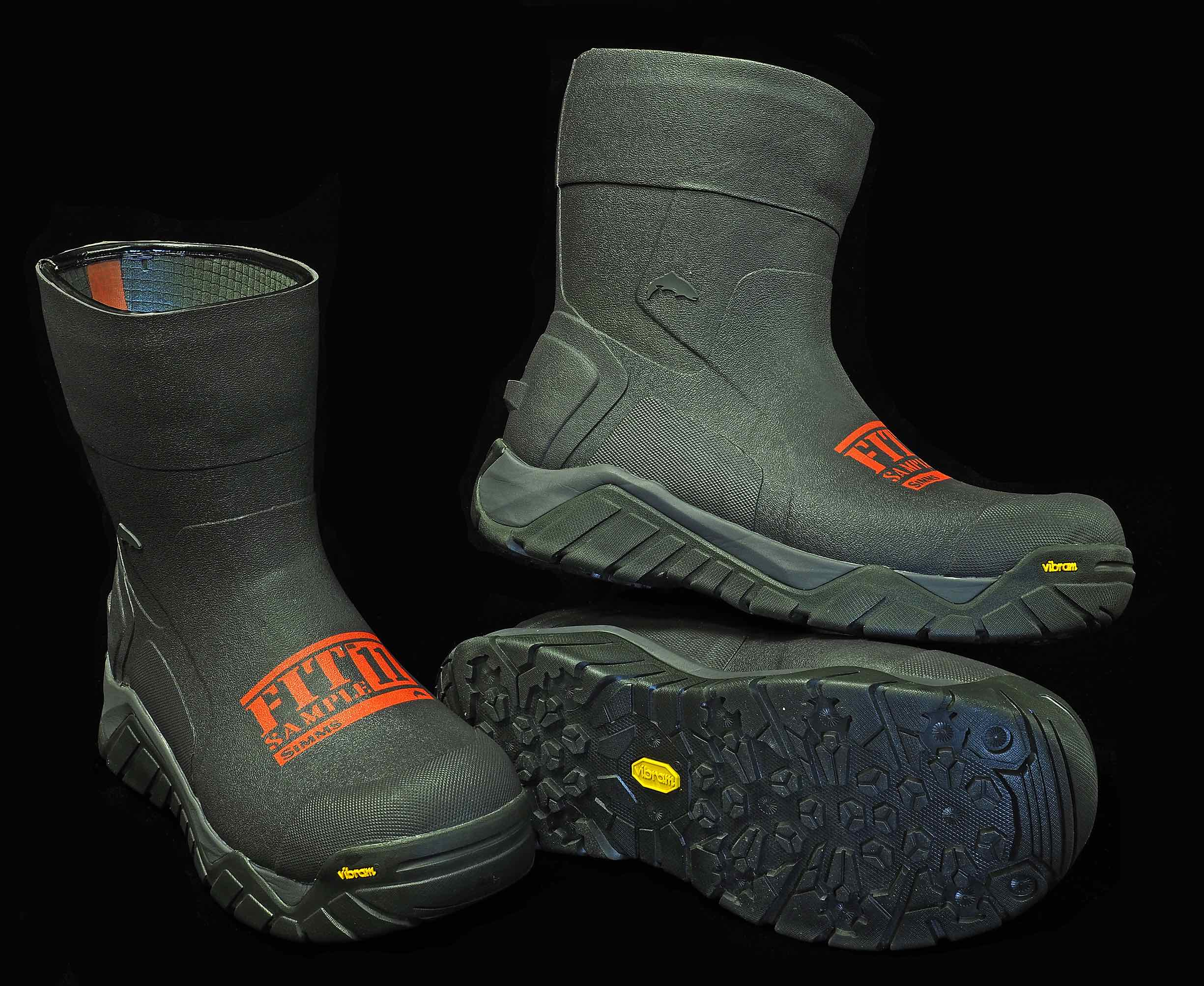 https://hooklineandsinker.ca/wp-content/uploads/2017/09/2017-Simms-Vibram-Boot-Fit-Kit-AA.jpg
2007
2450
HLSAdmin
https://hooklineandsinker.ca/wp-content/uploads/2014/12/Steelheading-in-the-Snow-900-80-Not-Faded-Actual-1030x91.jpg
HLSAdmin2017-09-02 23:20:492018-12-02 00:28:39Simms Vibram Boot Fit Kit
https://hooklineandsinker.ca/wp-content/uploads/2017/09/2017-Simms-Vibram-Boot-Fit-Kit-AA.jpg
2007
2450
HLSAdmin
https://hooklineandsinker.ca/wp-content/uploads/2014/12/Steelheading-in-the-Snow-900-80-Not-Faded-Actual-1030x91.jpg
HLSAdmin2017-09-02 23:20:492018-12-02 00:28:39Simms Vibram Boot Fit Kit https://hooklineandsinker.ca/wp-content/uploads/2016/06/Baitcast-professional-over-run-A.jpg
1616
1685
HLSAdmin
https://hooklineandsinker.ca/wp-content/uploads/2014/12/Steelheading-in-the-Snow-900-80-Not-Faded-Actual-1030x91.jpg
HLSAdmin2016-06-11 23:21:412019-07-24 18:56:04Baitcasting Lessons – Using a Baitcaster 101
https://hooklineandsinker.ca/wp-content/uploads/2016/06/Baitcast-professional-over-run-A.jpg
1616
1685
HLSAdmin
https://hooklineandsinker.ca/wp-content/uploads/2014/12/Steelheading-in-the-Snow-900-80-Not-Faded-Actual-1030x91.jpg
HLSAdmin2016-06-11 23:21:412019-07-24 18:56:04Baitcasting Lessons – Using a Baitcaster 101 https://hooklineandsinker.ca/wp-content/uploads/2015/06/Custom-Feathered-Treble-Hooks-AA.jpg
1339
2198
HLSAdmin
https://hooklineandsinker.ca/wp-content/uploads/2014/12/Steelheading-in-the-Snow-900-80-Not-Faded-Actual-1030x91.jpg
HLSAdmin2015-06-18 22:51:202017-12-23 22:20:15Custom Feathering
https://hooklineandsinker.ca/wp-content/uploads/2015/06/Custom-Feathered-Treble-Hooks-AA.jpg
1339
2198
HLSAdmin
https://hooklineandsinker.ca/wp-content/uploads/2014/12/Steelheading-in-the-Snow-900-80-Not-Faded-Actual-1030x91.jpg
HLSAdmin2015-06-18 22:51:202017-12-23 22:20:15Custom Feathering https://hooklineandsinker.ca/wp-content/uploads/2014/04/HLS-and-TFC-T-Shirts-AA.jpg
2198
1946
Ray Collesso
https://hooklineandsinker.ca/wp-content/uploads/2014/12/Steelheading-in-the-Snow-900-80-Not-Faded-Actual-1030x91.jpg
Ray Collesso2014-04-04 13:09:542017-02-12 18:57:59Custom Logo T-Shirts, Ball Caps, Hats & Much More…
https://hooklineandsinker.ca/wp-content/uploads/2014/04/HLS-and-TFC-T-Shirts-AA.jpg
2198
1946
Ray Collesso
https://hooklineandsinker.ca/wp-content/uploads/2014/12/Steelheading-in-the-Snow-900-80-Not-Faded-Actual-1030x91.jpg
Ray Collesso2014-04-04 13:09:542017-02-12 18:57:59Custom Logo T-Shirts, Ball Caps, Hats & Much More… https://hooklineandsinker.ca/wp-content/uploads/2014/01/Spey-Head-Loaner-Program-Airflo-AA.jpg
1528
2198
Ray Collesso
https://hooklineandsinker.ca/wp-content/uploads/2014/12/Steelheading-in-the-Snow-900-80-Not-Faded-Actual-1030x91.jpg
Ray Collesso2014-01-08 11:35:152022-04-18 13:28:29Spey Head Loaner Program (Airflo / RIO / OPST / Scientific Anglers)
https://hooklineandsinker.ca/wp-content/uploads/2014/01/Spey-Head-Loaner-Program-Airflo-AA.jpg
1528
2198
Ray Collesso
https://hooklineandsinker.ca/wp-content/uploads/2014/12/Steelheading-in-the-Snow-900-80-Not-Faded-Actual-1030x91.jpg
Ray Collesso2014-01-08 11:35:152022-04-18 13:28:29Spey Head Loaner Program (Airflo / RIO / OPST / Scientific Anglers) https://hooklineandsinker.ca/wp-content/uploads/2013/12/Fly-Line-Welding-Repair-Machine-Sage-6010-Fly-Reel-AAA.jpg
2070
2448
Ray Collesso
https://hooklineandsinker.ca/wp-content/uploads/2014/12/Steelheading-in-the-Snow-900-80-Not-Faded-Actual-1030x91.jpg
Ray Collesso2013-12-30 23:35:552022-03-18 22:36:39Airflo Line Welding & Repair Machine – SERVICE DISCONTINUED.
https://hooklineandsinker.ca/wp-content/uploads/2013/12/Fly-Line-Welding-Repair-Machine-Sage-6010-Fly-Reel-AAA.jpg
2070
2448
Ray Collesso
https://hooklineandsinker.ca/wp-content/uploads/2014/12/Steelheading-in-the-Snow-900-80-Not-Faded-Actual-1030x91.jpg
Ray Collesso2013-12-30 23:35:552022-03-18 22:36:39Airflo Line Welding & Repair Machine – SERVICE DISCONTINUED. https://hooklineandsinker.ca/wp-content/uploads/2017/01/mudhole-logo.jpg
181
192
HLSAdmin
https://hooklineandsinker.ca/wp-content/uploads/2014/12/Steelheading-in-the-Snow-900-80-Not-Faded-Actual-1030x91.jpg
HLSAdmin2017-01-15 17:21:162022-04-18 13:28:07Mud Hole Rod Building & Tackle Crafting
https://hooklineandsinker.ca/wp-content/uploads/2017/01/mudhole-logo.jpg
181
192
HLSAdmin
https://hooklineandsinker.ca/wp-content/uploads/2014/12/Steelheading-in-the-Snow-900-80-Not-Faded-Actual-1030x91.jpg
HLSAdmin2017-01-15 17:21:162022-04-18 13:28:07Mud Hole Rod Building & Tackle CraftingWe are the leading provider of Fly Fishing Lessons, Corporate Team Building, and Guiding on the Upper Grand River, the Upper Credit River, and the Conestogo River.
No Guelph, Fergus, Kitchener or Cambridge Fishing Tackle Retailer will boast as complete and diverse a store inventory, including a vast selection of Centerpin / Float Fishing Reels, Rods, Clothing and Accessories.
Order a HLS or TFC Gift Card – We will put one in the mail for FREE!




